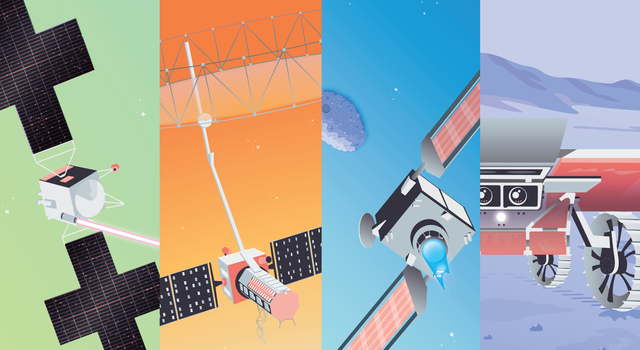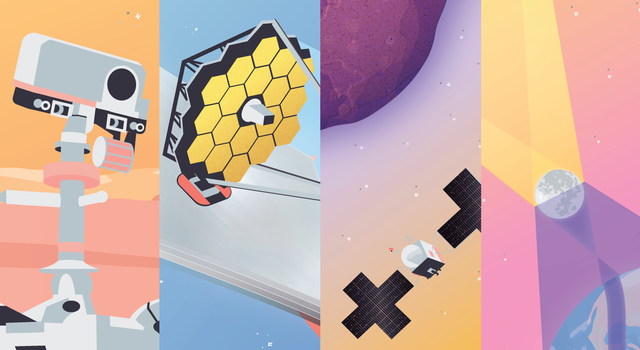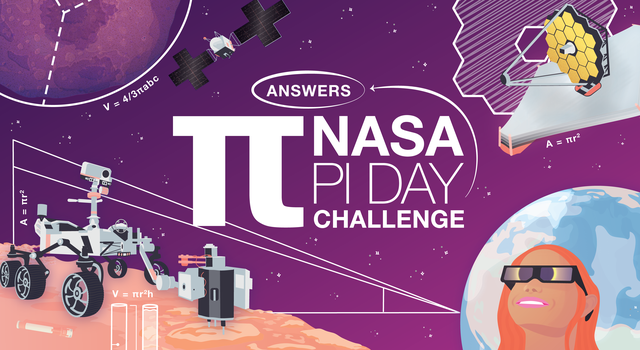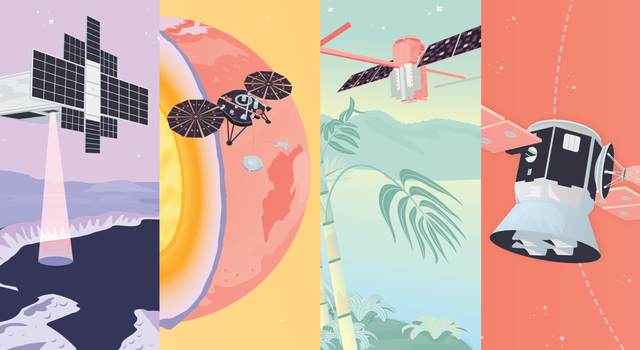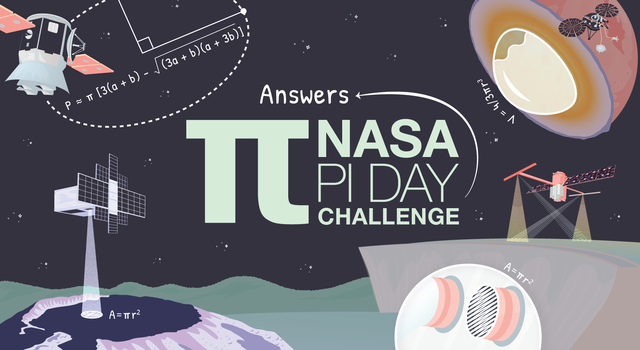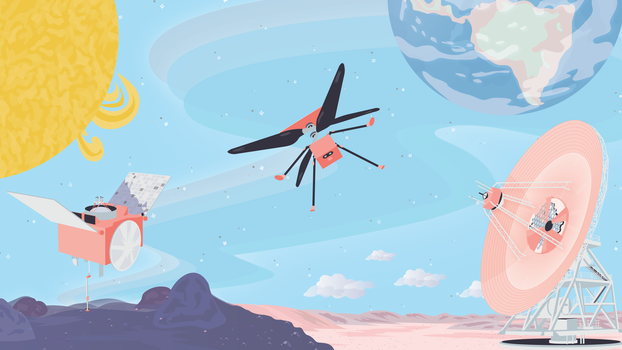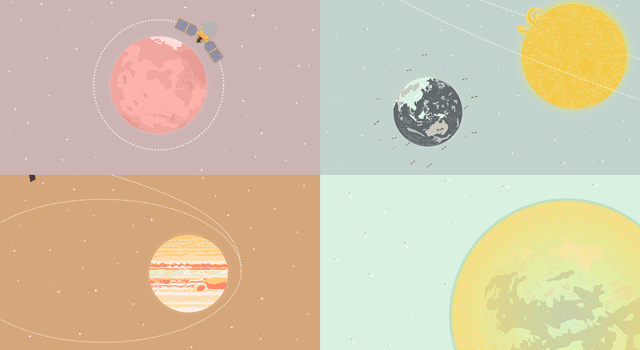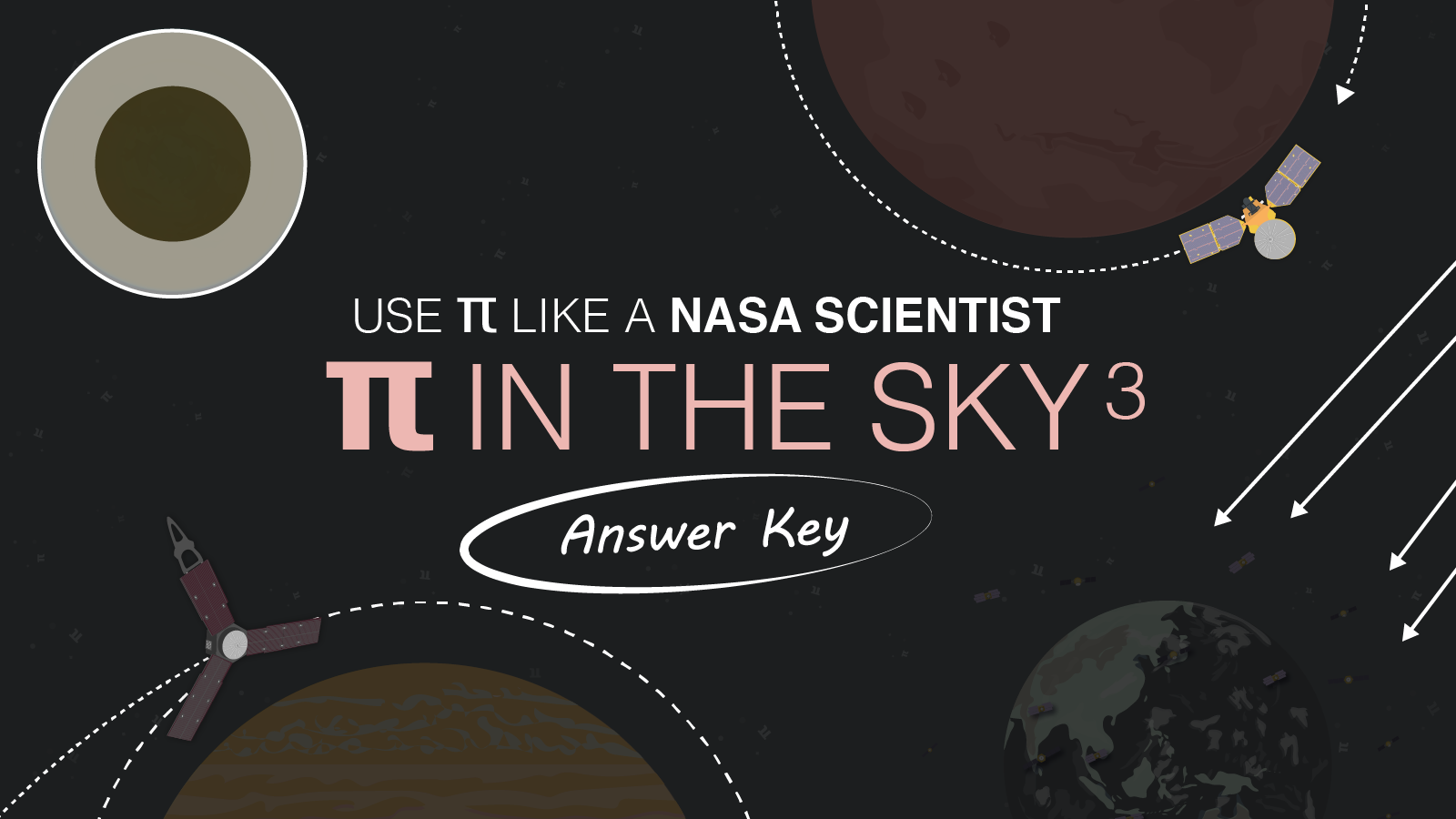Teachable Moments | March 7, 2024
A Prime Year for NASA's Pi Day Challenge
Learn how pi is used by NASA and how many of its infinite digits have been calculated, then explore the science and engineering behind the 2024 Pi Day Challenge.
Update: March 15, 2024 – The answers to the 2024 NASA Pi Day Challenge are here! Take a peek at the illustrated answer key now available under each problem on the NASA Pi Day Challenge page.
This year marks the 11th installment of the NASA Pi Day Challenge. Celebrated on March 14, Pi Day is the annual holiday that pays tribute to the mathematical constant pi – the number that results from dividing any circle's circumference by its diameter.
Every year on March 14, Pi Day gives us a reason to enjoy our favorite sweet and savory pies and celebrate the mathematical wonder that helps NASA explore the universe. Students can join in the fun once again by using pi to explore Earth and space themselves with the NASA Pi Day Challenge.
Read on to learn more about the science behind this year's challenge and get students solving real problems faced by NASA scientists and engineers exploring Earth, the Moon, asteroids, and beyond!

Visit the Pi in the Sky 11 lesson page to explore classroom resources and downloads for the 2024 NASA Pi Day Challenge. Image credit: NASA/JPL-Caltech | + Expand image
What is Pi
Dividing any circle’s circumference by its diameter gives you an answer of pi, which is usually rounded to 3.14. Because pi is an irrational number, its decimal representation goes on forever and never repeats. In 2022, mathematician Simon Plouffe discovered the formula to calculate any single digit of pi. In the same year, teams around the world used cloud computing technology to calculate pi to 100 trillion digits. But you might be surprised to learn that for space exploration, NASA uses far fewer digits of pi.
Here at NASA, we use pi to map the Moon, measure Earth’s changing surface, receive laser-coded messages from deep space, and calculate asteroid orbits. But pi isn’t just used for exploring the cosmos. Since pi can be used to find the area or circumference of round objects and the volume or surface area of shapes like cylinders, cones, and spheres, it is useful in all sorts of ways. Transportation teams use pi when determining the size of new subway tunnels. Electricians can use pi when calculating the current or voltage passing through circuits. And you might even use pi to figure out how much fencing is needed around a circular school garden bed.
In the United States, March 14 can be written as 3.14, which is why that date was chosen for celebrating all things pi. In 2009, the U.S. House of Representatives passed a resolution officially designating March 14 as Pi Day and encouraging teachers and students to celebrate the day with activities that teach students about pi. And that's precisely what the NASA Pi Day Challenge is all about!
The Science Behind the 2024 NASA Pi Day Challenge
This 11th installment of the NASA Pi Day Challenge includes four illustrated math problems designed to get students thinking like scientists and engineers to calculate how to get a laser message to Earth, the change in an asteroid’s orbit, the amount of data that can be collected by an Earth satellite, and how a team of mini rovers will map portions of the Moon’s surface.
Read on to learn more about the science and engineering behind each problem or click the link below to jump right into the challenge.
› Take the NASA Pi Day Challenge
› Educators, get the lesson here!
Receiver Riddle
In December 2023, NASA tested a new way to communicate with distant spacecraft using technology called Deep Space Optical Communications, or DSOC. From 19,000,000 miles (30,199,000 km) away, the Psyche spacecraft beamed a high-definition video encoded in a near-infrared laser to Earth. The video, showing a cat named Taters chasing a laser, traveled at the speed of light, where it was received at Caltech’s Palomar Observatory. Because of the great distance the laser had to travel, the team needed to aim the transmission at where Earth would be when the signal arrived. In Receiver Riddle, use pi to determine where along Earth's orbit the team needed to aim the laser so that it could be received at the Observatory at the correct moment.
This animation shows how DSOC's laser signals are sent between the Psyche spacecraft and ground stations on Earth - first as a pointing reference to ensure accurate aiming of the narrow laser signal and then as a data transmission to the receiving station. Credit: NASA/JPL-Caltech/ASU| Watch on YouTube
Daring Deflection
In 2022, NASA crashed a spacecraft into the asteroid Dimorphos in an attempt to alter its orbit. The mission, known as the Double Asteroid Redirection Test, or DART, took place at an asteroid that posed no threat to our planet. Rather, it was an ideal target for NASA to test an important element of its planetary defense plan. DART was designed as a kinetic impactor, meaning it transferred its momentum and kinetic energy to Dimorphos upon impact, altering the asteroid's orbit. In Daring Deflection, use pi to determine the shape of Dimorphos’ orbit after DART crashed into it.

This image shows the final minutes of images leading up to the DART spacecraft's intentional collision with asteroid Dimorphos. Credit: NASA/Johns Hopkins APL | › Enlarge image
Orbit Observation
The NISAR mission is an Earth orbiting satellite designed to study our planet's changing ecosystems. It will collect data about Earth's land- and ice-covered surfaces approximately every 6 days, allowing scientists to study changes at the centimeter scale – an unprecedented level of detail. To achieve this feat, NISAR will collect massive amounts of data. In Orbit Observation, students use pi to calculate how much data the NISAR spacecraft captures during each orbit of Earth.
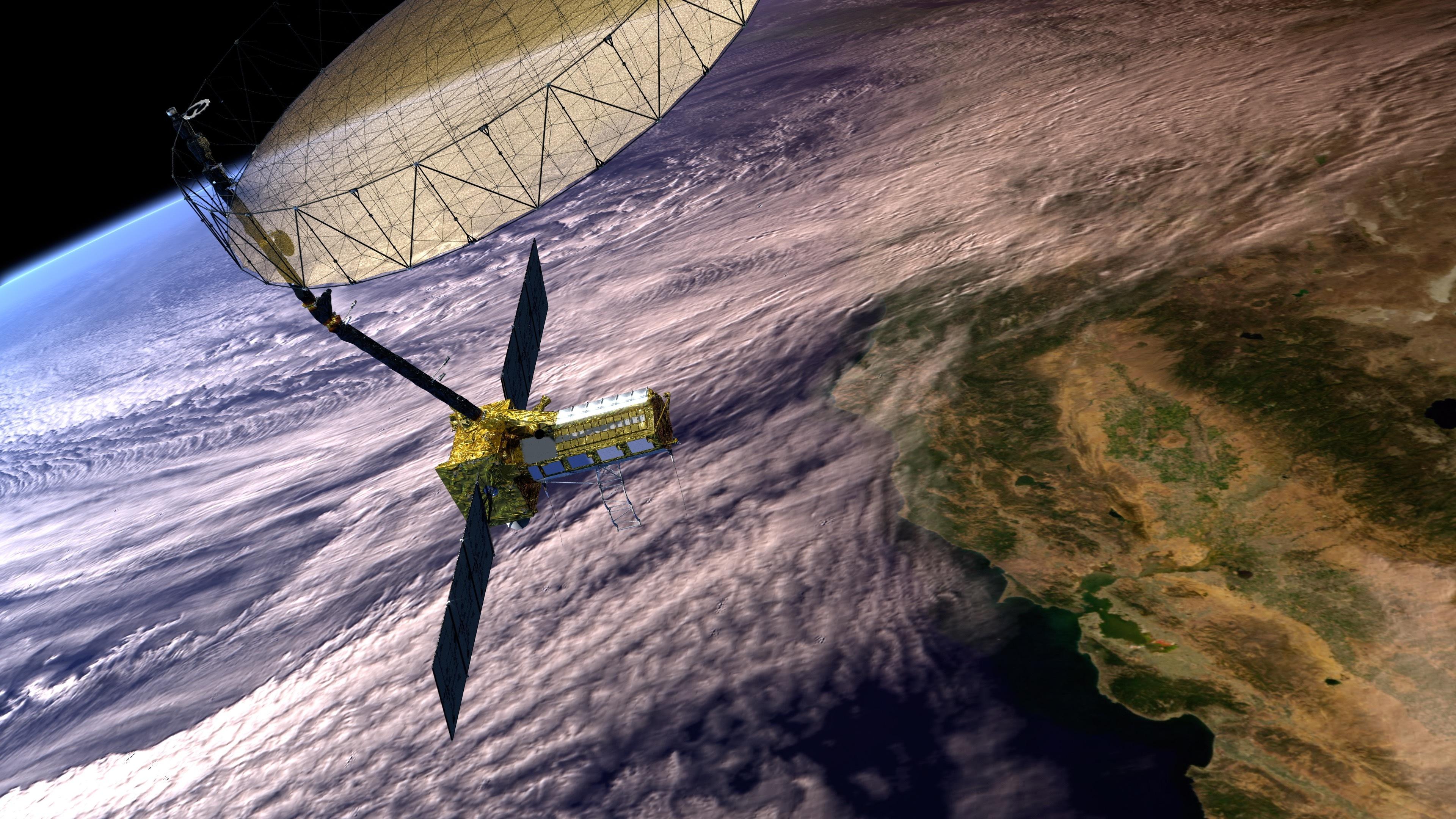
The NISAR satellite, shown in this artist’s concept, will use advanced radar imaging to provide an unprecedented view of changes to Earth’s land- and ice-covered surfaces. Credit: NASA/JPL-Caltech. | › Full image and caption
Moon Mappers
The CADRE project aims to land a team of mini rovers on the Moon in 2025 as a test of new exploration technology. Three suitcase-size rovers, each working mostly autonomously, will communicate with each other and a base station on their lunar lander to simultaneously measure data from different locations. If successful, the project could open the door for future multi-robot exploration missions. In Moon Mappers, students explore the Moon with pi by determining how far a CADRE rover drives on the Moon’s surface.
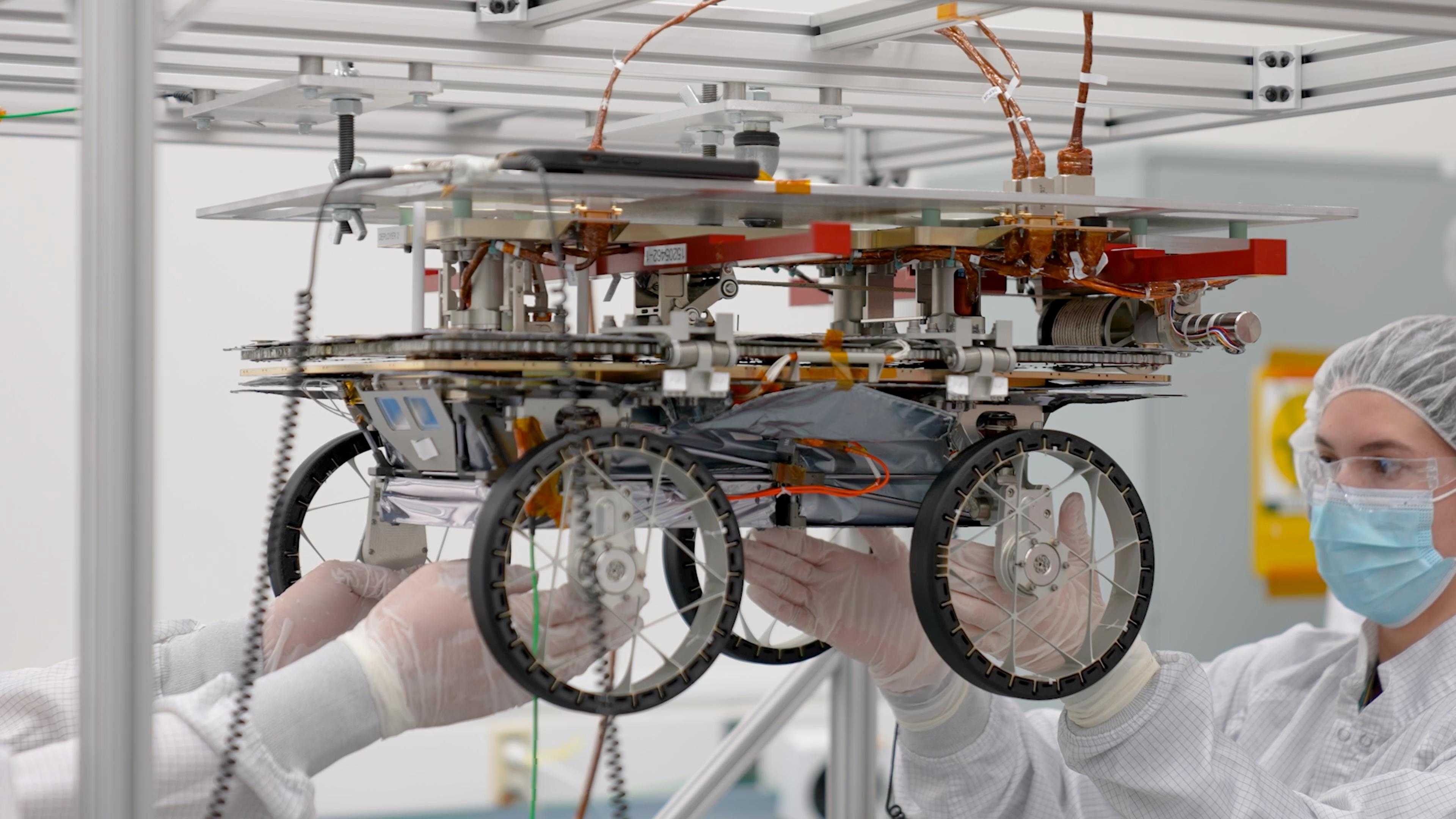
Engineers test the system that will lower three small rovers onto the lunar surface as part of the CADRE project. Credit: NASA/JPL-Caltech | › Full image and caption
Bring the Challenge Into the Classroom
Celebrate Pi Day by getting students thinking like NASA scientists and engineers to solve real-world problems in the NASA Pi Day Challenge. In addition to solving the 2024 challenge, you can also dig into the 40 puzzlers from previous challenges available in our Pi Day collection. Completing the problem set and reading about other ways NASA uses pi is a great way for students to see the importance of the M in STEM.
-
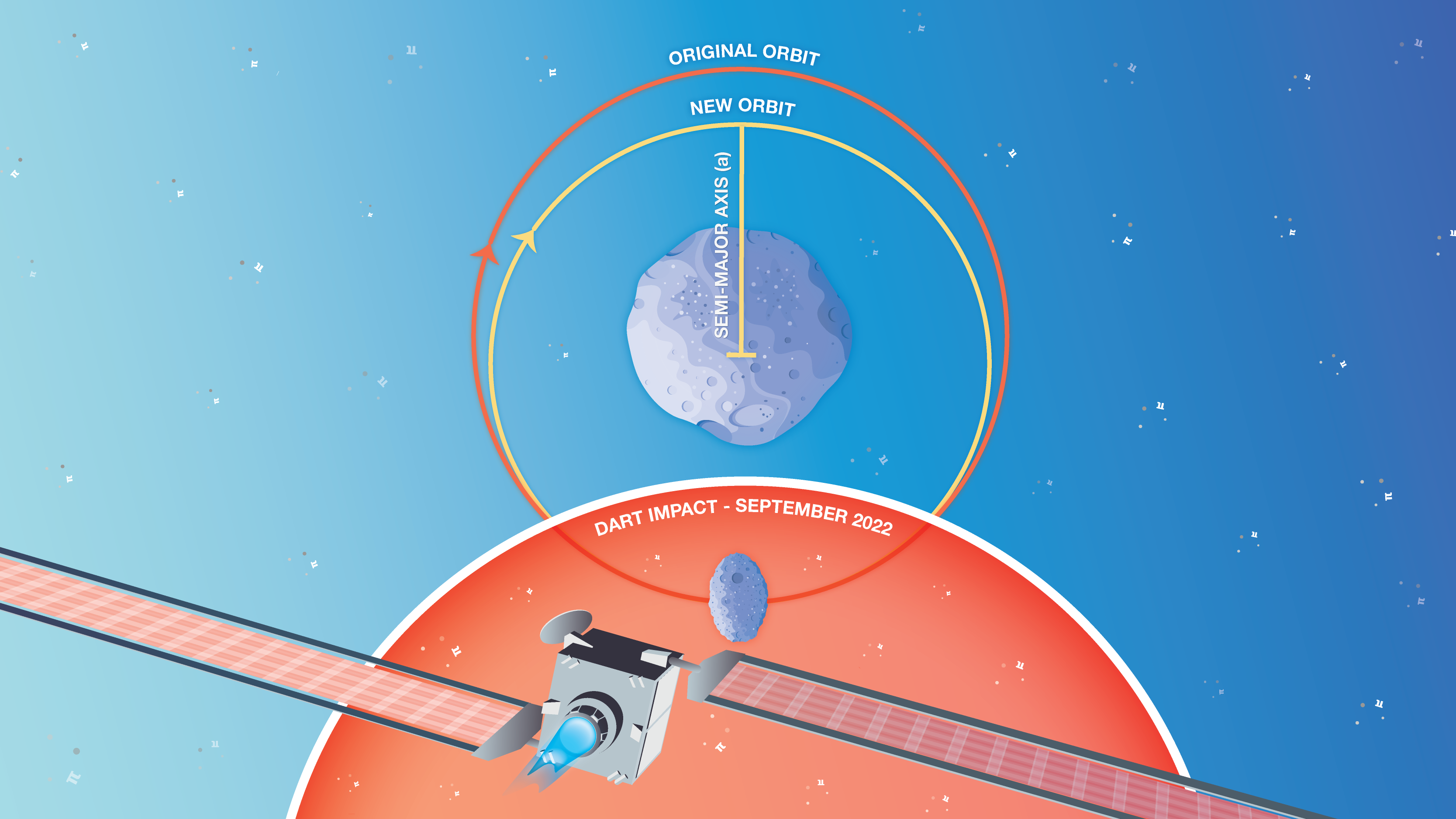 Collection
CollectionEducator Guides – NASA Pi Day Challenge
Here's everything you need to bring the NASA Pi Day Challenge into the classroom.
Grades 4-12
Time Varies
-
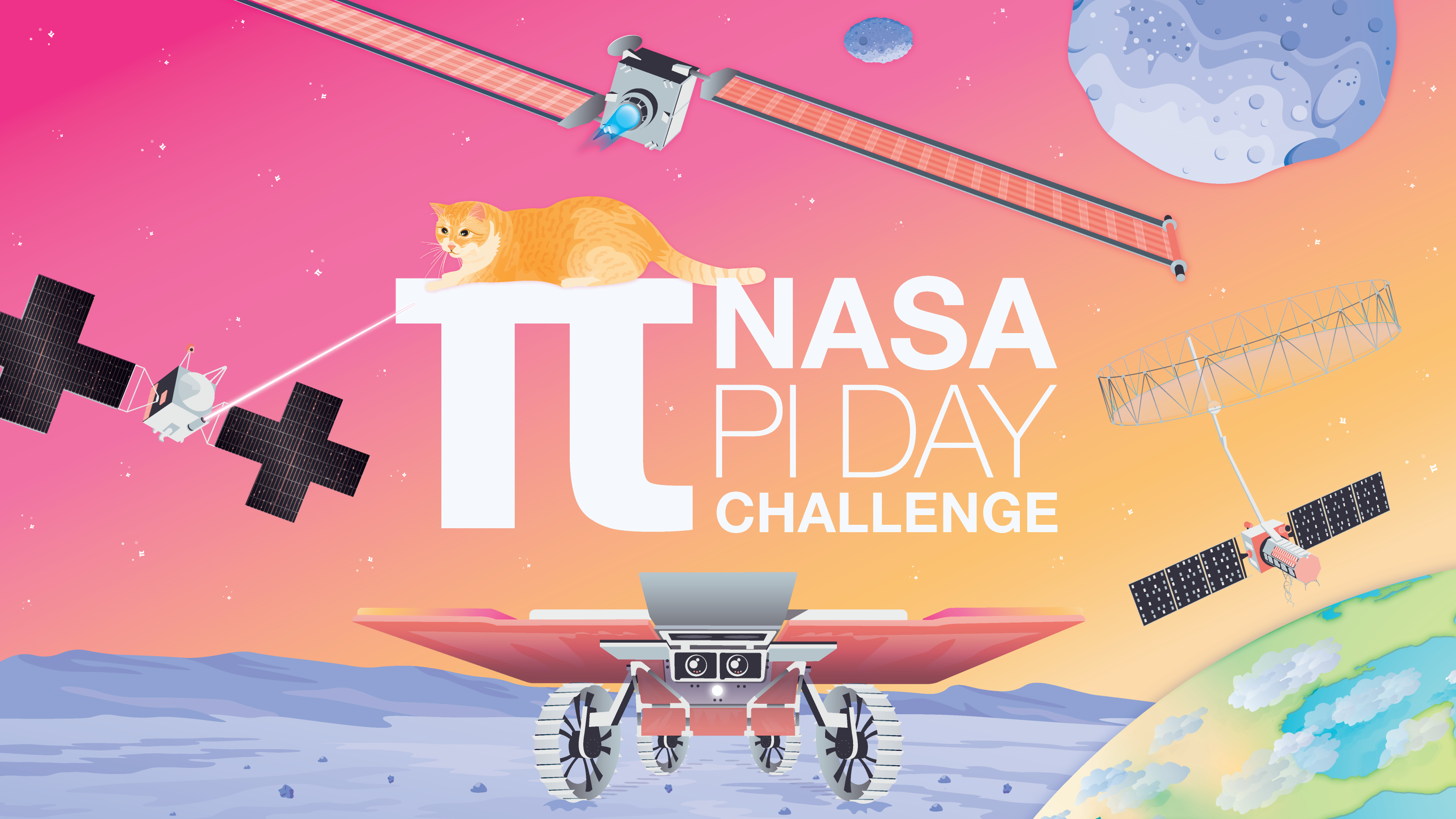 Student Activity
Student ActivityNASA Pi Day Challenge
The entire NASA Pi Day Challenge collection can be found in one, handy collection for students.
Grades 4-12
Time Varies
-
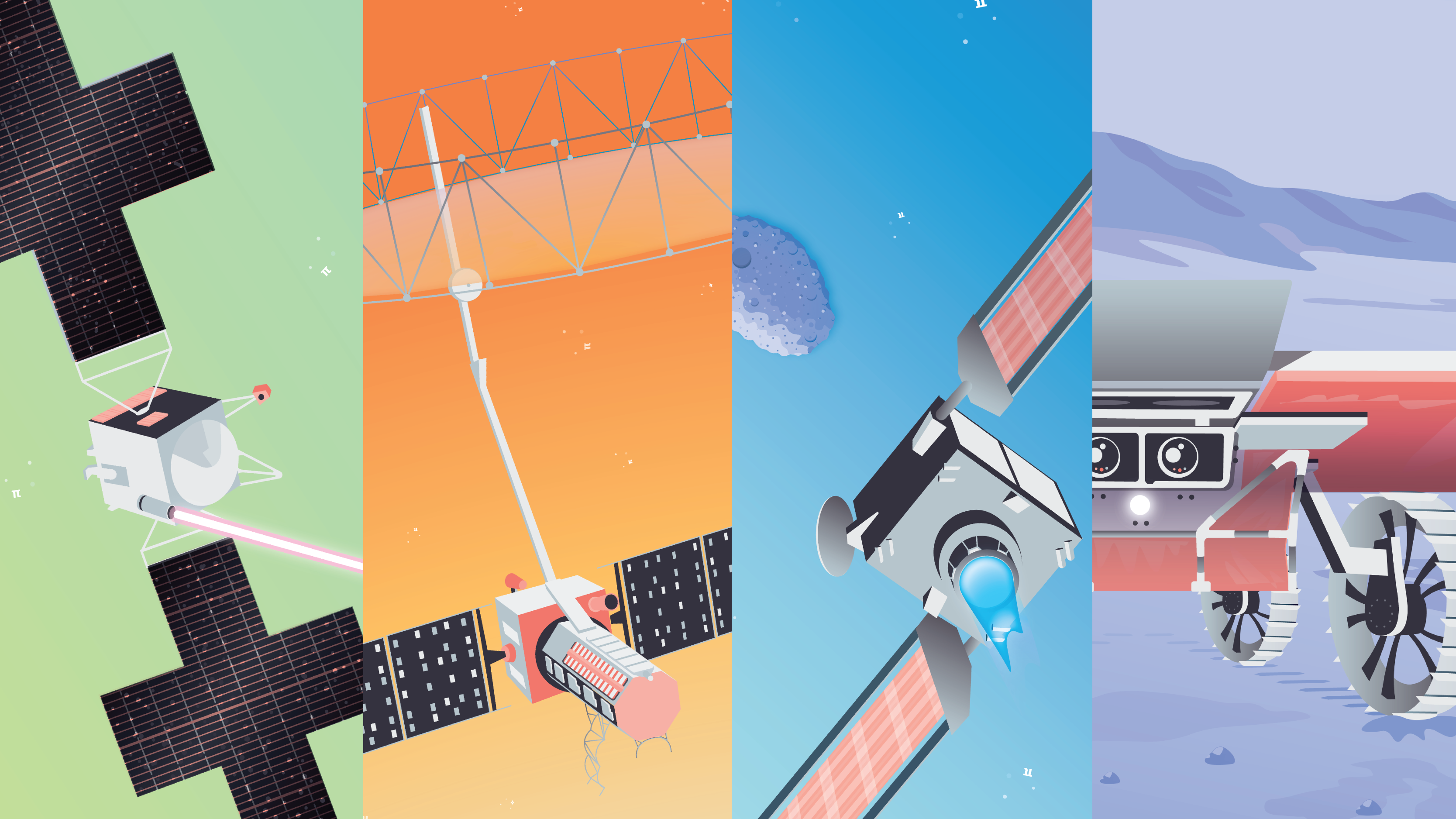
Downloads
Can't get enough pi? Download this year's NASA Pi Day Challenge graphics, including mobile phone and desktop backgrounds:
More Pi Resources
-
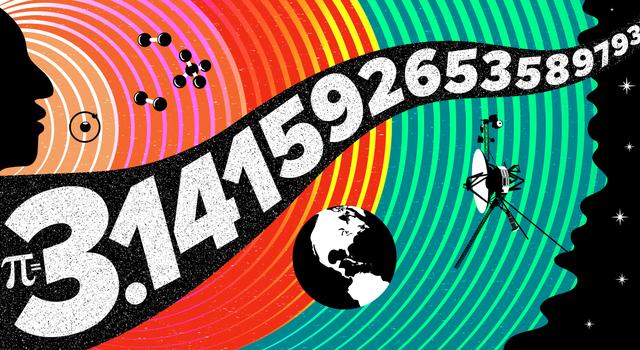 Article
ArticleHow Many Decimals of Pi Do We Really Need?
While you may have memorized more than 70,000 digits of pi, world record holders, a JPL engineer explains why you really only need a tiny fraction of that for most calculations.
-
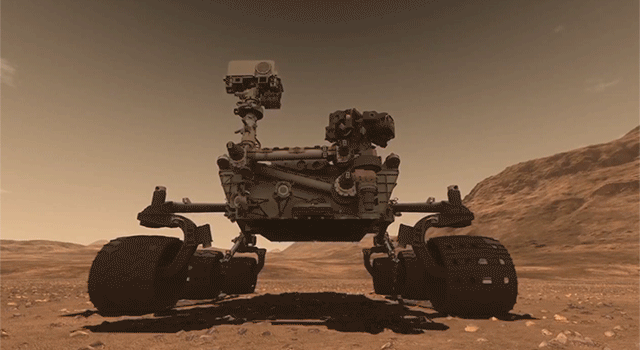 Article
Article18 Ways NASA Uses Pi
Whether it's sending spacecraft to other planets, driving rovers on Mars, finding out what planets are made of or how deep alien oceans are, pi takes us far at NASA. Find out how pi helps us explore space.
- Article
10 Ways to Celebrate Pi Day With NASA on March 14
Find out what makes pi so special, how it’s used to explore space, and how you can join the celebration with resources from NASA.
-
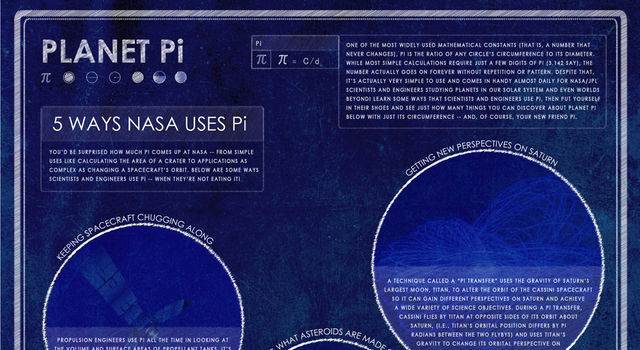 Infographic
InfographicPlanet Pi
This poster shows some of the ways NASA scientists and engineers use the mathematical constant pi (3.14) and includes common pi formulas.
-
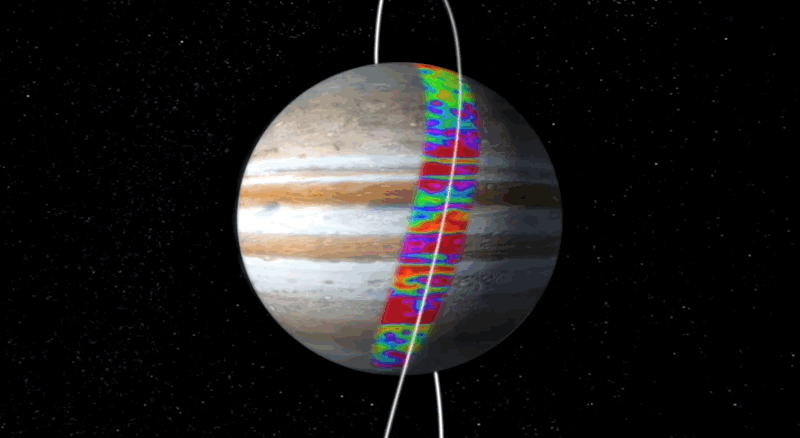 Article
Article18 Maneras en Que la NASA Usa Pi
Pi nos lleva lejos en la NASA. Estas son solo algunas de las formas en que pi nos ayuda a explorar el espacio.
Related Lessons for Educators
-
 Lesson
LessonCollisions in Space
Students predict and observe what happens when two objects collide to model collisions in space.
Grades K-4
Time 30 min to 1 hour
-
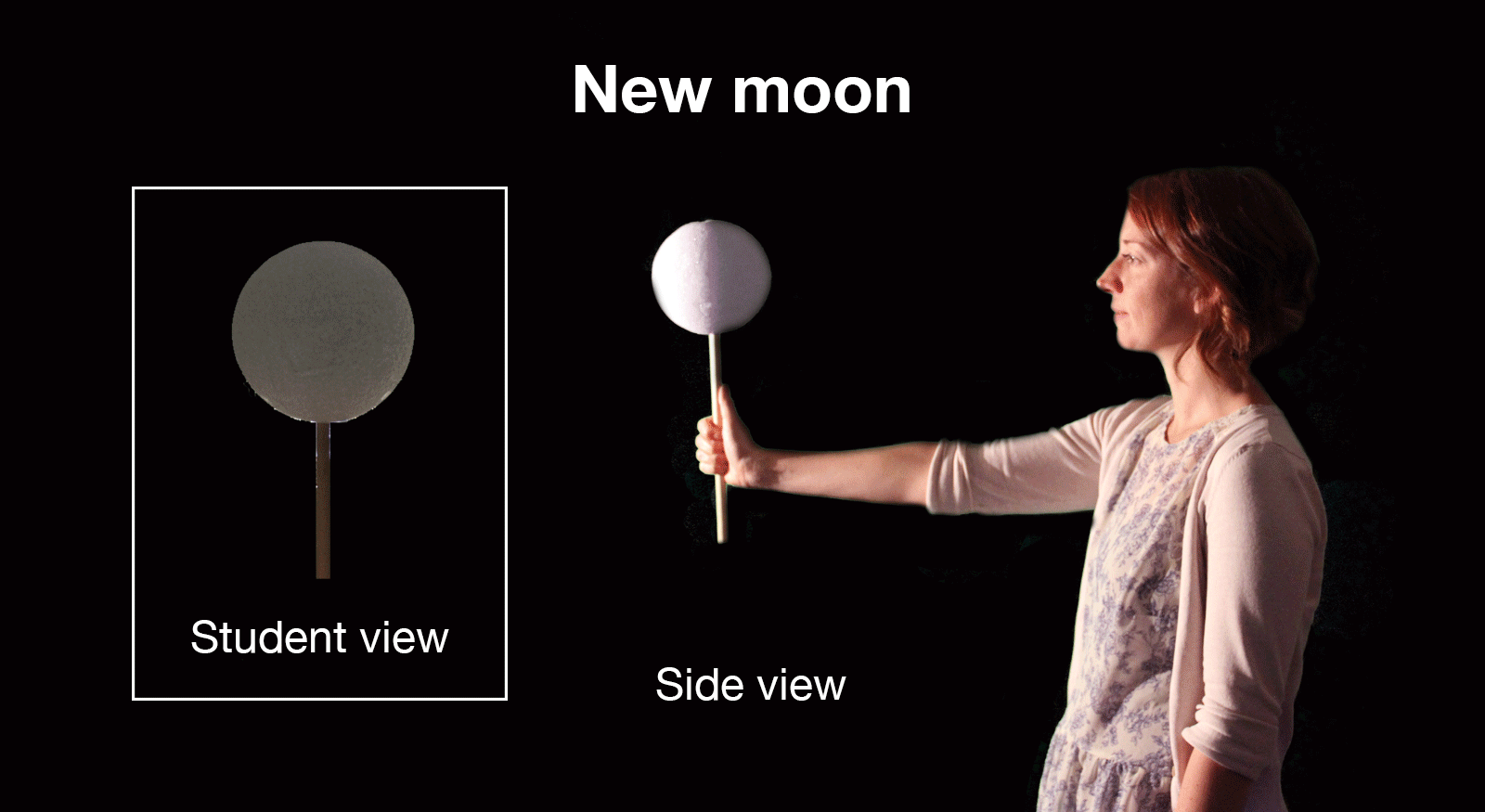 Lesson
LessonMoon Phases
Students learn about the phases of the moon by acting them out.
Grades 1-6
Time 30 min to 1 hour
-
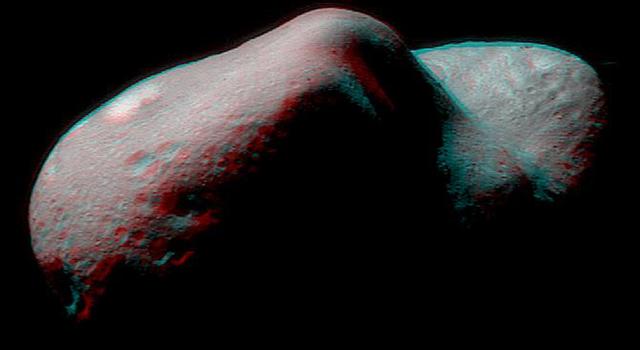 Lesson
LessonModeling an Asteroid
Lead a discussion about asteroids and their physical properties, then have students mold their own asteroids out of clay.
Grades 3-5
Time 30 min to 1 hour
-
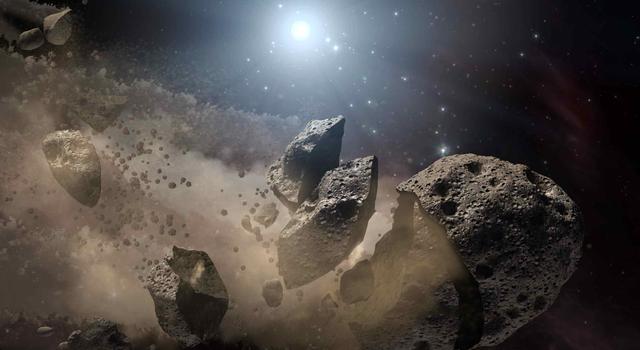 Lesson
LessonMath Rocks: A Lesson in Asteroid Dynamics
Students use math to investigate a real-life asteroid impact.
Grades 8-12
Time 30 min to 1 hour
-
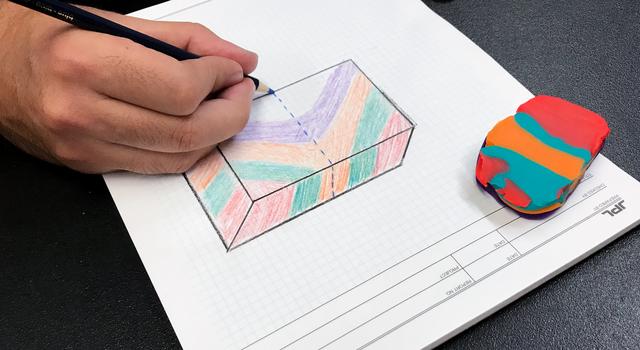 Lesson
LessonModeling Crustal Folds
Students use playdough to model how Earth’s crust is bent and folded by tectonic plates over geologic time.
Grades 6-12
Time 30 min to 1 hour
-
 Lesson
LessonMaking Topographic Maps
Students draw and interpret topographic maps while learning about technology used to map Earth's surface, the seafloor, and other worlds.
Grades 6-12
Time 30 min to 1 hour
-
 Lesson
LessonCode a Radio Message for Space
Students code microcontrollers to send and receive radio signals, simulating communications between Earth and spacecraft.
Grades 6-12
Time 30 min to 1 hour
Related Activities for Students
-
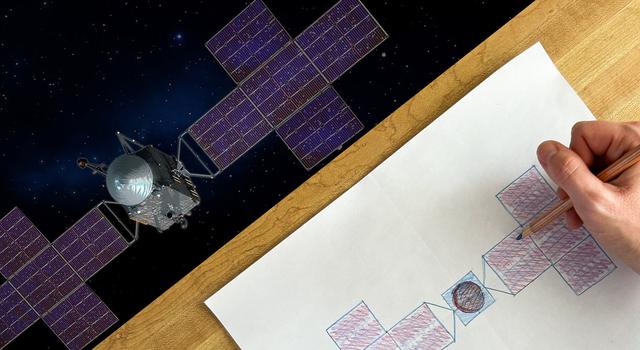 Student Project
Student ProjectDraw Your Own Psyche Spacecraft
Follow these easy instructions to draw and decorate your own model of the Psyche spacecraft.
Type Project
Subject Engineering
-
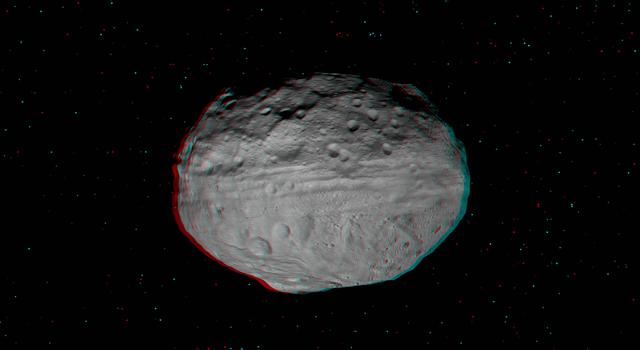 Slideshow
SlideshowWhat's That Space Rock?
Find out how to tell the difference between asteroids, comets, meteors, meteorites and other bodies in our solar system.
Type Slideshow
Subject Science
Facts and Figures
Websites
Articles
- How NASA Studies and Tracks Asteroids Near and Far
- NASA Cat Video Explained
- Article for Kids: Asteroid or Meteor: What's the Difference?
- Article for Kids: What Is an Asteroid?
Videos
- The Video NASA’s Laser Communications Experiment Streamed From Deep Space
- NASA's DART Mission Confirms Crashing Spacecraft into Asteroids Can Deflect Them
Interactives
TAGS: Pi Day, Pi, Math, NASA Pi Day Challenge, moon, earth, asteroid, psyche, DART, CADRE, NISAR DSOC
Teachable Moments | March 9, 2023
10 Years of NASA's Pi Day Challenge
Learn how pi is used by NASA and how many of its infinite digits have been calculated, then explore the science and engineering that makes the Pi Day Challenge possible.
Update: March 15, 2023 – The answers are here! Visit the NASA Pi Day Challenge page to view the illustrated answer keys for each problem.
This year marks the 10th installment of the NASA Pi Day Challenge. Celebrated on March 14, Pi Day is the annual holiday that pays tribute to the mathematical constant pi – the number that results from dividing any circle's circumference by its diameter.
Every year, Pi Day gives us a reason to celebrate the mathematical wonder that helps NASA explore the universe and enjoy our favorite sweet and savory pies. Students can join in the fun once again by using pi to explore Earth and space themselves in the NASA Pi Day Challenge.
Read on to learn more about the science behind this year's challenge and find out how students can put their math mettle to the test to solve real problems faced by NASA scientists and engineers as we explore Earth, Mars, asteroids, and beyond!

Visit the Pi in the Sky 10 lesson page to explore classroom resources and downloads for the 2023 NASA Pi Day Challenge. Image credit: NASA/JPL-Caltech | + Expand image
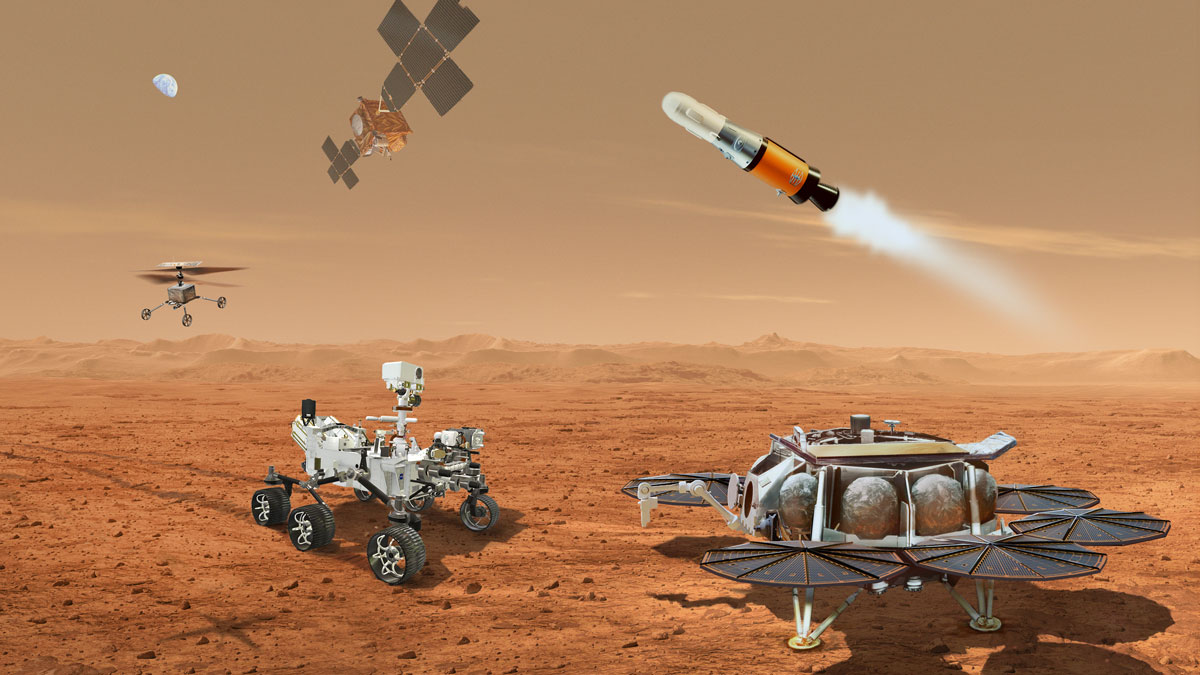
This illustration shows a concept for multiple robots that would team up to ferry to Earth samples of rocks and soil being collected from the Martian surface by NASA's Mars Perseverance rover. Image credit: NASA/JPL-Caltech | › Full image and caption
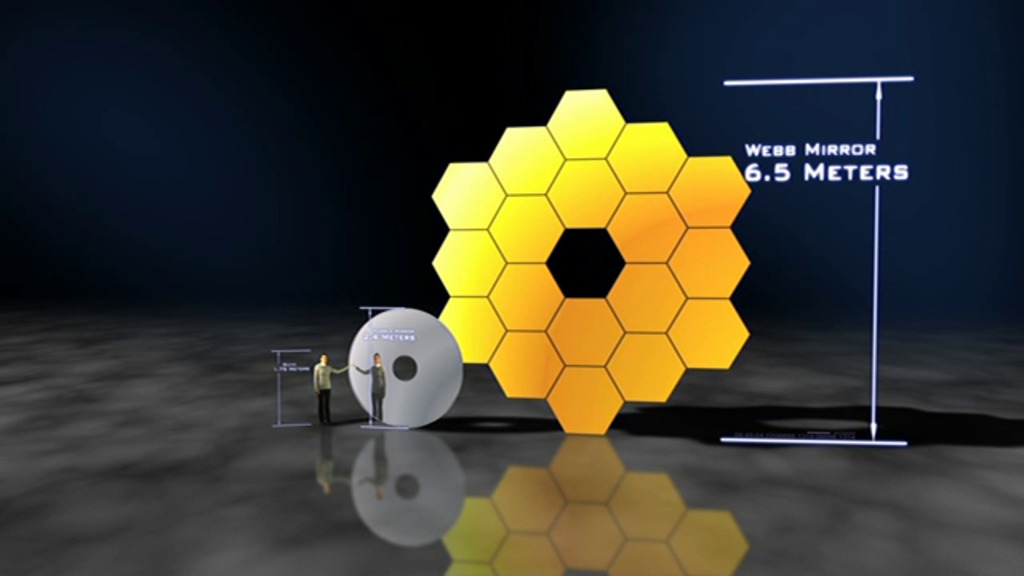
Image from animation comparing the relative sizes of James Webb's primary mirror to Hubble's primary mirror. Credit: NASA/Goddard Space Flight Center . | › Full animation
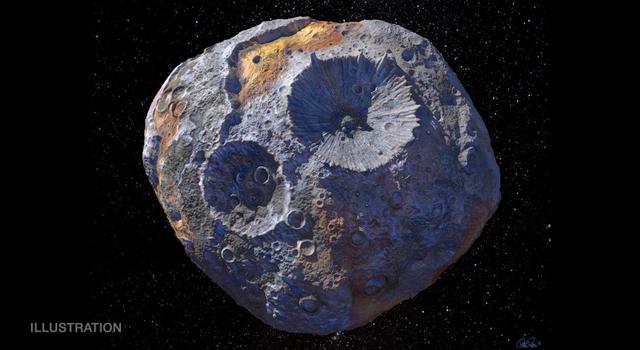
This illustration depicts the metal-rich asteroid Psyche, which is located in the main asteroid belt between Mars and Jupiter. Credits: NASA/JPL-Caltech/ASU | + Full image and caption
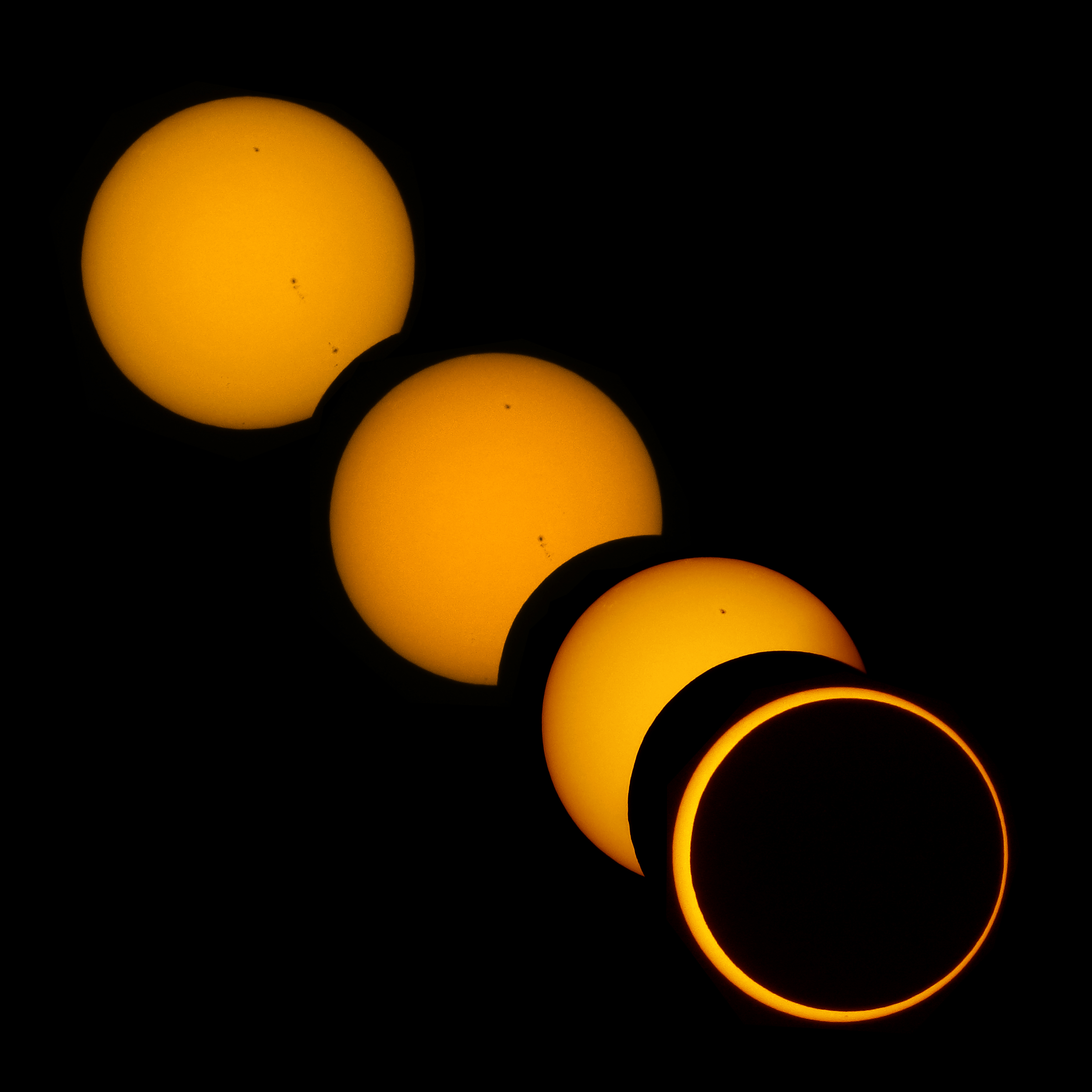
This image sequence shows an annular solar eclipse from May 2012. The bottom right frame illustrates the distinctive ring, or "annulus," of such eclipses. A similar eclipse will be visible from the South Pacific on May 10, 2013. Credits: Brocken Inaglory, CC BY-SA 3.0, via Wikimedia Commons | + Expand image
How It Works
Dividing any circle’s circumference by its diameter gives you an answer of pi, which is usually rounded to 3.14. Because pi is an irrational number, its decimal representation goes on forever and never repeats. In 2022, mathematician Simon Plouffe discovered the formula to calculate any single digit of pi. In the same year, teams around the world used cloud computing technology to calculate pi to 100 trillion digits. But you might be surprised to learn that for space exploration, NASA uses far fewer digits of pi.
Here at NASA, we use pi to measure the area of telescope mirrors, determine the composition of asteroids, and calculate the volume of rock samples. But pi isn’t just used for exploring the cosmos. Since pi can be used to find the area or circumference of round objects and the volume or surface area of shapes like cylinders, cones, and spheres, it is useful in all sorts of ways. Transportation teams use pi when determining the size of new subway tunnels. Electricians can use pi when calculating the current or voltage passing through circuits. And you might even use pi to figure out how much fencing is needed around a circular school garden bed.
In the United States, March 14 can be written as 3.14, which is why that date was chosen for celebrating all things pi. In 2009, the U.S. House of Representatives passed a resolution officially designating March 14 as Pi Day and encouraging teachers and students to celebrate the day with activities that teach students about pi. And that's precisely what the NASA Pi Day Challenge is all about!
The Science Behind the 2023 NASA Pi Day Challenge
This 10th installment of the NASA Pi Day Challenge includes four noodle-nudgers that get students using pi to calculate the amount of rock sampled by the Perseverance Mars rover, the light-collecting power of the James Webb Space Telescope, the composition of asteroid (16) Psyche, and the type of solar eclipse we can expect in October.
Read on to learn more about the science and engineering behind each problem or click the link below to jump right into the challenge.
› Take the NASA Pi Day Challenge
› Educators, get the lesson here!
Tubular Tally
NASA’s Mars rover, Perseverance, was designed to collect rock samples that will eventually be brought to Earth by a future mission. Sending objects from Mars to Earth is very difficult and something we've never done before. To keep the rock cores pristine on the journey to Earth, the rover hermetically seals them inside a specially designed sample tube. Once the samples are brought to Earth, scientists will be able to study them more closely with equipment that is too large to make the trip to Mars. In Tubular Tally, students use pi to determine the volume of a rock sample collected in a single tube.
Rad Reflection
When NASA launched the Hubble Space Telescope in 1990, scientists hoped that the telescope, with its large mirror and sensitivity to ultraviolet, visible, and near-infrared light, would unlock secrets of the universe from an orbit high above the atmosphere. Indeed, their hope became reality. Hubble’s discoveries, which are made possible in part by its mirror, rewrote astronomy textbooks. In 2022, the next great observatory, the James Webb Space Telescope, began exploring the infrared universe with an even larger mirror from a location beyond the orbit of the Moon. In Rad Reflection, students use pi to gain a new understanding of our ability to peer deep into the cosmos by comparing the area of Hubble’s primary mirror with the one on Webb.
Metal Math
Orbiting the Sun between Mars and Jupiter, the asteroid (16) Psyche is of particular interest to scientists because its surface may be metallic. Earth and other terrestrial planets have metal cores, but they are buried deep inside the planets, so they are difficult to study. By sending a spacecraft to study Psyche up close, scientists hope to learn more about terrestrial planet cores and our solar system’s history. That's where NASA's Psyche comes in. The mission will use specialized tools to study Psyche's composition from orbit. Determining how much metal exists on the asteroid is one of the key objectives of the mission. In Metal Math, students will do their own investigation of the asteroid's makeup, using pi to calculate the approximate density of Psyche and compare that to the density of known terrestrial materials.
Eclipsing Enigma
On Oct. 14, 2023, a solar eclipse will be visible across North and South America, as the Moon passes between Earth and the Sun, blocking the Sun's light from our perspective. Because Earth’s orbit around the Sun and the Moon’s orbit around Earth are not perfect circles, the distances between them change throughout their orbits. Depending on those distances, the Sun's disk area might be fully or only partially blocked during a solar eclipse. In Eclipsing Enigma, students get a sneak peek at what to expect in October by using pi to determine how much of the Sun’s disk will be eclipsed by the Moon and whether to expect a total or annular eclipse.
Teach It
Celebrate Pi Day by getting students thinking like NASA scientists and engineers to solve real-world problems in the NASA Pi Day Challenge. In addition to solving this year’s challenge, you can also dig into the more than 30 puzzlers from previous challenges available in our Pi Day collection. Completing the problem set and reading about other ways NASA uses pi is a great way for students to see the importance of the M in STEM.
Pi Day Resources
-
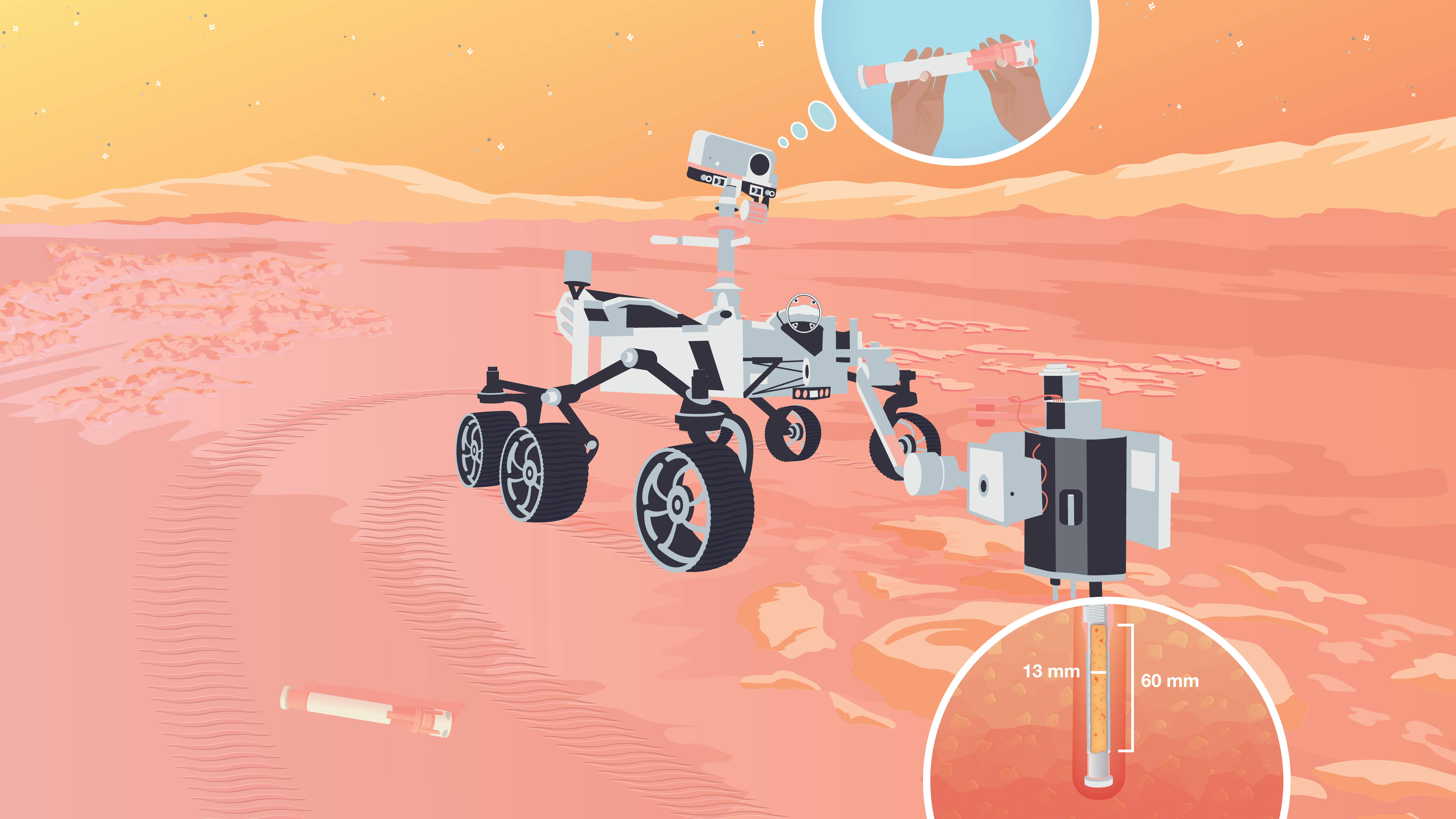
Pi in the Sky Lessons
Here's everything you need to bring the NASA Pi Day Challenge into the classroom.
Grades 4-12
Time Varies
-
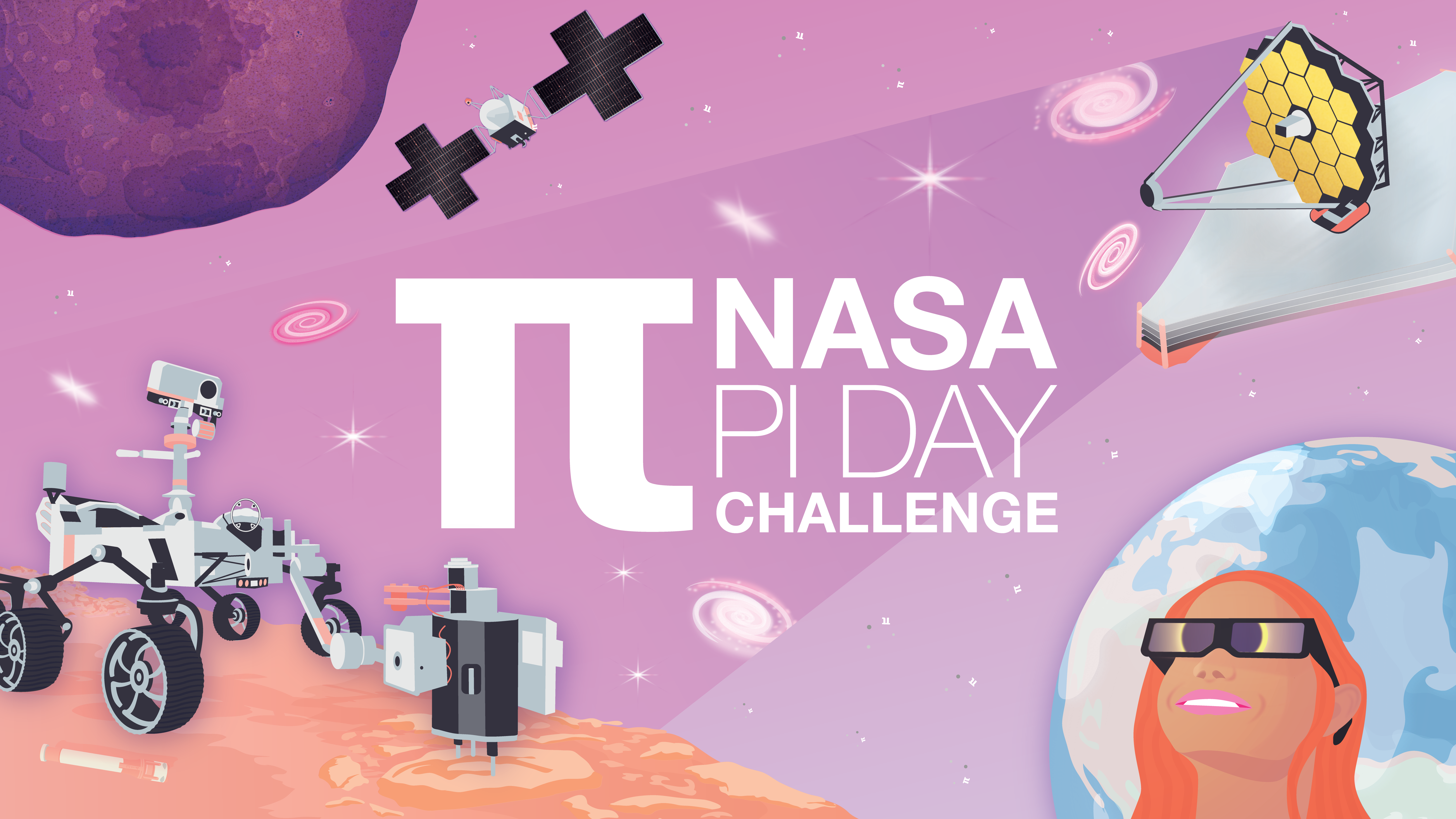
NASA Pi Day Challenge
The entire NASA Pi Day Challenge collection can be found in one, handy slideshow for students.
Grades 4-12
Time Varies
-

How Many Decimals of Pi Do We Really Need?
While you may have memorized more than 70,000 digits of pi, world record holders, a JPL engineer explains why you really only need a tiny fraction of that for most calculations.
-

18 Ways NASA Uses Pi
Whether it's sending spacecraft to other planets, driving rovers on Mars, finding out what planets are made of or how deep alien oceans are, pi takes us far at NASA. Find out how pi helps us explore space.
-
10 Ways to Celebrate Pi Day With NASA on March 14
Find out what makes pi so special, how it’s used to explore space, and how you can join the celebration with resources from NASA.
-

Infographic: Planet Pi
This poster shows some of the ways NASA scientists and engineers use the mathematical constant pi (3.14) and includes common pi formulas.
-
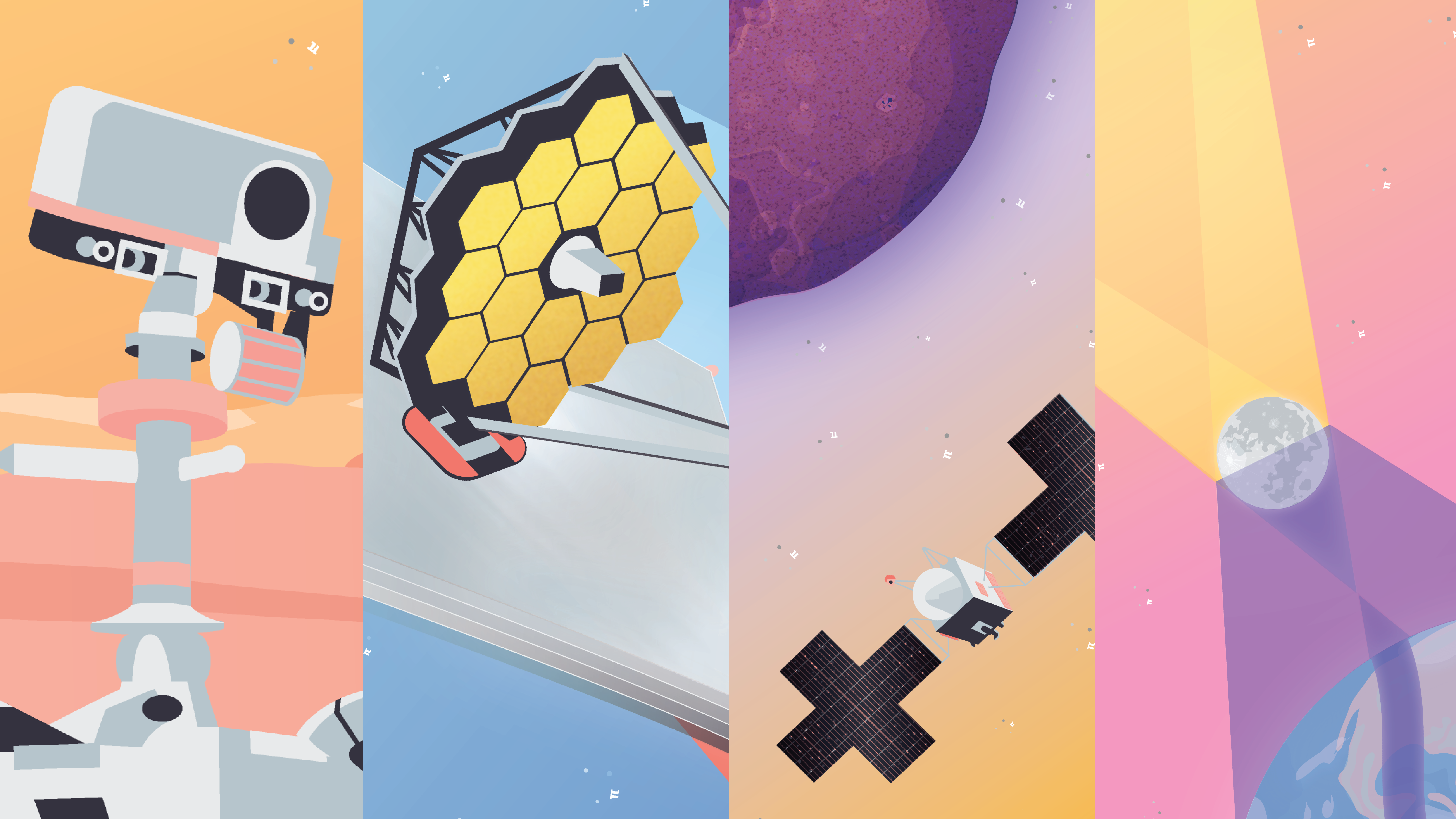
Downloads
Can't get enough pi? Download this year's NASA Pi Day Challenge graphics, including mobile phone and desktop backgrounds:
-

National Council of Teachers of Mathematics: Notice and Wonder
Creative brainstorming through noticing and wondering encourages student participation, engagement, and students' understanding of the NASA Pi Day Challenge.
Subject Mathematics
-
Pi Day: What's Going 'Round
Tell us what you're up to this Pi Day and share your stories and photos on our showcase page.
Plus, join the conversation using the hashtag #NASAPiDayChallenge on Facebook, Twitter, and Instagram.
Related Lessons for Educators
-
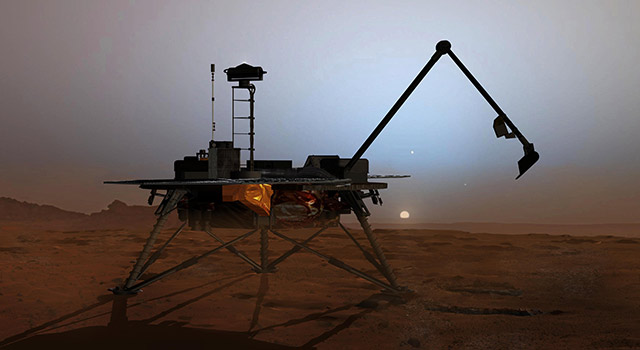
Robotic Arm Challenge
In this challenge, students will create a model robotic arm to move items from one location to another. They will engage in the engineering design process to design, build and operate the arm.
Grades K-8
Time 30 min to 1 hour
-
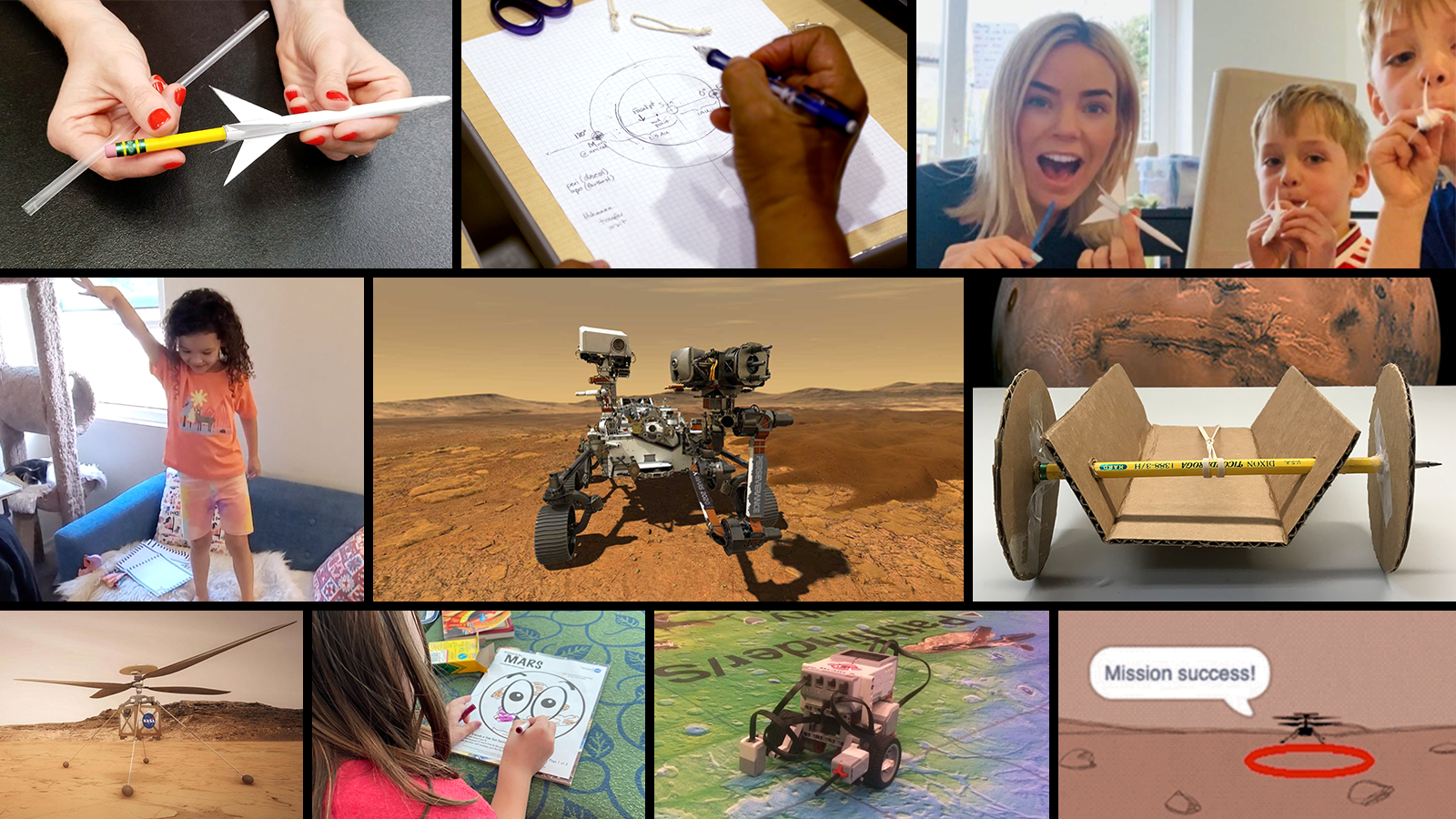
NASA's Mission to Mars Student Challenge
Take part in the exploration of Mars and bring students along for the ride with NASA's Perseverance rover.
Grades K-12
Time Varies
-

Moon Phases
Students learn about the phases of the moon by acting them out.
Grades 1-6
Time 30 min to 1 hour
-
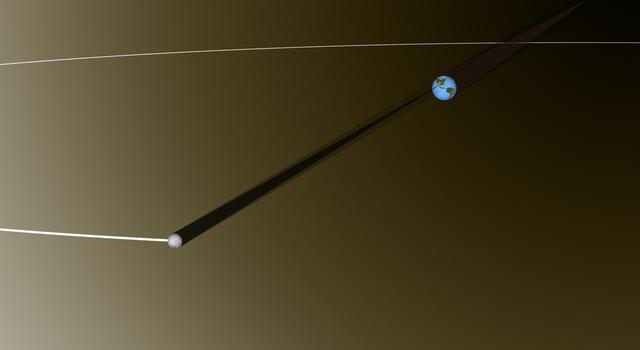
Modeling the Earth-Moon System
Students learn about scale models and distance by creating a classroom-size Earth-Moon system.
Grades 6-8
Time 30 min to 1 hour
-

Math of the Expanding Universe
Students will learn about the expanding universe and the redshift of lightwaves, then perform their own calculations with a distant supernova.
Grades 9-12
Time 30 min to 1 hour
-
The Expanded Universe: Playing with Time Activity Guide
In this activity, participants use balloons to model the expansion of the universe and observe how expansion affects wavelengths of light and distance between galaxies
-

James Webb Space Telescope STEM Toolkit
Find a collection of resources, activities, videos, and more for your students to learn about NASA’s newest space observatory.
-

Modeling an Asteroid
Lead a discussion about asteroids and their physical properties, then have students mold their own asteroids out of clay.
Grades 3-5
Time 30 min to 1 hour
-

Math Rocks: A Lesson in Asteroid Dynamics
Students use math to investigate a real-life asteroid impact.
Grades 8-12
Time 30 min to 1 hour
Related Activities for Students
-
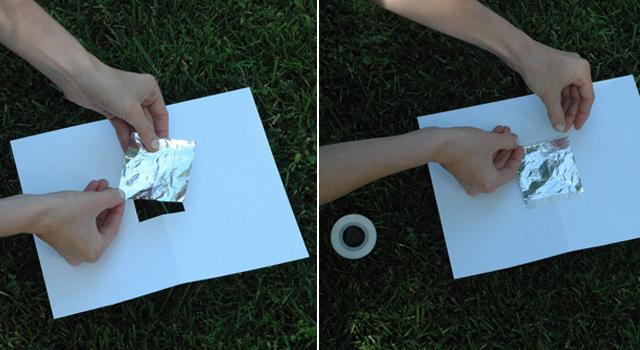
How to Make a Pinhole Camera
Learn how to make your very own pinhole camera to safely see a solar eclipse in action!
Type Project
Subject Engineering
-
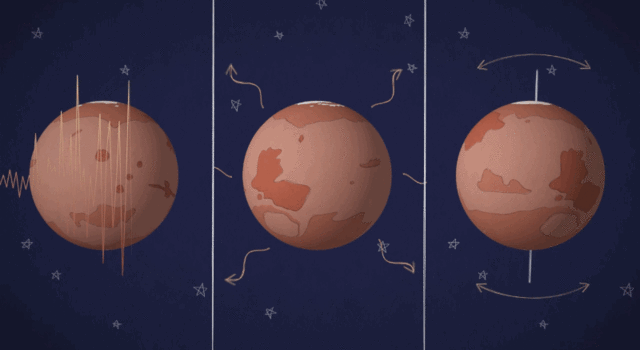
Collection: Exploring Mars
Make a cardboard rover, design a Mars exploration video game and explore more STEM projects, slideshows and videos for students.
Type Project
Subject Science
-

What's That Space Rock?
Find out how to tell the difference between asteroids, comets, meteors, meteorites and other bodies in our solar system.
Type Slideshow
Subject Science
-
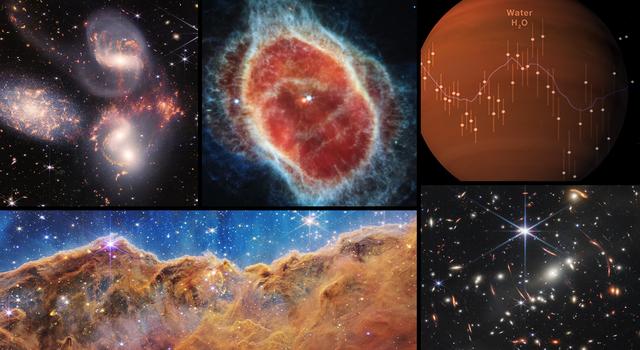
10 Things We Can Learn from Webb's First Images
Take a closer look at how images from NASA's most powerful space telescope yet are helping to answer some of astronomers' most burning questions.
Type Slideshow
Subject Science
Recursos en español
Facts and Figures
Websites
- Webb Space Telescope
- Mars Exploration
- Perseverance Mars Rover
- Mars Sample Return
- Psyche Mission
- MIRI Instrument
- 2023 Eclipse
Articles
Videos
Interactives
TAGS: Pi Day, Pi, Math, NASA Pi Day Challenge, sun, moon, earth, eclipse, asteroid, psyche, sample return, mars, perseverance, jwst, webb, hubble, telescope, miri
Edu News | October 24, 2022
How Many Decimals of Pi Do We Really Need?
While world record holders may have memorized more than 70,000 digits of pi, a JPL engineer explains why you really only need a tiny fraction of that for most calculations – even at NASA.
Update: October 24, 2022 – This article, originally written in 2016, has been updated to reflect the latest values for NASA’s Voyager 1 spacecraft, which continues to venture farther into interstellar space. The author, Marc Rayman, has ventured on too, from the chief engineer for NASA’s Dawn mission, which concluded successfully in 2018, to the chief engineer for mission operations and science at NASA’s Jet Propulsion Laboratory.

This graphic shows more than 500 of the infinite number of decimals in pi. Image credit: NASA/JPL-Caltech | + Expand image
We received this question from a fan on Facebook who wondered how many decimals of the never-ending mathematical constant pi (π) NASA-JPL scientists and engineers use when making calculations:
“Does JPL only use 3.14 for its pi calculations? Or do you use more decimals, like say [360 or even more]?”
Here’s JPL’s Chief Engineer for Mission Operations and Science, Marc Rayman, with the answer:
Thank you for your question! This isn't the first time I've heard a question like this. In fact, it was posed many years ago by a sixth-grade science and space enthusiast who was later fortunate enough to earn a doctorate in physics and become involved in space exploration. His name was Marc Rayman.
To start, let me answer your question directly. For JPL's highest accuracy calculations, which are for interplanetary navigation, we use 3.141592653589793. Let's look at this a little more closely to understand why we don't use more decimal places. I think we can even see that there are no physically realistic calculations scientists ever perform for which it is necessary to include nearly as many decimal points as you asked about. Consider these examples:
- The most distant spacecraft from Earth is Voyager 1. As of this writing, it’s about 14.7 billion miles (23.6 billion kilometers) away. Let’s be generous and call that 15 billion miles (24 billion kilometers). Now say we have a circle with a radius of exactly that size, 30 billion miles (48 billion kilometers) in diameter, and we want to calculate the circumference, which is pi times the radius times 2. Using pi rounded to the 15th decimal, as I gave above, that comes out to a little more than 94 billion miles (more than 150 billion kilometers). We don't need to be concerned here with exactly what the value is (you can multiply it out if you like) but rather what the error in the value is by not using more digits of pi. In other words, by cutting pi off at the 15th decimal point, we would calculate a circumference for that circle that is very slightly off. It turns out that our calculated circumference of the 30-billion-mile (48-billion-kilometer) diameter circle would be wrong by less than half an inch (about one centimeter). Think about that. We have a circle more than 94 billion miles (more than 150 billion kilometers) around, and our calculation of that distance would be off by no more than the width of your little finger.
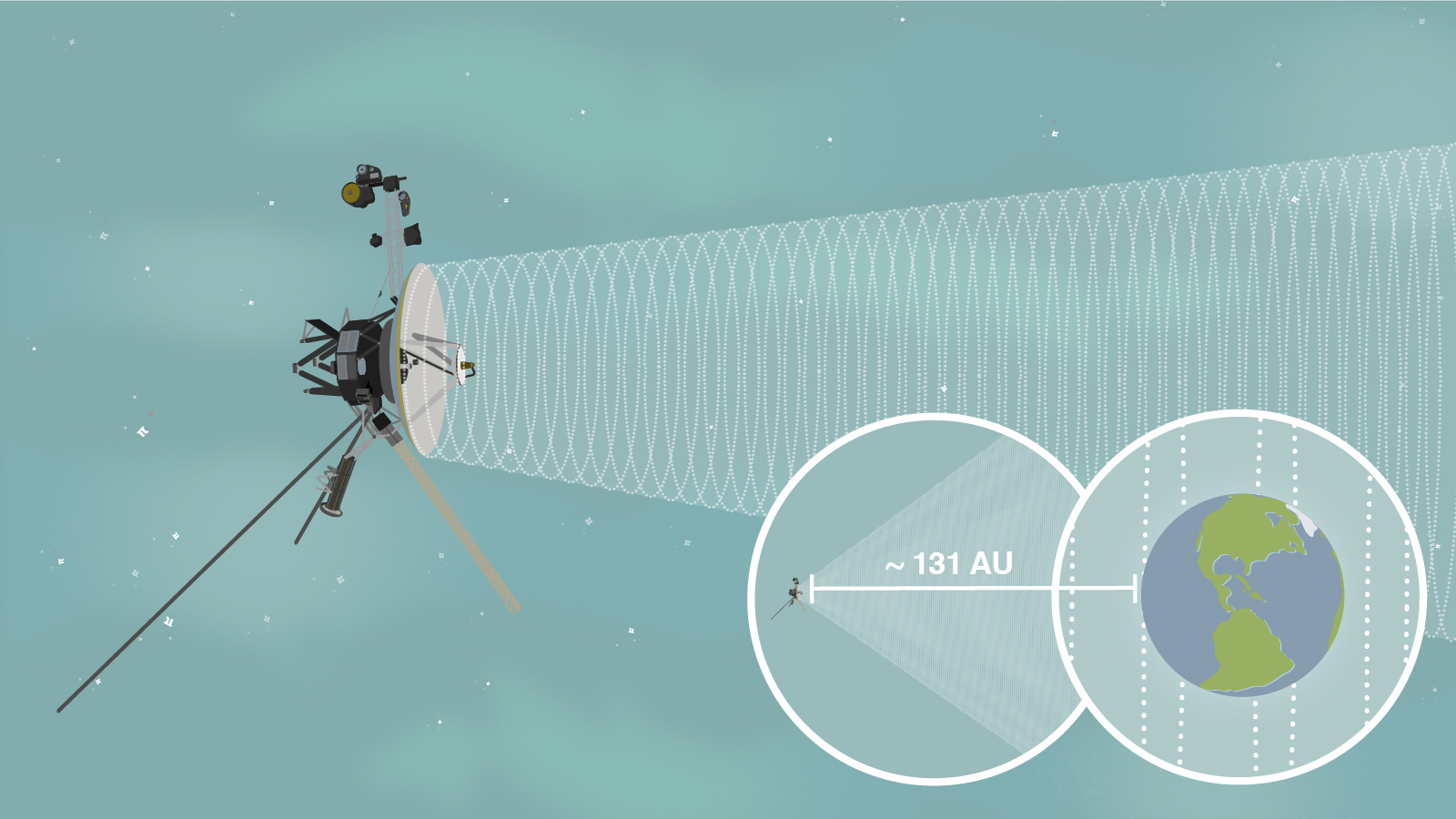
Put your pi math skills to the test with this problem from NASA's Pi Day Challenge. Can you use pi to determine what fraction of a signal from Voyager 1 reaches Earth? Image credit: NASA/JPL-Caltech | + Expand image | › View lesson page
- We can bring this closer to home by looking at our planet, Earth. It is more than 7,900 miles (12,700 kilometers) in diameter at the equator. The circumference is roughly 24,900 miles (40,100 kilometers). That's how far you would travel if you circumnavigated the globe – and didn't worry about hills, valleys, and obstacles like buildings, ocean waves, etc. How far off would your odometer be if you used the limited version of pi above? The discrepancy would be the size of a molecule. There are many different kinds of molecules, of course, so they span a wide range of sizes, but I hope this gives you an idea. Another way to view this is that your error by not using more digits of pi would be more than 30,000 times thinner than a hair!

Image credit: NASA | + Expand image
- Let's go to the largest size there is: the known universe. The radius of the universe is about 46 billion light years. Now let me ask (and answer!) a different question: How many digits of pi would we need to calculate the circumference of a circle with a radius of 46 billion light years to an accuracy equal to the diameter of a hydrogen atom, the simplest atom? It turns out that 37 decimal places (38 digits, including the number 3 to the left of the decimal point) would be quite sufficient. Think about how fantastically vast the universe is. It’s certainly far beyond what you can see with your eyes even on the darkest, most beautiful night of sparkling stars. It’s yet farther beyond the extraordinary vision of the James Webb Space Telescope. And the vastness of the universe is truly far, far, far beyond what we can even conceive. Now think about how incredibly tiny a single atom is. Isn’t it amazing that we wouldn’t need to use many digits of pi at all to cover that entire unbelievable range?
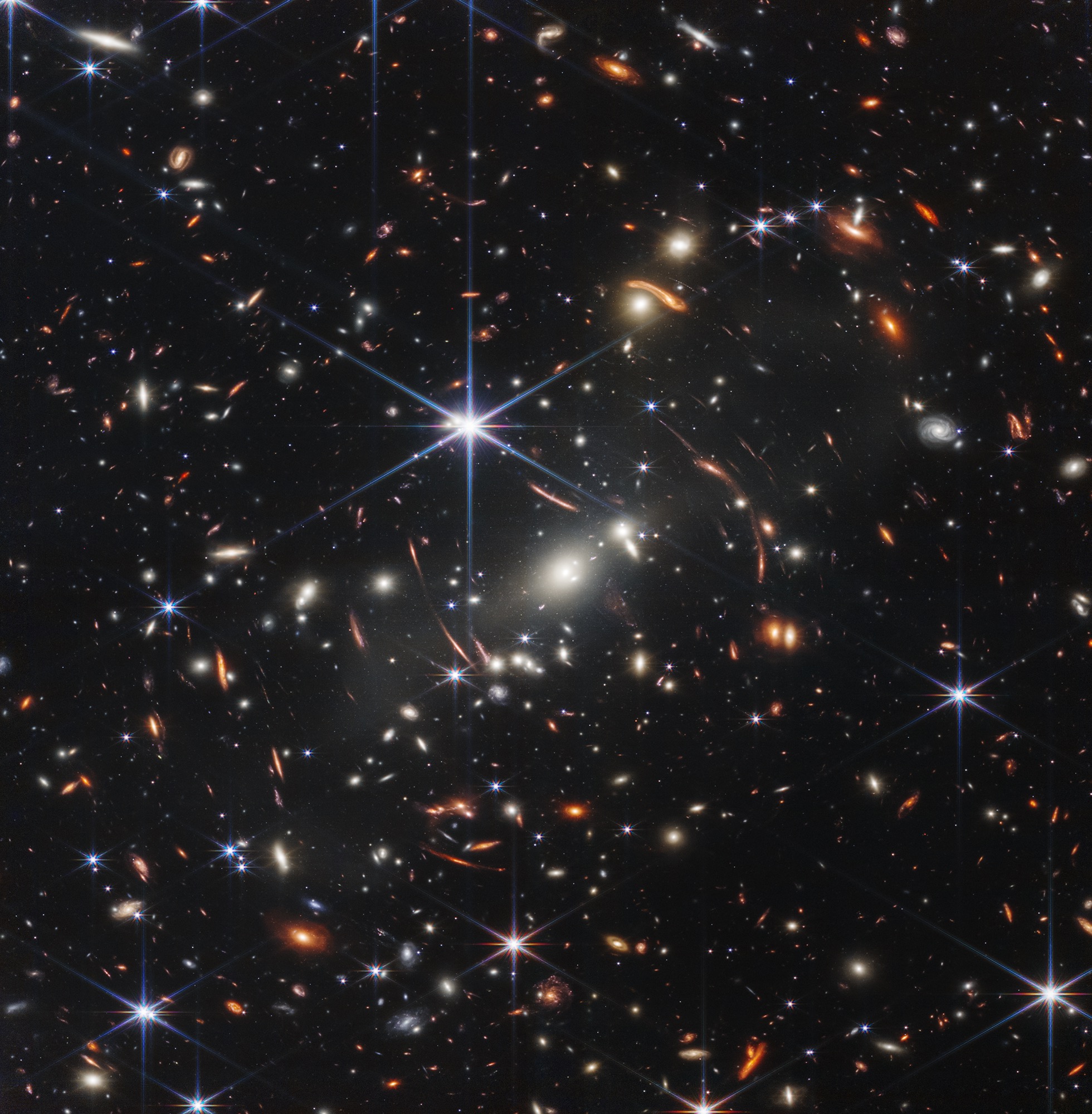
If you were to hold a single grain of sand at arm's length, you could cover the entire area of space taken up by this image, which was captured by the James Webb Space Telescope and contains thousands of galaxies. The oldest-known galaxy identified in the image is 13.1 billion years old. Image credit: NASA, ESA, CSA, STScI | + Expand image | › More about the image | Text description (PDF)
Pi is an intriguing number with interesting mathematical properties. It’s fun to think about its truly endless sequence of digits, and it may be surprising how often it appears in the equations scientists and engineers use. But there are no questions – prosaic or esoteric – in humankind’s noble efforts to explore or comprehend the marvels of the cosmos, from the unimaginably smallest scales to the inconceivably largest, that could require very many of those digits.
Hear more from Marc in his inspiring TEDx talk, “If It Isn’t Impossible, It Isn’t Worth Trying” and in his Dawn Journal, where he wrote frequent updates about the Dawn mission’s extraordinary extraterrestrial expedition to the protoplanet Vesta and dwarf planet Ceres.
Explore More
Educator Resources
-
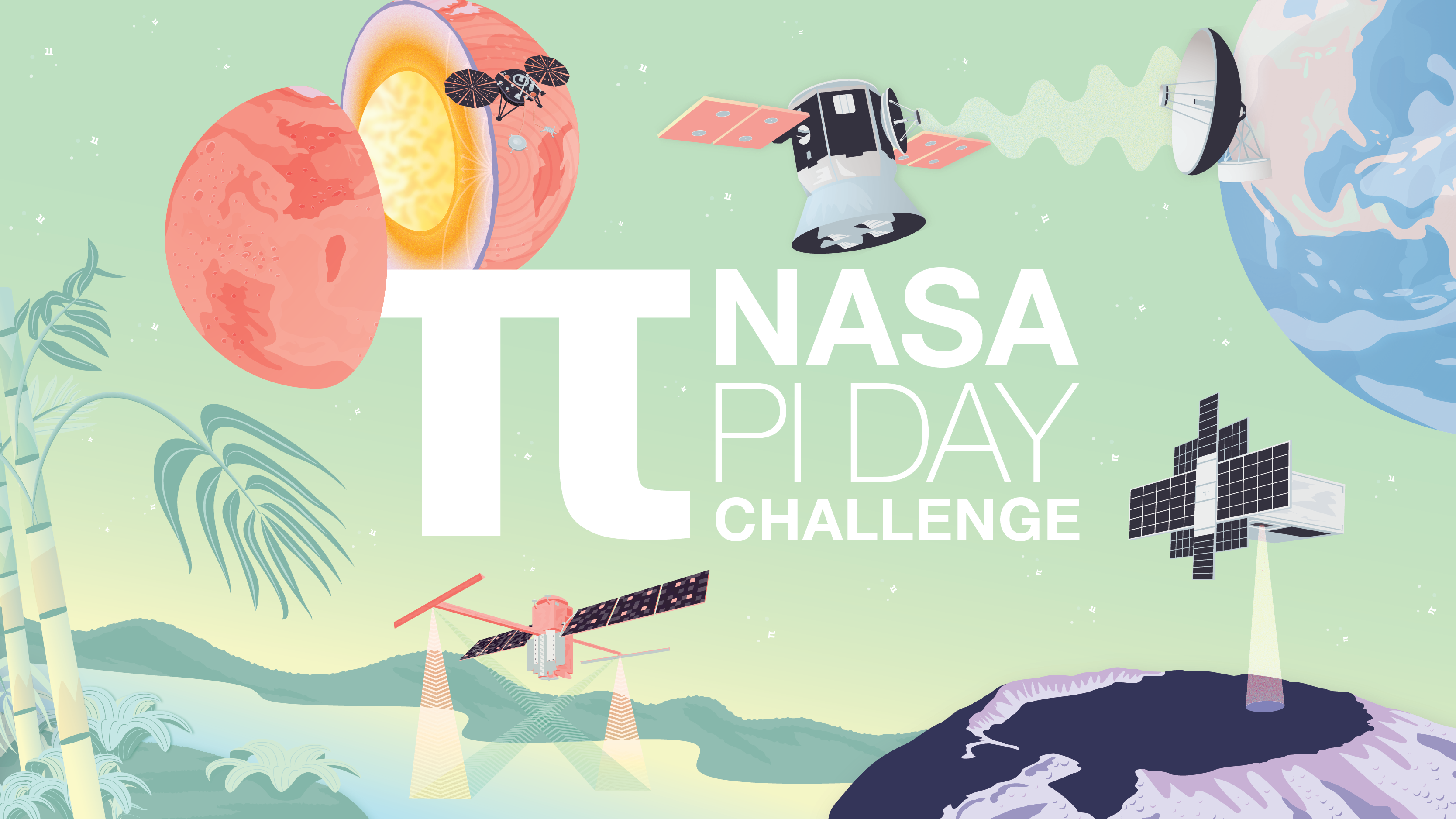
NASA Pi Day Challenge
This collection of illustrated math problems gets students using pi like NASA scientists and engineers exploring Earth and space.
Grades 4-12
Time Varies
-
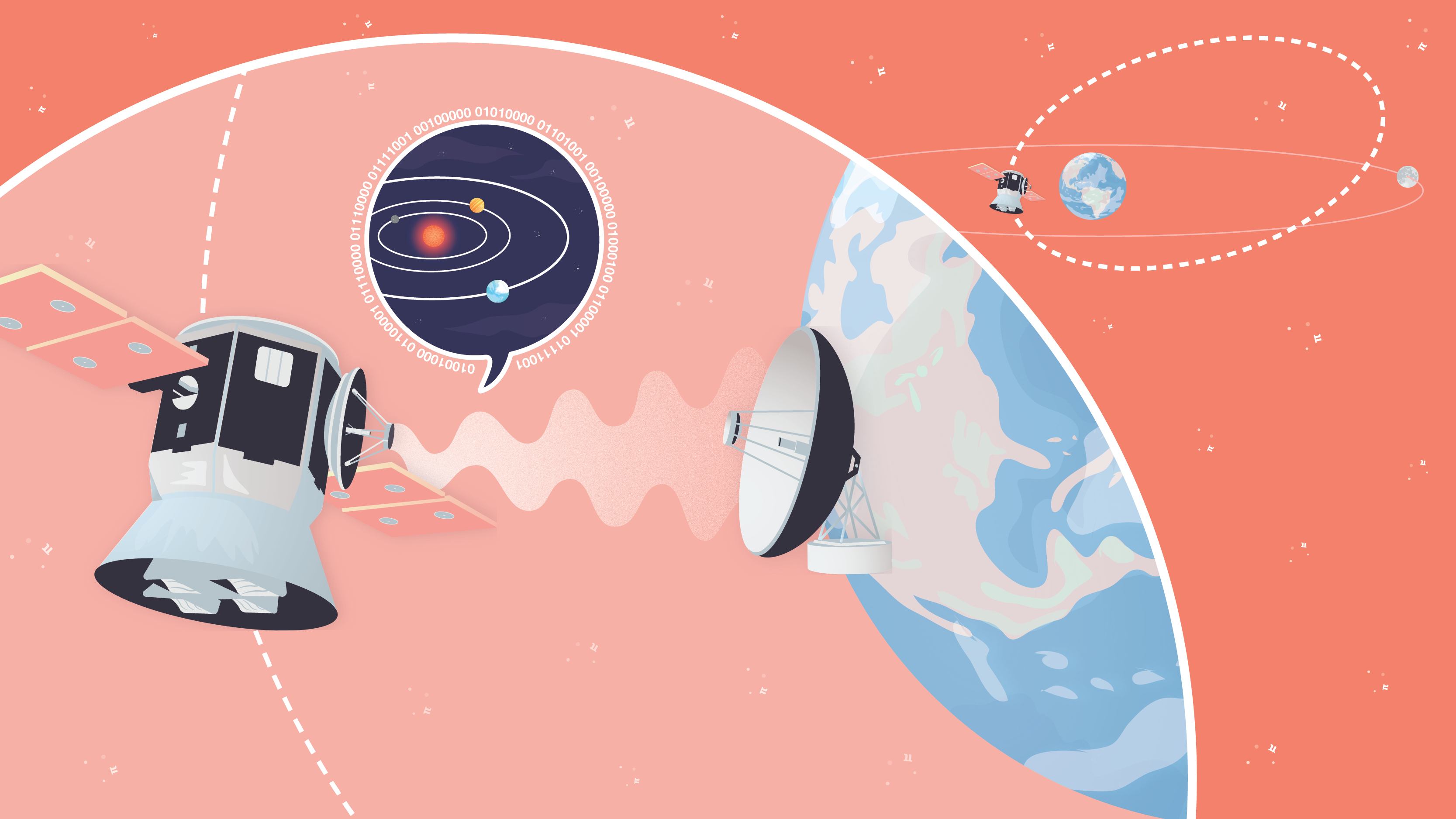
Pi in the Sky Lessons
Find everything you need to bring the NASA Pi Day Challenge into the classroom, including printable handouts of each illustrated math problem.
Grades 4-12
Time Varies
Articles
-

18 Ways NASA Uses Pi
Whether it's sending spacecraft to other planets, driving rovers on Mars, finding out what planets are made of or how deep alien oceans are, pi takes us far at NASA. Find out how pi helps us explore space.
-
10 Ways to Celebrate Pi Day With NASA on March 14
Find out what makes pi so special, how it’s used to explore space, and how you can join the celebration with resources from NASA.
Multimedia & Downloads
Recursos en español
TAGS: Pi, Pi Day, Dawn, Voyager, Engineering, Science, Mathematics
Teachable Moments | March 10, 2022
Pi Goes to Infinity and Beyond in NASA Challenge
Learn about pi and some of the ways the number is used at NASA. Then, dig into the science behind the Pi Day Challenge.
Update: March 15, 2022 – The answers are here! Visit the NASA Pi Day Challenge slideshow to view the illustrated answer keys for each of the problems in the 2022 challenge.
In the News
No matter what Punxsutawney Phil saw on Groundhog Day, a sure sign that spring approaches is Pi Day. Celebrated on March 14, it’s the annual holiday that pays tribute to the mathematical constant pi – the number that results from dividing any circle's circumference by its diameter.
Every year, Pi Day gives us a reason to not only celebrate the mathematical wonder that helps NASA explore the universe, but also to enjoy our favorite sweet and savory pies. Students can join in the fun by using pi to explore Earth and space themselves in our ninth annual NASA Pi Day Challenge.
Read on to learn more about the science behind this year's challenge and find out how students can put their math mettle to the test to solve real problems faced by NASA scientists and engineers as we explore Earth, the Moon, Mars, and beyond!
Visit the Pi in the Sky 9 lesson page to explore classroom resources and downloads for the 2022 NASA Pi Day Challenge. Image credit: NASA/JPL-Caltech | + Expand image

This artist's concept shows the Lunar Flashlight spacecraft, a six-unit CubeSat designed to search for ice on the Moon's surface using special lasers. Image credit: NASA/JPL-Caltech | › Full image details
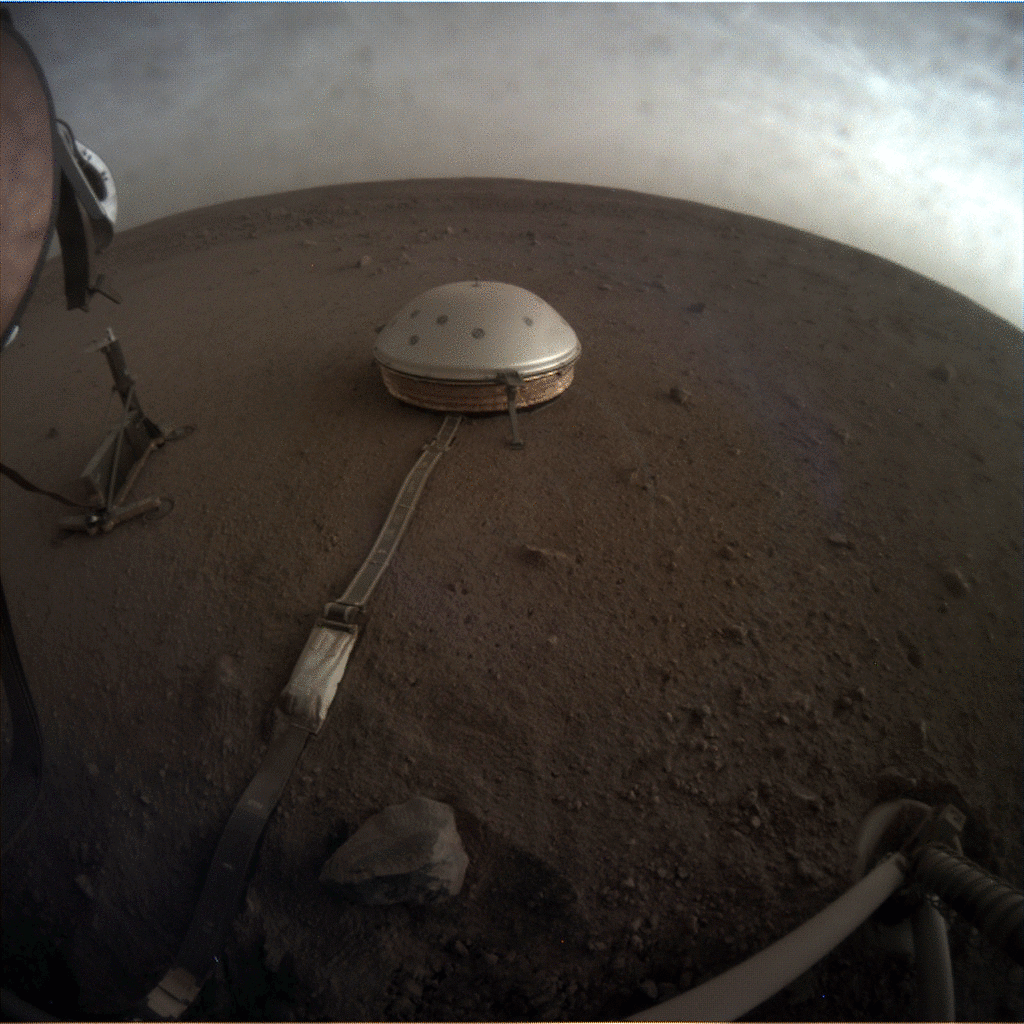
Clouds drift over the dome-covered seismometer, known as SEIS, belonging to NASA's InSight lander, on Mars. Credit: NASA/JPL-Caltech. | › Full image and caption
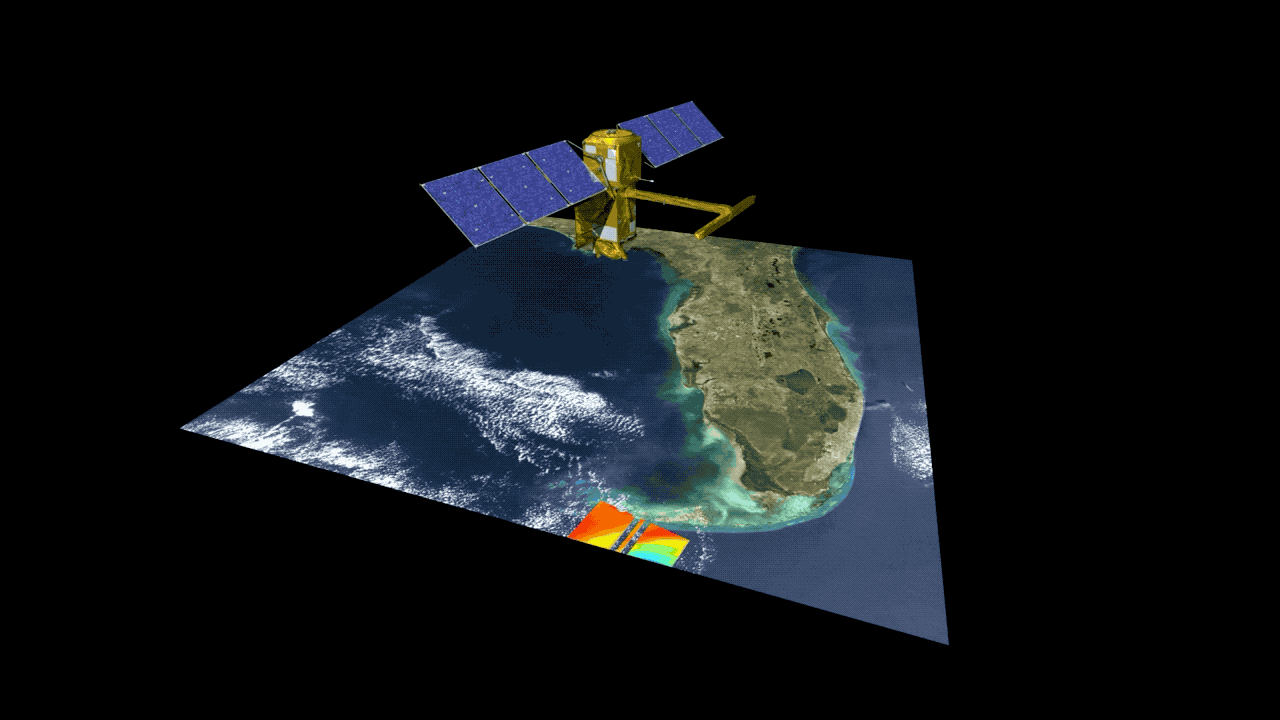
This animation shows the collection of data over the state of Florida, which is rich with rivers, lakes and wetlands. Credits: NASA/JPL-Caltech | + Expand image

Illustration of NASA’s Transiting Exoplanet Survey Satellite, or TESS. Credit: NASA | + Expand image
How It Works
Dividing any circle’s circumference by its diameter gives you an answer of pi, which is usually rounded to 3.14. Because pi is an irrational number, its decimal representation goes on forever and never repeats. In 2021, a supercomputer calculated pi to more than 62 trillion digits. But you might be surprised to learn that for space exploration, NASA uses far fewer digits of pi.
Here at NASA, we use pi to understand how much signal we can receive from a distant spacecraft, to calculate the rotation speed of a Mars helicopter blade, and to collect asteroid samples. But pi isn’t just used for exploring the cosmos. Since pi can be used to find the area or circumference of round objects and the volume or surface area of shapes like cylinders, cones, and spheres, it is useful in all sorts of ways. Architects use pi when designing bridges or buildings with arches; electricians use pi when calculating the conductance of wire; and you might even want to use pi to figure out how much frozen goodness you are getting in your ice cream cone.
In the United States, March 14 can be written as 3.14, which is why that date was chosen for celebrating all things pi. In 2009, the U.S. House of Representatives passed a resolution officially designating March 14 as Pi Day and encouraging teachers and students to celebrate the day with activities that teach students about pi. And that's precisely what the NASA Pi Day Challenge is all about!
The Science Behind the 2022 NASA Pi Day Challenge
This ninth installment of the NASA Pi Day Challenge includes four brain-busters that get students using pi to measure frost deep within craters on the Moon, estimate the density of Mars’ core, calculate the water output from a dam to assess its potential environmental impact, and find how far a planet-hunting satellite needs to travel to send data back to Earth.
Read on to learn more about the science and engineering behind the problems or click the link below to jump right into the challenge.
› Take the NASA Pi Day Challenge
› Educators, get the lesson here!
Lunar Logic
NASA’s Lunar Flashlight mission is a small satellite that will seek out signs of frost in deep, permanently shadowed craters around the Moon’s south pole. By sending infrared laser pulses to the surface and measuring how much light is reflected back, scientists can determine which areas of the lunar surface contain frost and which are dry. Knowing the locations of water-ice on the Moon could be key for future crewed missions to the Moon, when water will be a precious resource. In Lunar Logic, students use pi to find out how much surface area Lunar Flashlight will measure with a single pulse from its laser.
Core Conundrum
Since 2018, the InSight lander has studied the interior of Mars by measuring vibrations from marsquakes and the “wobble” of the planet as it rotates on its axis. Through careful analysis of the data returned from InSight, scientists were able to measure the size of Mars’ liquid core for the first time and estimate its density. In Core Conundrum, students use pi to do some of the same calculations, determining the volume and density of the Red Planet’s core and comparing it to that of Earth’s core.
Dam Deduction
The Surface Water and Ocean Topography, or SWOT mission will conduct NASA's first global survey of Earth's surface water. SWOT’s state-of-the-art radar will measure the elevation of water in major lakes, rivers, wetlands, and reservoirs while revealing unprecedented detail on the ocean surface. This data will help scientists track how these bodies of water are changing over time and improve weather and climate models. In Dam Deduction, students learn how data from SWOT can be used to assess the environmental impact of dams. Students then use pi to do their own analysis, finding the powered output of a dam based on the water height of its reservoir and inferring potential impacts of this quick-flowing water.
Telescope Tango
The Transiting Exoplanet Survey Satellite, or TESS, is designed to survey the sky in search of planets orbiting bright, nearby stars. TESS does this while circling Earth in a unique, never-before-used orbit that brings the spacecraft close to Earth about once every two weeks to transmit its data. This special orbit keeps TESS stable while giving it an unobstructed view of space. In its first two years, TESS identified more than 2,600 possible exoplanets in our galaxy with thousands more discovered during its extended mission. In Telescope Tango, students will use pi to calculate the distance traveled by TESS each time it sends data back to Earth.
Teach It
Celebrate Pi Day by getting students thinking like NASA scientists and engineers to solve real-world problems in NASA Pi Day Challenge. Completing the problem set and reading about other ways NASA uses pi is a great way for students to see the importance of the M in STEM.
Pi Day Resources
-

Pi in the Sky Lessons
Here's everything you need to bring the NASA Pi Day Challenge into the classroom.
Grades 4-12
Time Varies
-

NASA Pi Day Challenge
The entire NASA Pi Day Challenge collection can be found in one, handy slideshow for students.
Grades 4-12
Time Varies
-
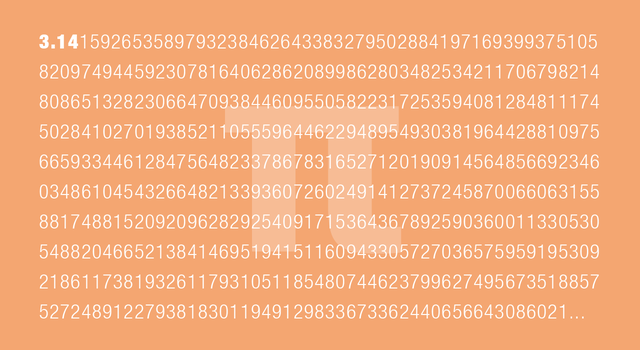
How Many Decimals of Pi Do We Really Need?
While you may have memorized more than 70,000 digits of pi, world record holders, a JPL engineer explains why you really only need a tiny fraction of that for most calculations.
-

18 Ways NASA Uses Pi
Whether it's sending spacecraft to other planets, driving rovers on Mars, finding out what planets are made of or how deep alien oceans are, pi takes us far at NASA. Find out how pi helps us explore space.
-
10 Ways to Celebrate Pi Day With NASA on March 14
Find out what makes pi so special, how it’s used to explore space, and how you can join the celebration with resources from NASA.
-

Infographic: Planet Pi
This poster shows some of the ways NASA scientists and engineers use the mathematical constant pi (3.14) and includes common pi formulas.
-
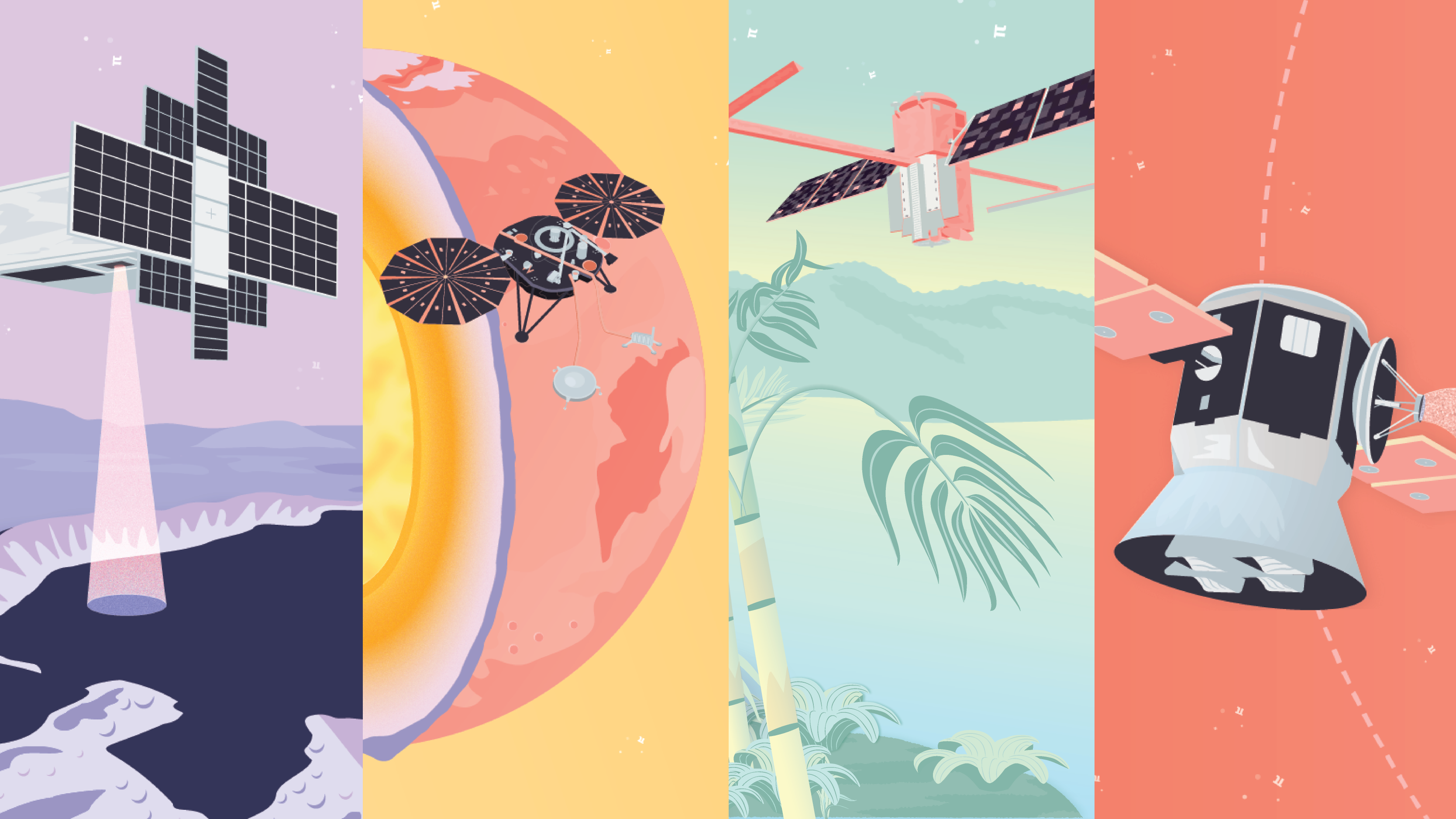
Downloads
Can't get enough pi? Download this year's NASA Pi Day Challenge graphics, including mobile phone and desktop backgrounds:
- Pi in the Sky 9 Poster (PDF, 11.2 MB)
- Lunar Flashlight Background: Phone | Desktop
- Mars InSight Lander Background: Phone | Desktop
- SWOT Mission Background: Phone | Desktop
- TESS Mission - Downlink Background: Phone | Desktop
- TESS Mission - Science Background (not pictured): Phone | Desktop
- Medley Background (not pictured): Phone | Desktop
-
Pi Day: What's Going 'Round
Tell us what you're up to this Pi Day and share your stories and photos on our showcase page.
Plus, join the conversation using the hashtag #NASAPiDayChallenge on Facebook, Twitter, and Instagram.
Recursos en español
Related Lessons for Educators
-
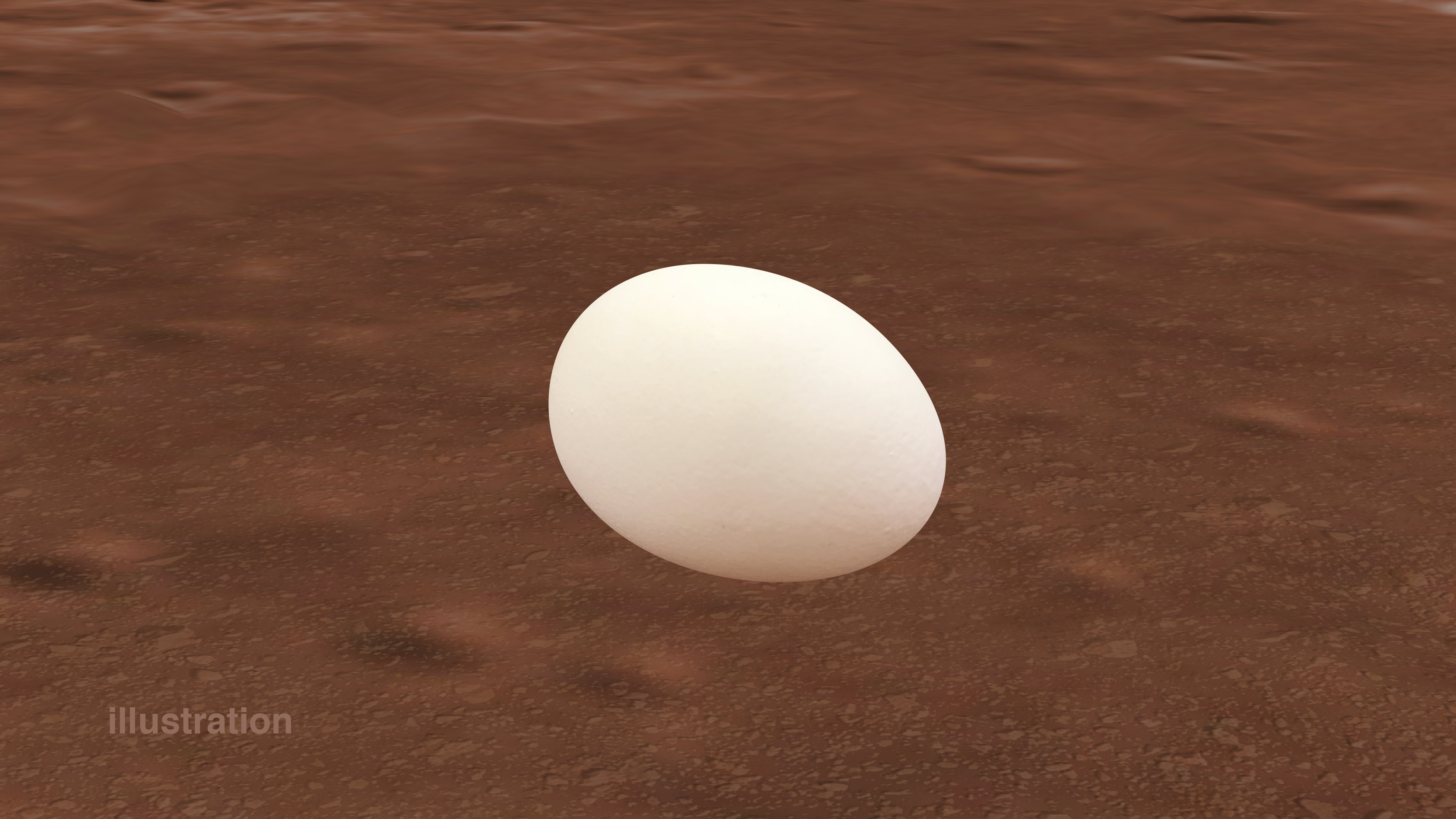
Planetary Egg Wobble and Newton's First Law
Students try to determine the interior makeup of an egg (hard-boiled or raw) based on their understanding of center of mass and Newton’s first law of motion.
Grades 3-8
Time 30 min to 1 hour
-
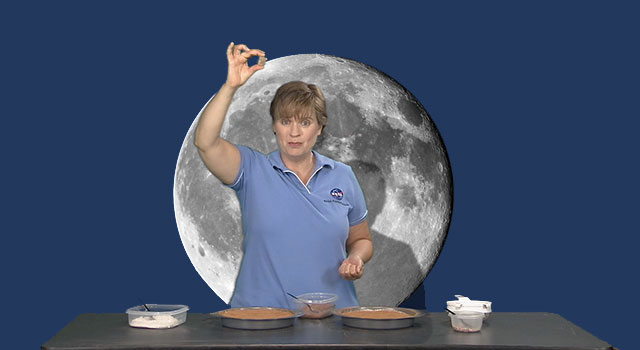
Whip Up a Moon-Like Crater
Whip up a moon-like crater with baking ingredients as a demonstration for students.
Grades 1-6
Time 30 min to 1 hour
-
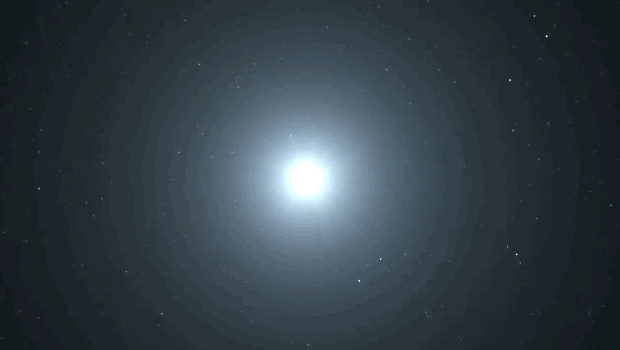
Exploring Exoplanets with Kepler
Students use math concepts related to transits to discover real-world data about Mercury, Venus and planets outside our solar system.
Grades 6-12
Time 30 min to 1 hour
-
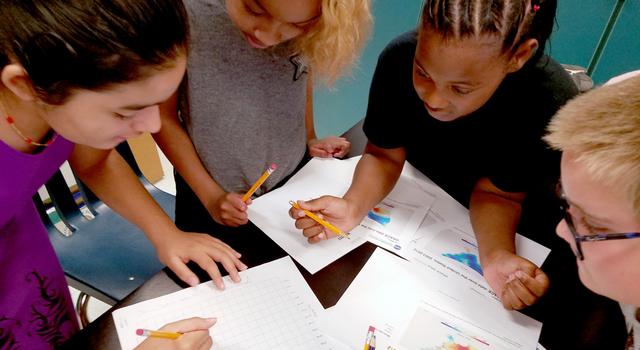
Tracking Water Using NASA Satellite Data
Using real data from NASA’s GRACE satellites, students will track water mass changes in the U.S.
Grades 4-8
Time 30 min to 1 hour
-
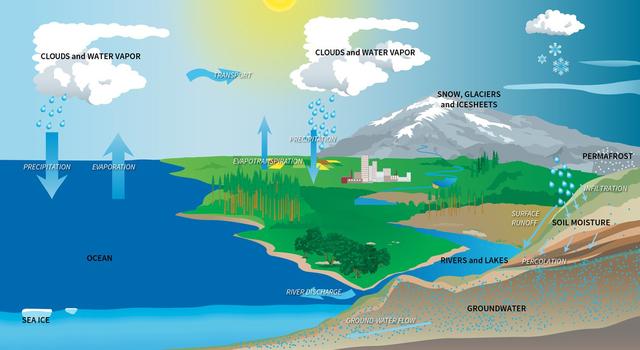
Modeling the Water Budget
Students use a spreadsheet model to understand droughts and the movement of water in the water cycle.
Grades 5-8
Time 30 min to 1 hour
Related Activities for Students
-
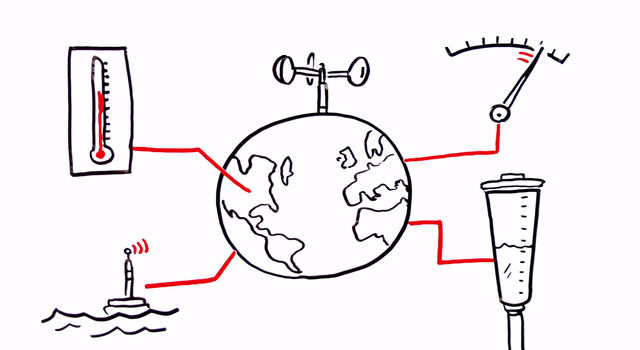
NASA's Earth Minute: Mission to Earth?
NASA doesn't just explore outer space! It studies Earth, too, with a fleet of spacecraft and scientists far and wide.
Type Video
Subject Science
-

Look at the Moon! Journaling Project
Draw what you see in a Moon Journal and see if you can predict the moon phase that comes next.
Type Project
Subject Science
-
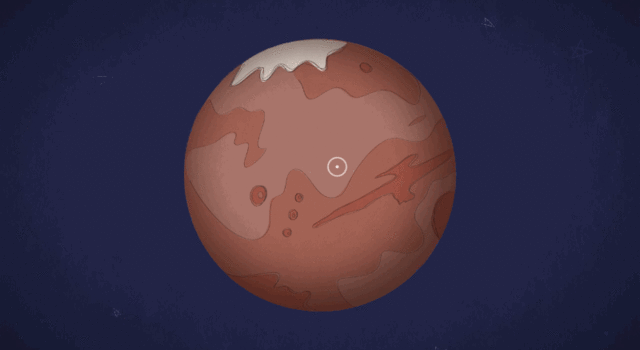
Mars in a Minute: Are There Quakes on Mars?
Are there earthquakes on Mars – or rather, "marsquakes"? What could they teach us about the Red Planet?
Type Video
Subject Science
Explore More
Infographic
Facts and Figures
Missions and Instruments
Websites
TAGS: Pi Day, Pi, Math, NASA Pi Day Challenge, Moon, Lunar Flashlight, Mars, InSight, Earth, Climate, SWOT, Exoplanets, Universe, TESS, Teachers, Educators, Parents, Students, Lessons, Activities, Resources, K-12
Teachable Moments | March 5, 2021
Take Math to Mars and Beyond With NASA's Pi Day Challenge
Update: March 15, 2021 – The answers are here! Visit the NASA Pi Day Challenge slideshow to view the illustrated answer keys (also available as a text-only doc) with each problem.
Learn about pi and the history of Pi Day before exploring some of the ways the number is used at NASA. Then, try the math for yourself in our Pi Day Challenge.

Visit the Pi in the Sky 8 lesson page to explore classroom resources and downloads for the 2021 NASA Pi Day Challenge. Image credit: NASA/JPL-Caltech | + Expand image
Captured on Oct. 20, 2020, during the OSIRIS-REx mission’s Touch-And-Go (TAG) sample collection event, this series of images shows the SamCam imager’s field of view as the NASA spacecraft approached and touched asteroid Bennu’s surface. Image credit: NASA/Goddard/University of Arizona | › Full image and caption
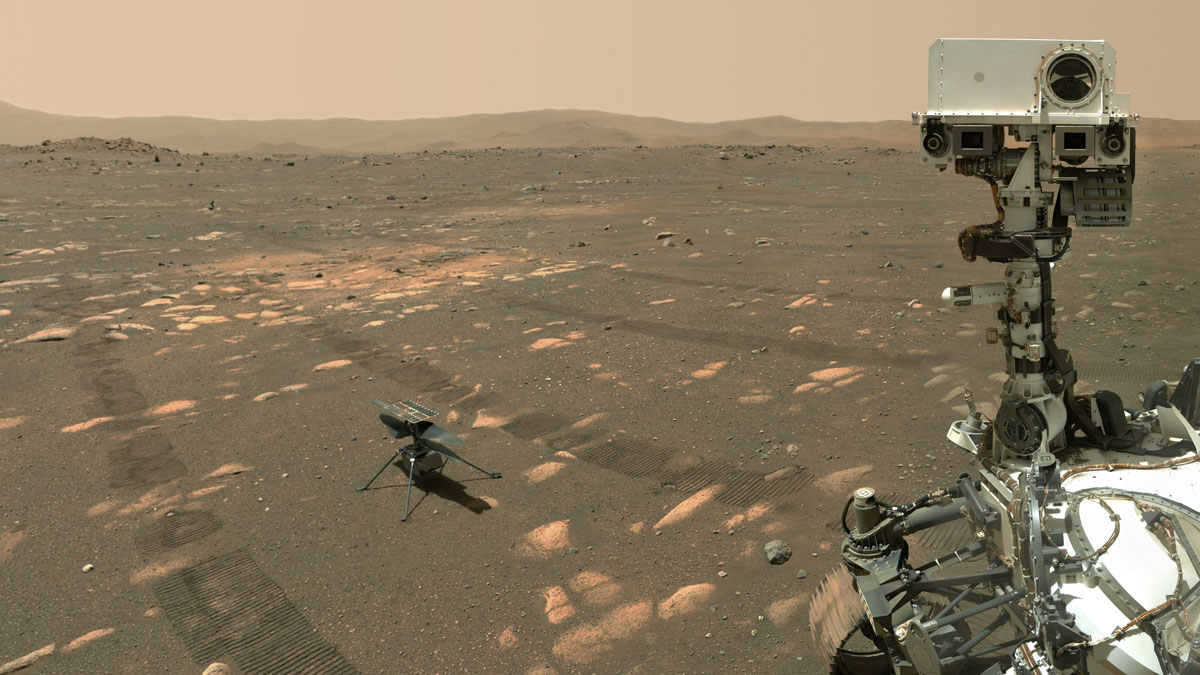
NASA’s Perseverance Mars rover took a selfie with the Ingenuity helicopter, seen here about 13 feet (3.9 meters) from the rover on April 6, 2021. Image credit: NASA/JPL-Caltech/MSSS | + Expand image

This artist's concept shows what Deep Space Station-23, a new antenna dish capable of supporting both radio wave and laser communications, will look like when completed at the Deep Space Network's Goldstone, California, complex. Image credit: NASA/JPL-Caltech | + Expand image
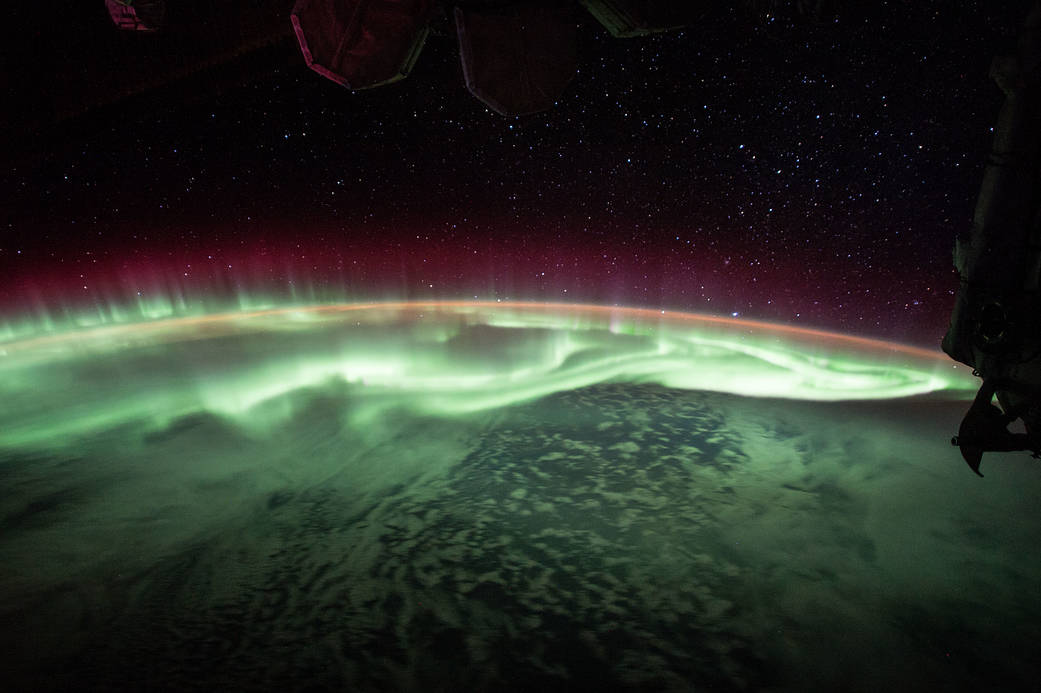
Expedition 52 Flight Engineer Jack Fischer of NASA shared photos and time-lapse video of a glowing green aurora seen from his vantage point 250 miles up, aboard the International Space Station. This aurora photo was taken on June 26, 2017. Image credit: NASA | › Full image and caption
In the News
As March 14 approaches, it’s time to get ready to celebrate Pi Day! It’s the annual holiday that pays tribute to the mathematical constant pi – the number that results from dividing any circle's circumference by its diameter.
Pi Day comes around only once a year, giving us a reason to chow down on our favorite sweet and savory pies while we appreciate the mathematical marvel that helps NASA explore Earth, the solar system, and beyond. There’s no better way to observe this day than by getting students exploring space right along with NASA by doing the math in our Pi Day Challenge. Keep reading to find out how students – and you – can put their math mettle to the test and solve real problems faced by NASA scientists and engineers as they explore the cosmos!
How It Works
Dividing any circle’s circumference by its diameter gives us pi, which is often rounded to 3.14. However, pi is an irrational number, meaning its decimal representation goes on forever and never repeats. Pi has been calculated to 50 trillion digits, but NASA uses far fewer for space exploration.
Some people may think that a circle has no points. In fact, a circle does have points, and knowing what pi is and how to use it is far from pointless. Pi is used for calculating the area and circumference of circular objects and the volume of shapes like spheres and cylinders. So it's useful for everyone from farmers storing crops in silos to manufacturers of water storage tanks to people who want to find the best value when ordering a pizza. At NASA, we use pi to find the best place to touch down on Mars, study the health of Earth's coral reefs, measure the size of a ring of planetary debris light years away, and lots more.
In the United States, one format to write March 14 is 3.14, which is why we celebrate on that date. In 2009, the U.S. House of Representatives passed a resolution officially designating March 14 as Pi Day and encouraging teachers and students to celebrate the day with activities that teach students about pi. And you're in luck, because that's precisely what the NASA Pi Day Challenge is all about.
The Science Behind the 2021 NASA Pi Day Challenge
This year, the NASA Pi Day Challenge offers up four brain-ticklers that will require students to use pi to collect samples from an asteroid, fly a helicopter on Mars for the first time, find efficient ways to talk with distant spacecraft, and study the forces behind Earth's beautiful auroras. Learn more about the science and engineering behind the problems below or click the link below to jump right into the challenge. Be sure to check back on March 15 for the answers to this year’s challenge.
› Take the NASA Pi Day Challenge
› Educators, get the lesson here!
Sample Science
NASA’s OSIRIS-REx mission has flown to an asteroid and collected a sample of surface material to bring back to Earth. (It will arrive back at Earth in 2023.) The mission is designed to help scientists understand how planets form and add to what we know about near-Earth asteroids, like the one visited by OSIRIS-REx, asteroid Bennu. Launched in 2016, OSIRIS-REx began orbiting Bennu in 2018 and successfully performed its maneuver to retrieve a sample on October 20, 2020. In the Sample Science problem, students use pi to determine how much of the spacecraft's sample-collection device needs to make contact with the surface of Bennu to meet mission requirements for success.
Whirling Wonder
Joining the Perseverance rover on Mars is the first helicopter designed to fly on another planet. Named Ingenuity, the helicopter is a technology demonstration, meaning it's a test to see if a similar device could be used for a future Mars mission. To achieve the first powered flight on another planet, Ingenuity must spin its blades at a rapid rate to generate lift in Mars’ thin atmosphere. In Twirly Whirly, students use pi to compare the spin rate of Ingenuity’s blades to those of a typical helicopter on Earth.
Signal Solution
NASA uses radio signals to communicate with spacecraft across the solar system and in interstellar space. As more and more data flows between Earth and these distant spacecraft, NASA needs new technologies to improve how quickly data can be received. One such technology in development is Deep Space Optical Communications, which will use near-infrared light instead of radio waves to transmit data. Near-infrared light, with its higher frequency than radio waves, allows for more data to be transmitted per second. In Signal Solution, students can compare the efficiency of optical communication with radio communication, using pi to crunch the numbers.
Force Field
Earth’s magnetic field extends from within the planet to space, and it serves as a protective shield, blocking charged particles from the Sun. Known as the solar wind, these charged particles of helium and hydrogen race from the Sun at hundreds of miles per second. When they reach Earth, they would bombard our planet and orbiting satellites were it not for the magnetic field. Instead, they are deflected, though some particles become trapped by the field and are directed toward the poles, where they interact with the atmosphere, creating auroras. Knowing how Earth’s magnetic field shifts and how particles interact with the field can help keep satellites in safe orbits. In Force Field, students use pi to calculate how much force a hydrogen atom would experience at different points along Earth’s magnetic field.
Teach It
Pi Day is a fun and engaging way to get students thinking like NASA scientists and engineers. By solving the NASA Pi Day Challenge problems below, reading about other ways NASA uses pi, and doing the related activities, students can see first hand how math is an important part of STEM.
Pi Day Resources
-
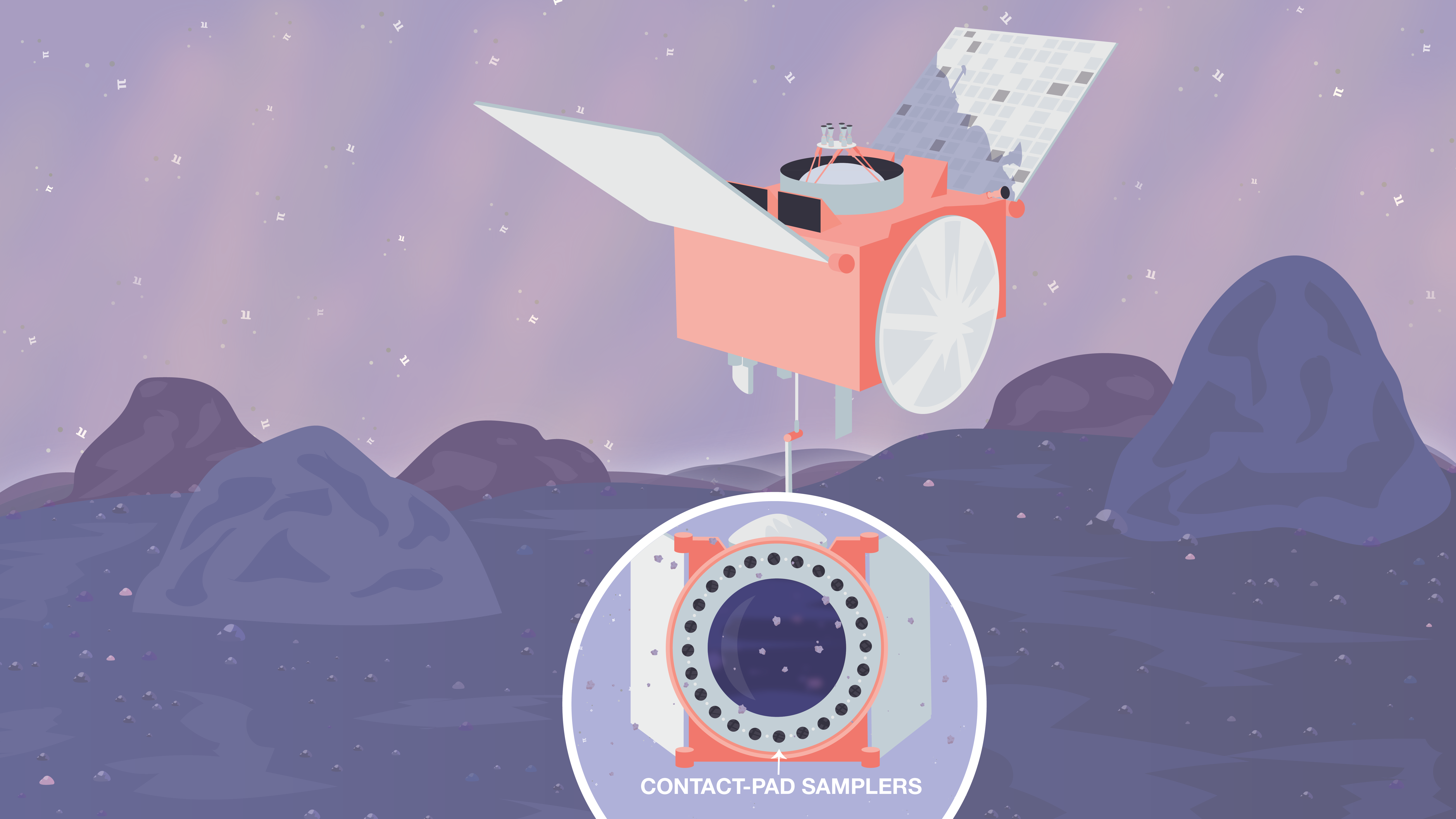
Pi in the Sky Lessons
Here's everything you need to bring the NASA Pi Day Challenge into the classroom.
Grades 4-12
Time Varies
-

NASA Pi Day Challenge
The entire NASA Pi Day Challenge collection can be found in one, handy slideshow for students.
Grades 4-12
Time Varies
-

How Many Decimals of Pi Do We Really Need?
While you may have memorized more than 70,000 digits of pi, world record holders, a JPL engineer explains why you really only need a tiny fraction of that for most calculations.
-

18 Ways NASA Uses Pi
Whether it's sending spacecraft to other planets, driving rovers on Mars, finding out what planets are made of or how deep alien oceans are, pi takes us far at NASA. Find out how pi helps us explore space.
-
10 Ways to Celebrate Pi Day With NASA on March 14
Find out what makes pi so special, how it’s used to explore space, and how you can join the celebration with resources from NASA.
-

Infographic: Planet Pi
This poster shows some of the ways NASA scientists and engineers use the mathematical constant pi (3.14) and includes common pi formulas.
-
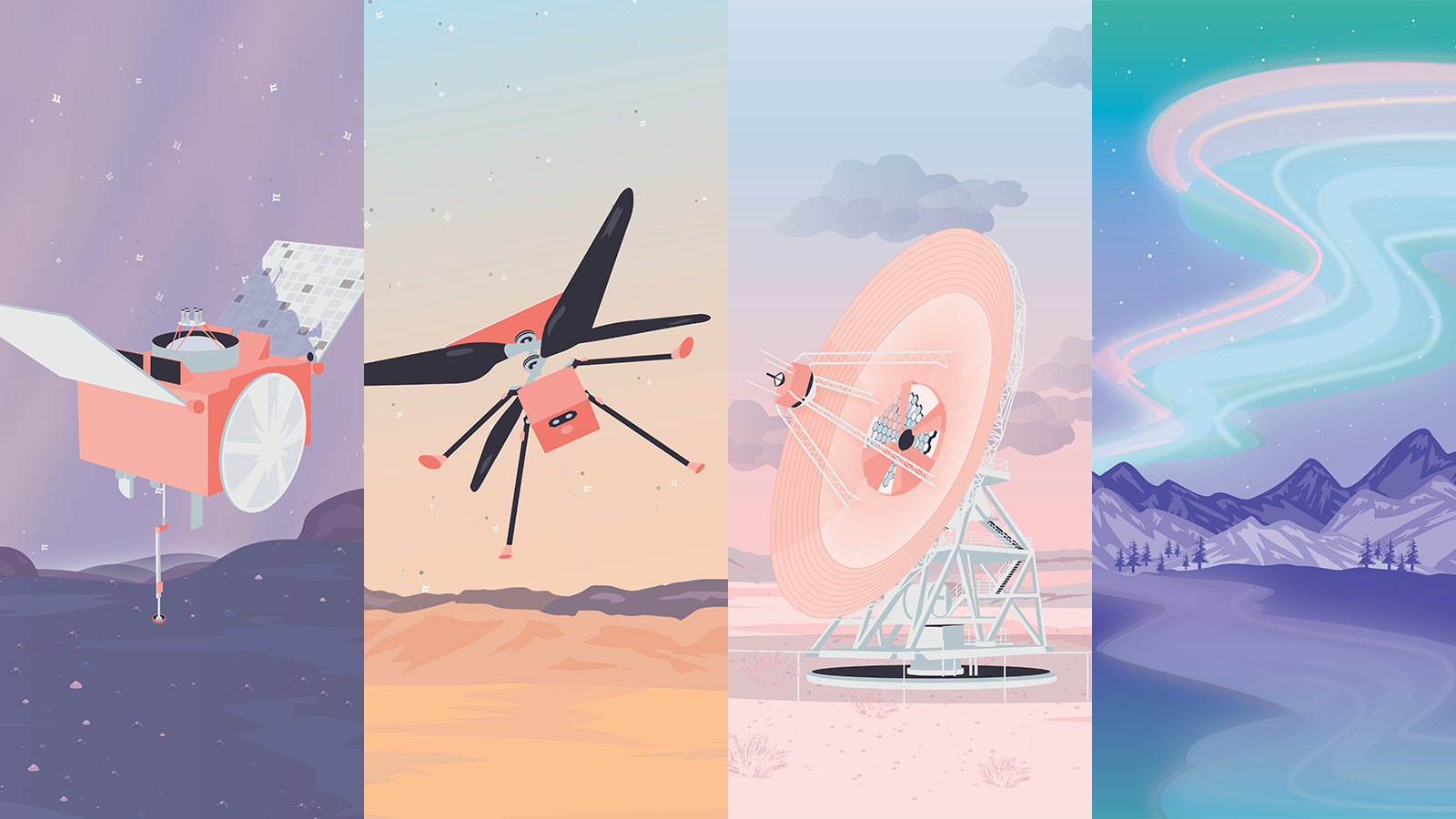
-
Pi Day: What's Going 'Round
Tell us what you're up to this Pi Day and share your stories and photos on our showcase page.
Plus, join the conversation using the hashtag #NASAPiDayChallenge on Facebook, Twitter, and Instagram.
Related Lessons for Educators
-

Robotic Arm Challenge
In this challenge, students will use a model robotic arm to move items from one location to another. They will engage in the engineering design process to design, build and operate the arm.
Grades K-8
Time 30 min to 1 hour
-

Whip Up a Moon-Like Crater
Whip up a moon-like crater with baking ingredients as a demonstration for students.
Grades 1-6
Time 30 min to 1 hour
-
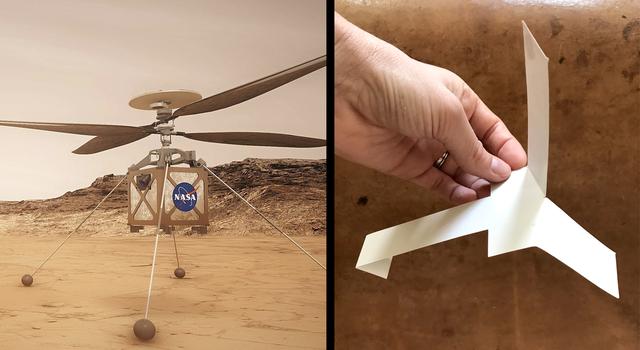
Make a Paper Mars Helicopter
In this lesson, students build a paper helicopter, then improve the design and compare and measure performance.
Grades 2-8
Time 30 min to 1 hour
-
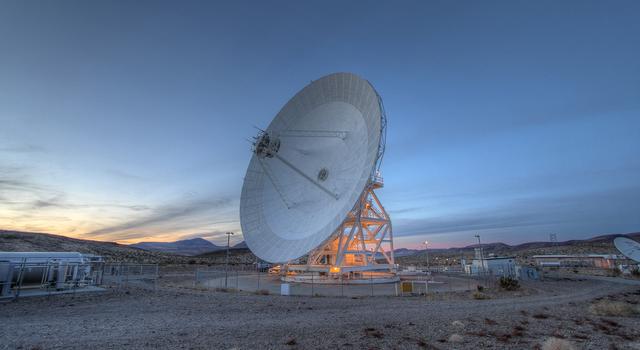
Speaking in Phases
Students learn how waves are used in communication between far-away spacecraft and the Deep Space Network on Earth.
Grades 3-8
Time 30 min to 1 hour
-
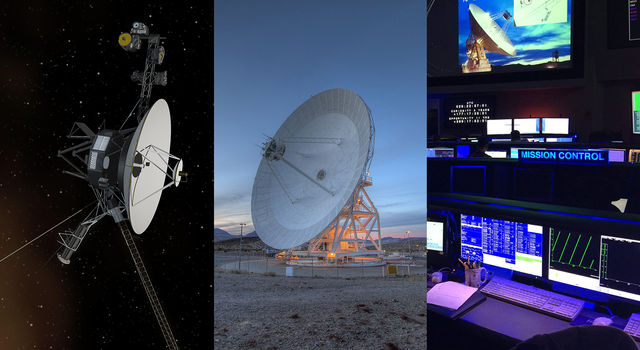
Catching a Whisper from Space
Students kinesthetically model the mathematics of how NASA communicates with spacecraft.
Grades 4-12
Time 1-2 hours
-
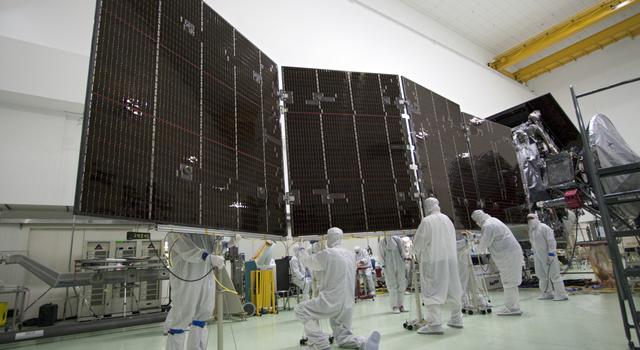
Collecting Light: Inverse Square Law Demo
In this activity, students learn how light and energy are spread throughout space. The rate of change can be expressed mathematically, demonstrating why spacecraft like NASA’s Juno need so many solar panels.
Grades 6-8
Time under 30 min
-
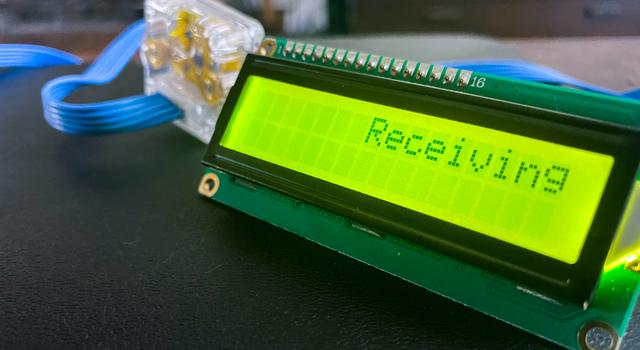
Build a Relay Inspired by Space Communications
In this intermediate-level programming challenge, students use microdevices along with light and mirrors to build a relay that can send information to a distant detector.
Grades 8-12
Time 1-2 hours
-

Math Rocks: A Lesson in Asteroid Dynamics
Students use math to investigate a real-life asteroid impact.
Grades 8-12
Time 30 min to 1 hour
Related Activities for Students
-
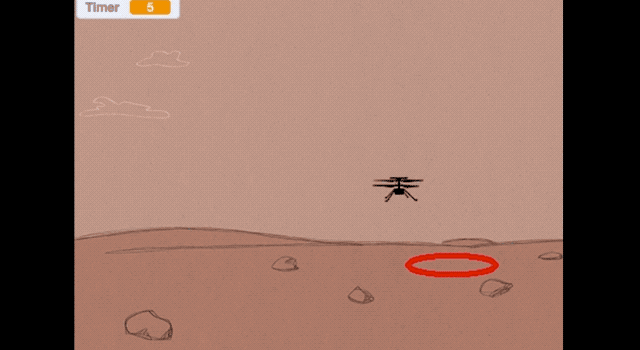
Code a Mars Helicopter Video Game
Create a video game that lets players explore the Red Planet with a helicopter like the one going to Mars with NASA's Perseverance rover!
Type Project
Subject Technology
-

Make a Paper Mars Helicopter
Build a paper helicopter, then see if you can improve the design like NASA engineers did when making the first helicopter for Mars.
Type Project
Subject Engineering
-
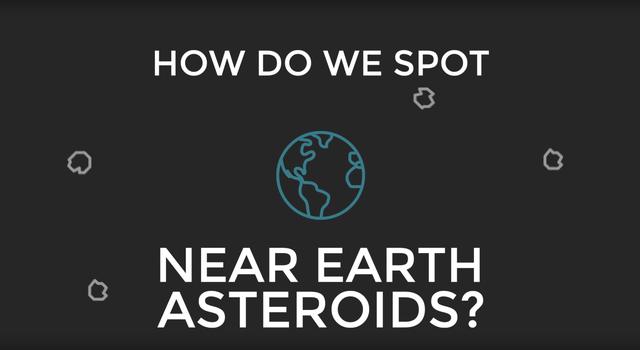
How Does NASA Spot a Near-Earth Asteroid?
Watch this one-minute video to find out how NASA spots and tracks asteroids that fly close to Earth.
Type Video
Subject Science
-

What's That Space Rock?
Find out how to tell the difference between asteroids, comets, meteors, meteorites and other bodies in our solar system.
Type Slideshow
Subject Science
Explore More
Infographic
Facts and Figures
Missions and Instruments
Websites
TAGS: Pi, Pi Day, NASA Pi Day Challenge, Math, Mars, Perseverance, Ingenuity, Mars Helicopter, OSIRIS-REx, Bennu, Asteroid, Auroras, Earth, Magnetic Field, DSOC, Light Waves, DSN, Deep Space Network, Space Communications
Teachable Moments | March 6, 2020
We've Got the Formula for a Stellar Pi Day
Update: March 16, 2020 – The answers to the 2020 NASA Pi Day Challenge are here! View the illustrated answer key (also available as a text-only doc).
In the News
Our annual opportunity to indulge in a shared love of space exploration, mathematics and sweet treats has come around again! Pi Day is the March 14 holiday that celebrates the mathematical constant pi – the number that results from dividing any circle's circumference by its diameter.

Visit the Pi in the Sky 7 lesson page to explore classroom resources and downloads for the 2019 NASA Pi Day Challenge. Image credit: NASA/JPL-Caltech | + Expand image

A new Mars landing technique called Range Trigger is reducing the size of the ellipse where spacecraft touch down. Image credit: NASA/JPL-Caltech | › Full image and caption
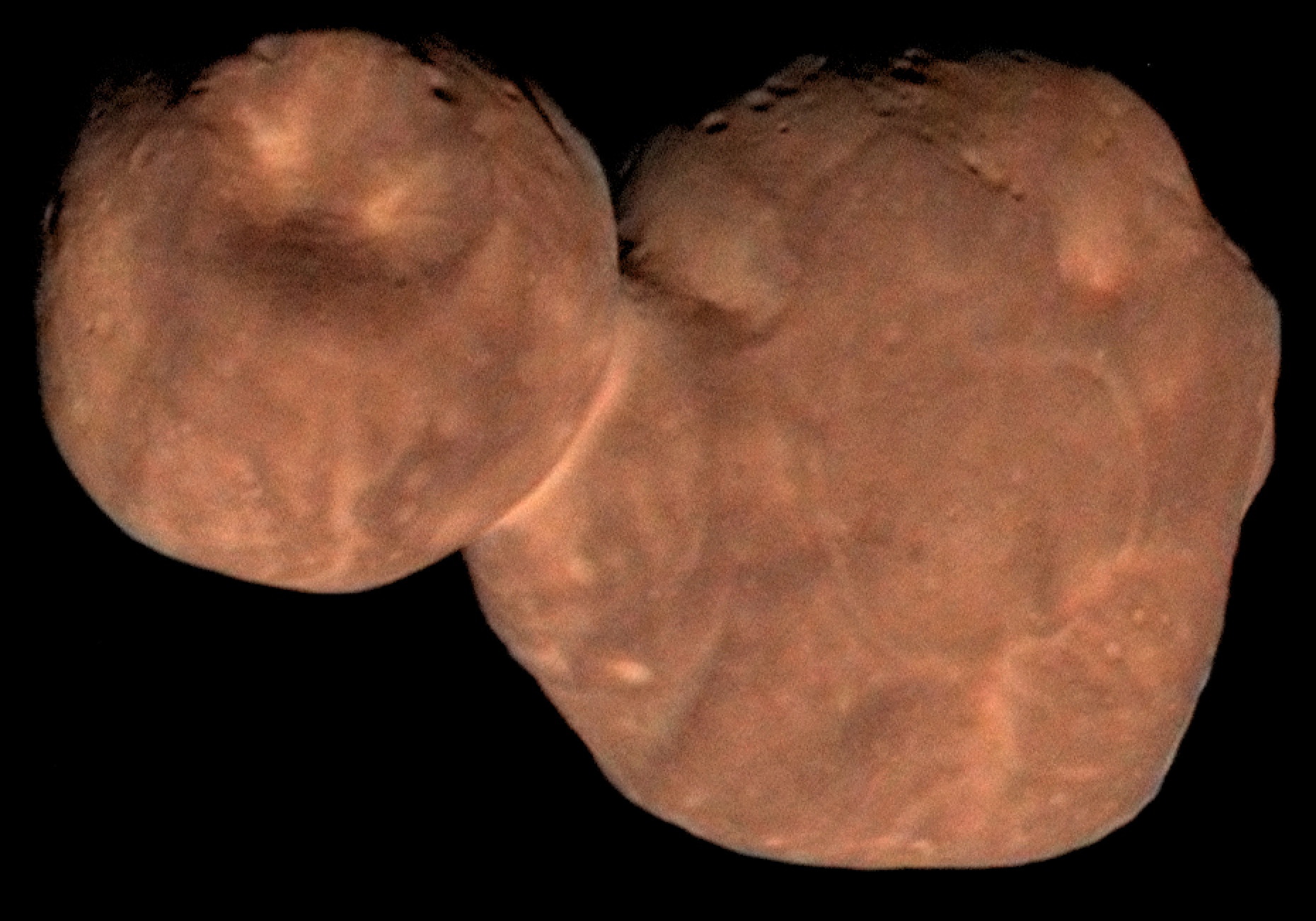
Composite image of the Kuiper Belt object Arrokoth from NASA's New Horizons spacecraft. Image credit: NASA/Johns Hopkins University Applied Physics Laboratory/Southwest Research Institute/Roman Tkachenko | › Full image and caption
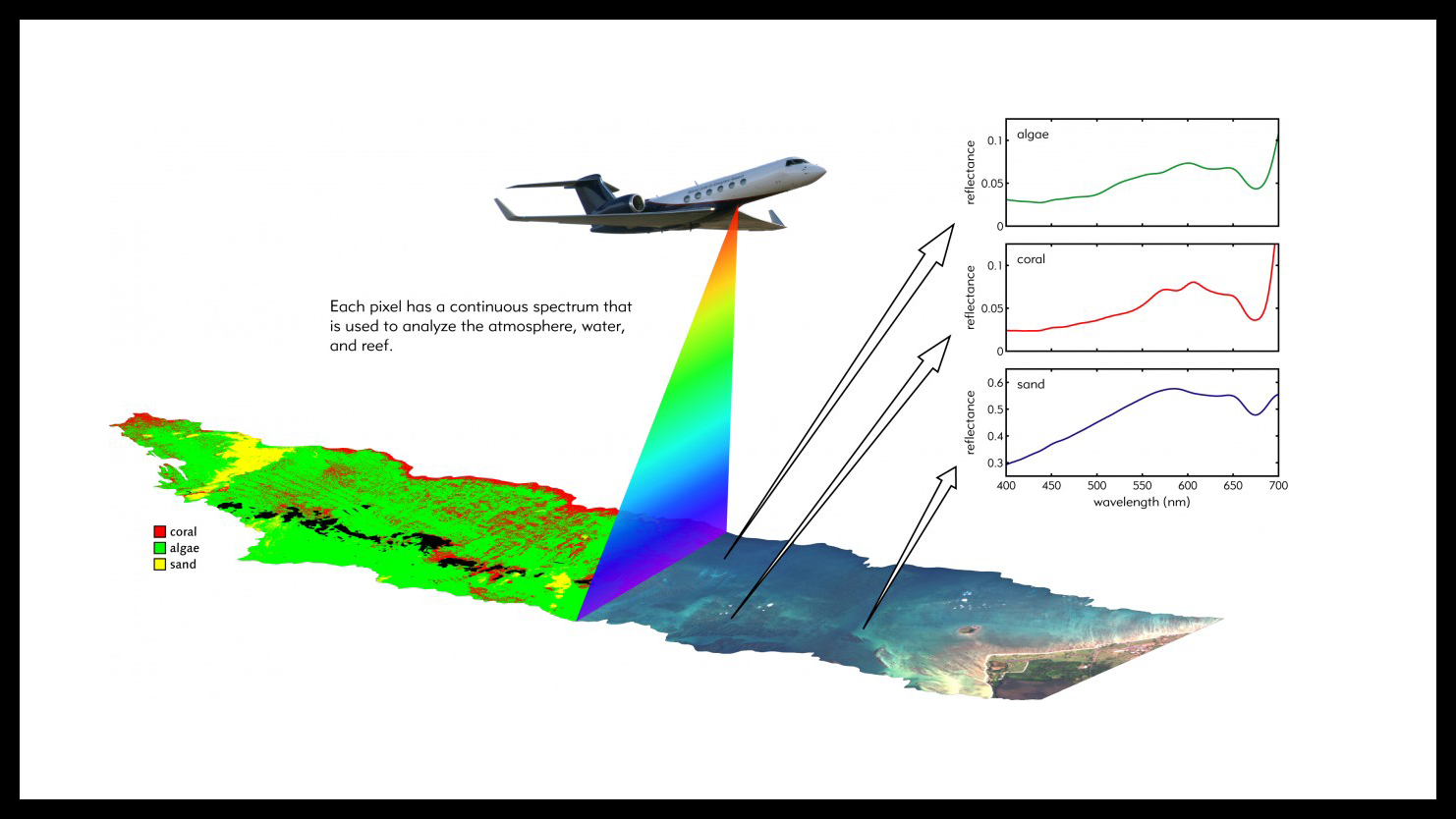
The CORAL mission records the spectra of light reflected from the ocean to study the composition and health of Earth's coral reefs. Image credit: NASA | + Expand image
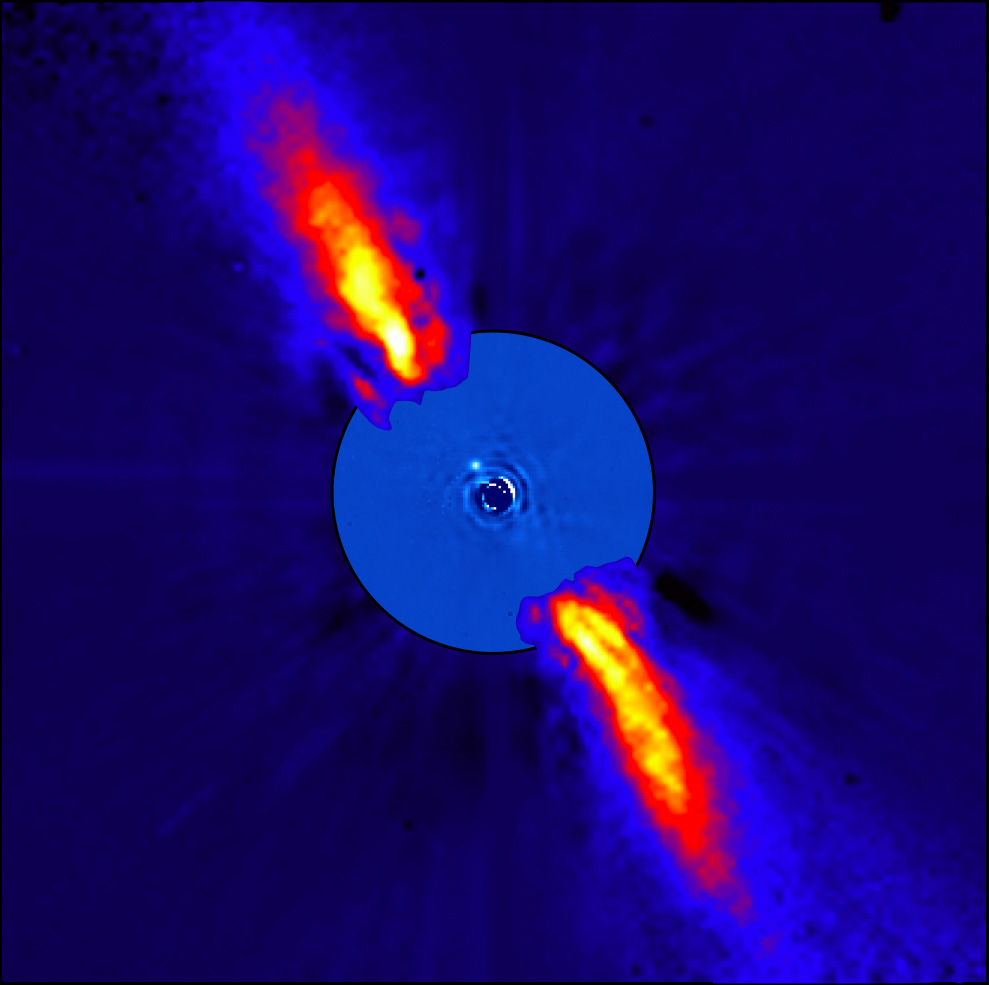
The star Beta Pictoris and its surrounding debris disk in near-infrared light. Image credit: ESO/A.-M. Lagrange et al. | › Full image and caption
Besides providing an excuse to eat all varieties of pie, Pi Day gives us a chance to appreciate some of the ways NASA uses pi to explore the solar system and beyond. You can do the math for yourself – or get students doing it – by taking part in the NASA Pi Day Challenge. Find out below how to test your pi skills with real-world problems faced by NASA space explorers, plus get lessons and resources for educators.
How It Works
The ratio of any circle's circumference to its diameter is equal to pi, which is often rounded to 3.14. But pi is what is known as an irrational number, so its decimal representation never ends, and it never repeats. Though it has been calculated to trillions of digits, we use far fewer at NASA.
Pi is useful for all sorts of things, like calculating the circumference and area of circular objects and the volume of cylinders. That's helpful information for everyone from farmers irrigating crops to tire manufacturers to soup-makers filling their cans. At NASA, we use pi to calculate the densities of planets, point space telescopes at distant stars and galaxies, steer rovers on the Red Planet, put spacecraft into orbit and so much more! With so many practical applications, it's no wonder so many people love pi!
In the U.S., 3.14 is also how we refer to March 14, which is why we celebrate the mathematical marvel that is pi on that date each year. In 2009, the U.S. House of Representatives passed a resolution officially designating March 14 as Pi Day and encouraging teachers and students to celebrate the day with activities that teach students about pi.
The NASA Pi Day Challenge
This year's NASA Pi Day Challenge poses four puzzlers that require pi to compare the sizes of Mars landing areas, calculate the length of a year for one of the most distant objects in the solar system, measure the depth of the ocean from an airplane, and determine the diameter of a distant debris disk. Learn more about the science and engineering behind the problems below or click the link to jump right into the challenge.
› Take the NASA Pi Day Challenge
› Educators, get the lesson here!
Mars Maneuver
Long before a Mars rover touches down on the Red Planet, scientists and engineers must determine where to land. Rather than choosing a specific landing spot, NASA selects an area known as a landing ellipse. A Mars rover could land anywhere within this ellipse. Choosing where the landing ellipse is located requires compromising between getting as close as possible to interesting science targets and avoiding hazards like steep slopes and large boulders, which could quickly bring a mission to its end. In the Mars Maneuver problem, students use pi to see how new technologies have reduced the size of landing ellipses from one Mars rover mission to the next.
Cold Case
In January 2019, NASA's New Horizons spacecraft sped past Arrokoth, a frigid, primitive object that orbits within the Kuiper Belt, a doughnut-shaped ring of icy bodies beyond the orbit of Neptune. Arrokoth is the most distant Kuiper Belt object to be visited by a spacecraft and only the second object in the region to have been explored up close. To get New Horizons to Arrokoth, mission navigators needed to know the orbital properties of the object, such as its speed, distance from the Sun, and the tilt and shape of its orbit. This information is also important for scientists studying the object. In the Cold Case problem, students can use pi to determine how long it takes the distant object to make one trip around the Sun.
Coral Calculus
Coral reefs provide food and shelter to many ocean species and protect coastal communities against extreme weather events. Ocean warming, invasive species, pollutants, and acidification caused by climate change can harm the tiny living coral organisms responsible for building coral reefs. To better understand the health of Earth's coral reefs, NASA's COral Reef Airborne Laboratory, or CORAL, mission maps them from the air using spectroscopy, studying how light interacts with the reefs. To make accurate maps, CORAL must be able to differentiate among coral, algae and sand on the ocean floor from an airplane. And to do that, it needs to calculate the depth of the ocean at every point it maps by measuring how much sunlight passes through the ocean and is reflected upward from the ocean floor. In Coral Calculus, students use pi to measure the water depth of an area mapped by the CORAL mission and help scientists better understand the status of Earth's coral reefs.
Planet Pinpointer
Our galaxy contains billions of stars, many of which are likely home to exoplanets – planets outside our solar system. So how do scientists decide where to look for these worlds? Using data gathered by NASA's Spitzer Space Telescope, researchers found that they're more likely to find giant exoplanets around young stars surrounded by debris disks, which are made up of material similar to what's found in the asteroid belt and Kuiper Belt in our solar system. Sure enough, after discovering a debris disk around the star Beta Pictoris, researchers later confirmed that it is home to at least two giant exoplanets. Learning more about Beta Pictoris' debris disk could give scientists insight into the formation of these giant worlds. In Planet Pinpointer, put yourself in the role of a NASA scientist to learn more about Beta Pictoris' debris disk, using pi to calculate the distance across it.
Participate
-
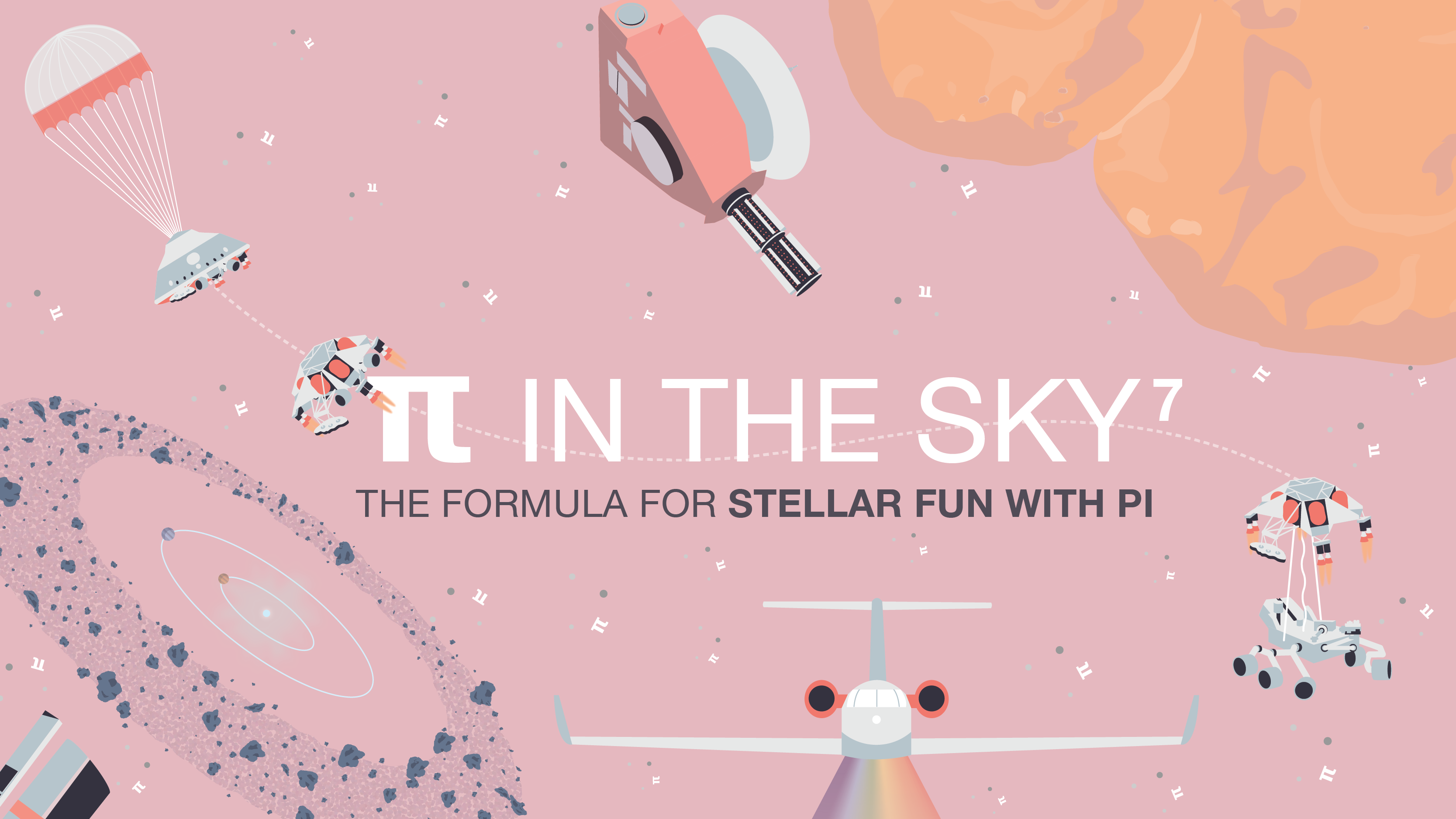
Pi Day Challenge Lessons
Here's everything you need to bring the NASA Pi Day Challenge into the classroom.
Grades 4-12
Time Varies
-
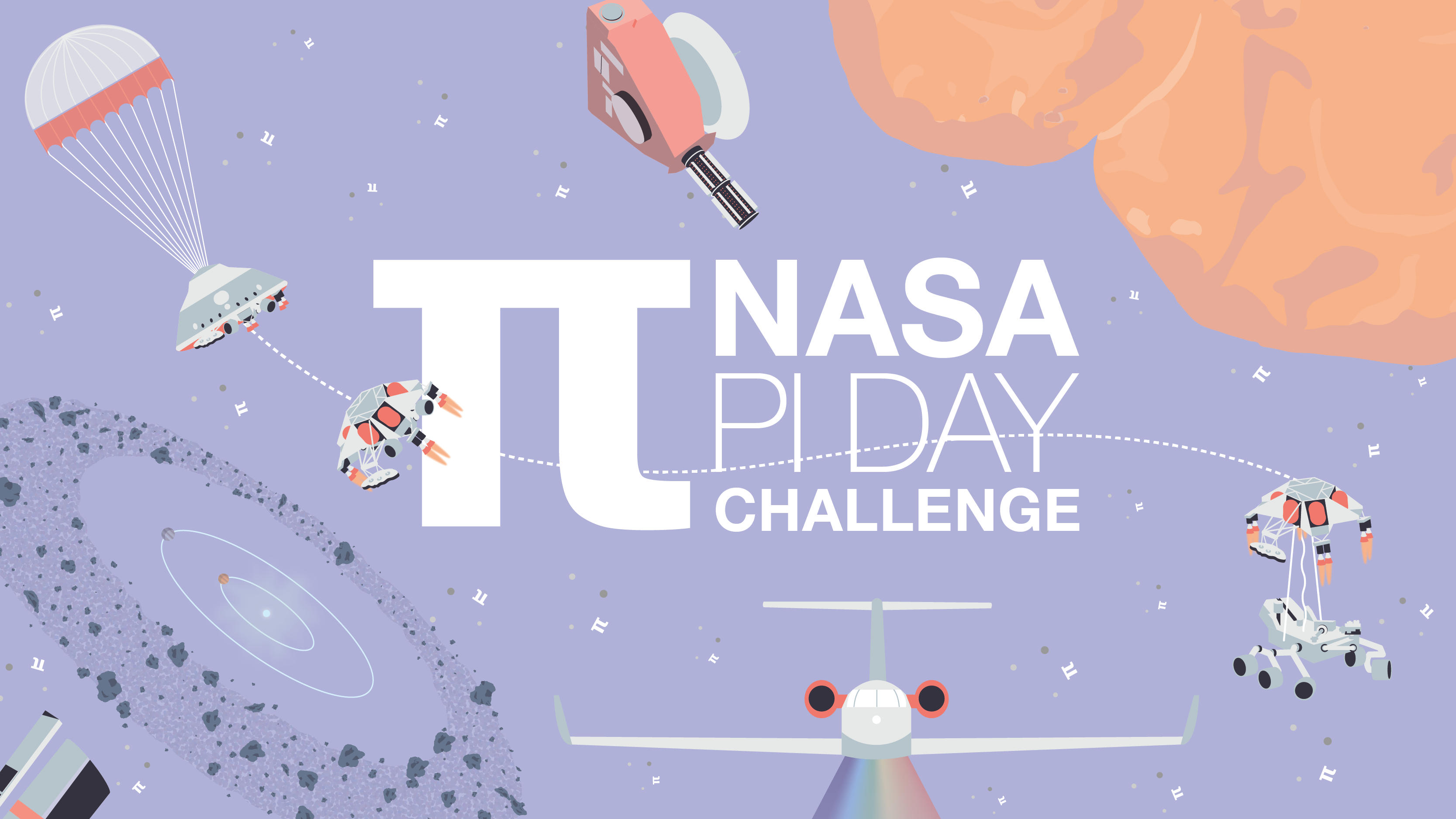
Slideshow: NASA Pi Day Challenge
The entire NASA Pi Day Challenge collection can be found in one, handy slideshow for students.
Grades 4-12
Time Varies
-
Pi Day: What’s Going ’Round
Tell us what you’re up to this Pi Day and share your stories and photos with NASA.
Join the conversation and share your Pi Day Challenge answers with @NASAJPL_Edu on social media using the hashtag #NASAPiDayChallenge
Blogs and Features
-

How Many Decimals of Pi Do We Really Need?
While you may have memorized more than 70,000 digits of pi, world record holders, a JPL engineer explains why you really only need a tiny fraction of that for most calculations.
-

Slideshow: 18 Ways NASA Uses Pi
Whether it's sending spacecraft to other planets, driving rovers on Mars, finding out what planets are made of or how deep alien oceans are, pi takes us far at NASA. Find out how pi helps us explore space.
Related Lessons for Educators
-
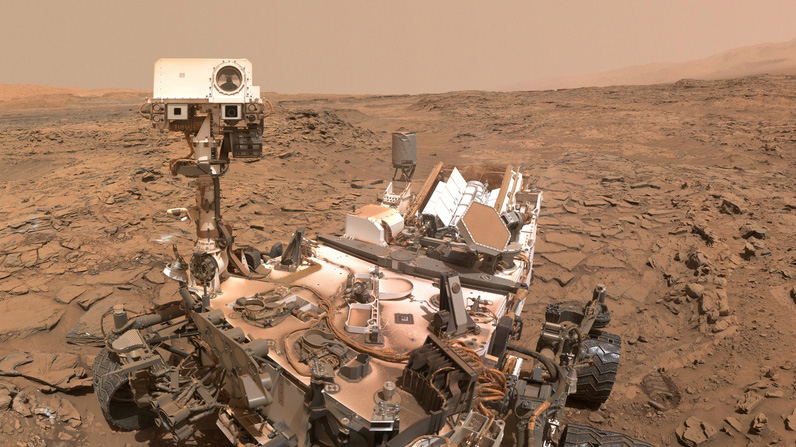
Rover Lessons
Explore a collection of standards-aligned STEM lessons all about rovers.
Grades K-12
Time Varies
-
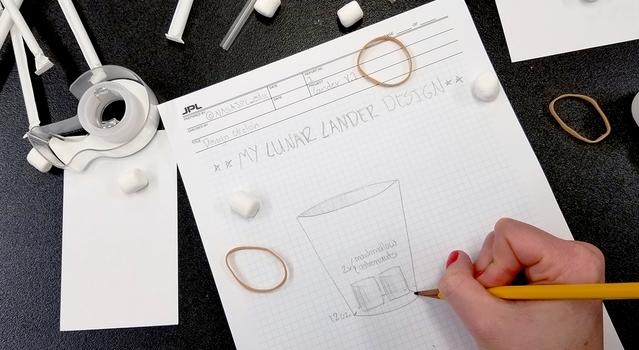
Touchdown
Students design and build a shock-absorbing system that will protect two "astronauts" when they land.
Grades 3-8
Time 30 mins - 1 hr
-
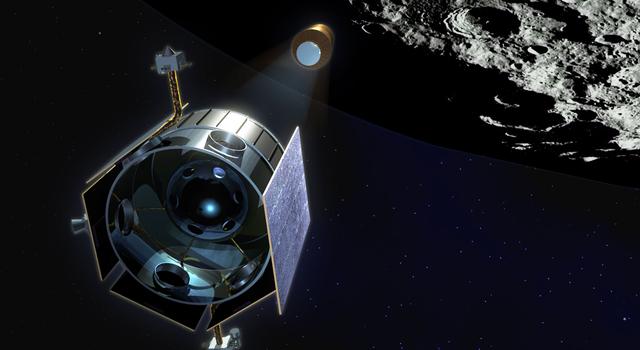
On Target
Students modify a paper cup so it can zip down a line and drop a marble onto a target.
Grades 6-12
Time 30 mins - 1 hr
-
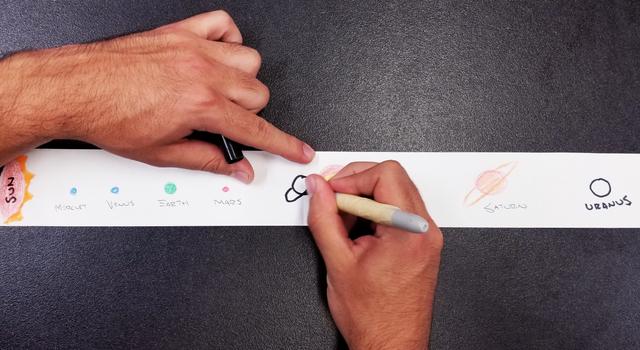
Solar System Scale Models
Explore a collection of standards-aligned STEM lessons all about the size and scale of our solar system.
Grades 1-12
Time Varies
-

Modeling an Asteroid
Lead a discussion about asteroids and their physical properties, then have students mold their own asteroids out of clay.
Grades 3-5
Time 30 mins - 1 hr
-

Math Rocks: A Lesson in Asteroid Dynamics
Students use math to investigate a real-life asteroid impact.
Grades 8-12
Time 30 mins - 1 hr
-

Asteroid Ace: A 'Pi in the Sky' Math Challenge
Students use pi to calculate the rotation rate of an asteroid from another solar system in this illustrated math problem.
Grades 11-12
Time < 30 mins
-

Climate Change Lessons
Explore a collection of standards-aligned STEM lessons all about Earth's changing climate.
Grades K-12
Time Varies
-
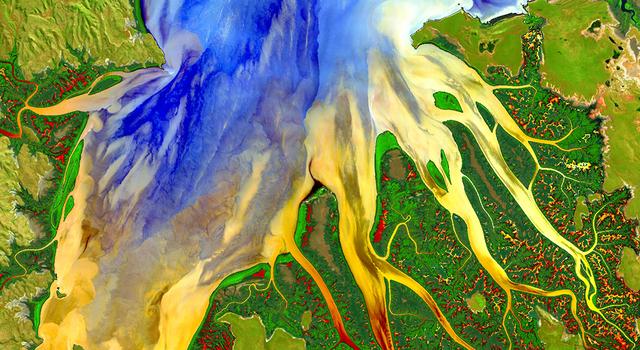
Using Light to Study Planets
Students build a spectrometer using basic materials as a model for how NASA uses spectroscopy to determine the nature of elements found on Earth and other planets.
Grades 6-11
Time < 2 hrs
-

Solar Sleuth: A 'Pi in the Sky' Math Challenge
In this illustrated math problem, students use pi and data from the Kepler space telescope to find the size of a planet outside our solar system.
Grades 6-9
Time < 30 mins
-

Exploring Exoplanets with Kepler
Students use math concepts related to transits to discover real-world data about Mercury, Venus and planets outside our solar system.
Grades 6-12
Time 30 mins - 1 hr
-
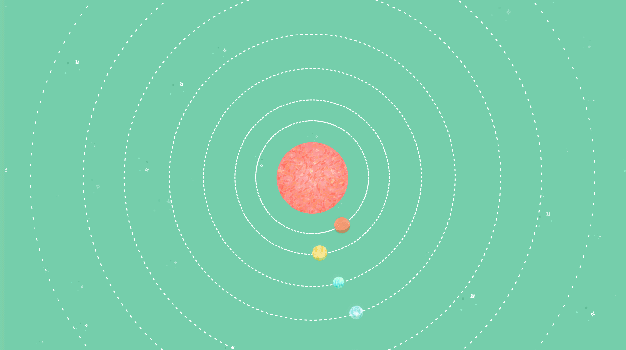
Habitable Hunt: A 'Pi in the Sky' Math Challenge
In this illustrated math problem, students use the mathematical constant pi to find the "habitable zone" around a distant star and determine which of its planets are in that zone.
Grades 11-12
Time < 30 mins
Related Activities for Students
-
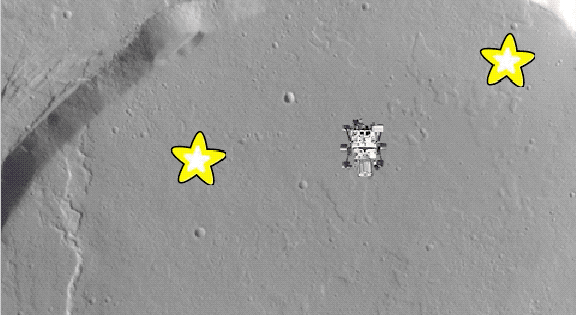
Make a Moon or Mars Rover Game
Create a Moon or Mars exploration game using Scratch, a visual programming language. Think like NASA space-mission planners to design your game!
Type Project
Subject Technology
-
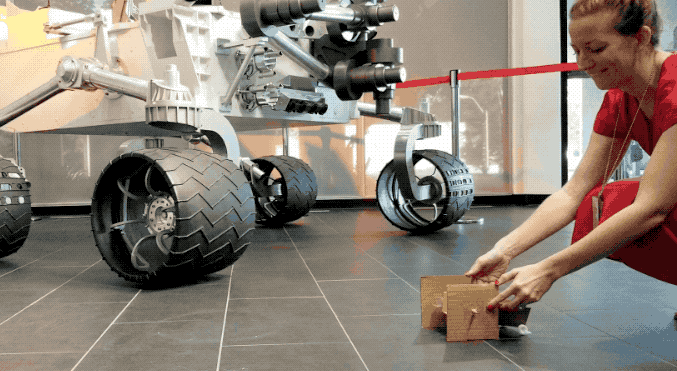
Make a Cardboard Rover
Build a rubber-band-powered rover that can scramble across a room.
Type Project
Subject Engineering
-
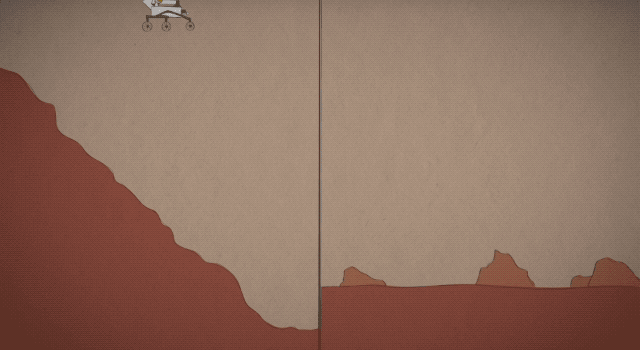
Mars in a Minute: How Do You Choose a Landing Site?
So, you want to study Mars with a lander or rover – but where exactly do you send it? Learn how scientists and engineers tackle the question of where to land on Mars in this 60-second video.
Type Video
Subject Engineering
-
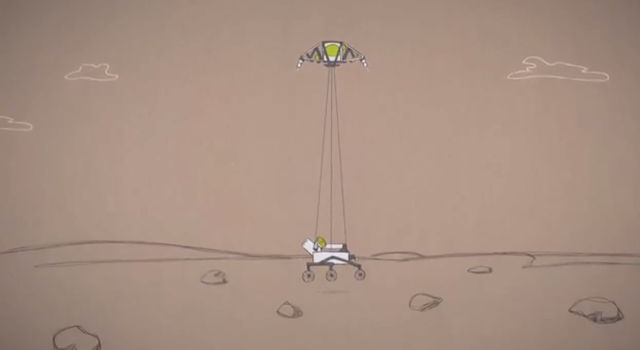
Mars in a Minute: How Do You Land on Mars?
Getting a spacecraft to Mars is one thing. Getting it safely to the ground is a whole other challenge! This 60-second video from NASA's Jet Propulsion Laboratory explains three ways to land on the surface of the Red Planet.
Type Video
Subject Engineering
-

What's That Space Rock?
Find out how to tell the difference between asteroids, comets, meteors, meteorites and other bodies in our solar system.
Type Slideshow
Subject Science
-
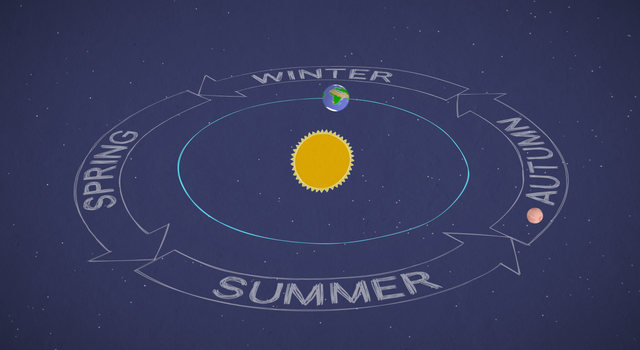
Mars in a Minute: How Long is a Year on Mars?
How long is does it take Mars to make one trip around the Sun and why is one Earth year shorter? Find out in one minute!
Type Video
Subject Science
-
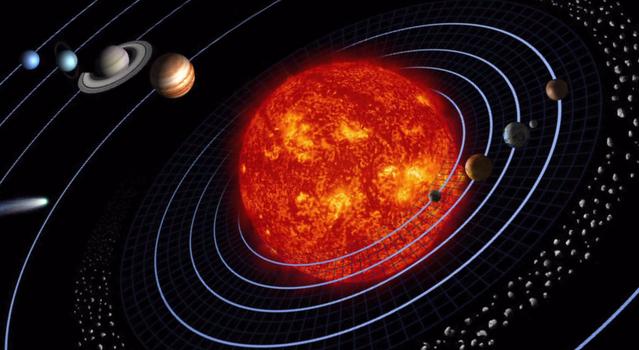
Space Place in a Snap: The Solar System's Formation
Find out how our solar system formed and how it came to be the busy place it is today.
Type Video
Subject Science
-
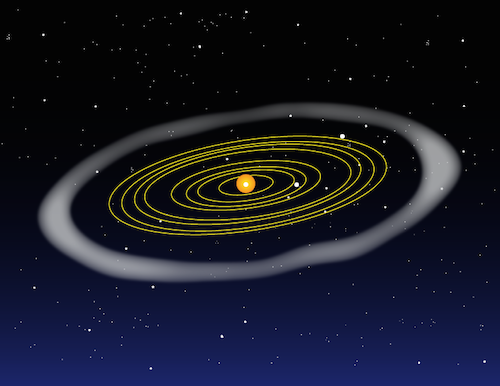
What Is the Kuiper Belt?
Learn about the Kuiper Belt and some of its famous members, Kuiper Belt Objects.
Type Article
Subject Science
-

Coral Bleaching Simulator
Adjust water temperature and pollution levels in this simulator to see what happens to a coral reef depending on the conditions you choose!
Type Interactive
Subject Science
-
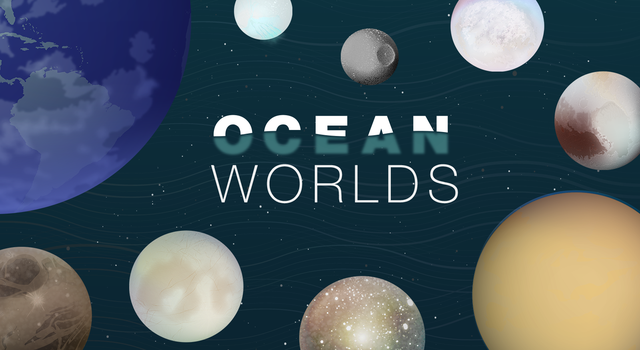
Ocean Worlds
Where might oceans – and living things – exist beyond Earth? Scientists have their eyes on these places in our own solar system.
Type Slideshow
Subject Science
-

NASA's Earth Minute: Mission to Earth?
NASA doesn't just explore outer space! It studies Earth, too, with a fleet of spacecraft and scientists far and wide.
Type Video
Subject Science
-

NASA's Earth Minute: Earth Has a Fever
Why is Earth getting hotter and what does that mean for us?
Type Video
Subject Science
NOAA Video Series: Coral Comeback
- Article: Giant Exoplanet Hunters: Look for Debris Disks
- Video: The Evolution of a Planet-Forming Disk
- Video: Birth of "Phoenix" Planets?
Multimedia
-

Infographic: Planet Pi
This poster shows some of the ways NASA scientists and engineers use the mathematical constant pi (3.14) and includes common pi formulas.
- Posters: Exoplanet Travel Bureau
Facts and Figures
Missions and Instruments
Websites
TAGS: K-12 Education, Math, Pi Day, Pi, NASA Pi Day Challenge, Events, Space, Educators, Teachers, Parents, Students, STEM, Lessons, Problem Set, Mars 2020, Perseverance, Curiosity, Mars rovers, Mars landing, MU69, Arrokoth, New Horizons, Earth science, Climate change, CORAL, NASA Expeditions, coral reefs, oceans, Spitzer, exoplanets, Beta Pictoris, stars, universe, space telescope, Climate TM
Teachable Moments | March 8, 2019
NASA Rocket Science? It's Easy As Pi
Update: March 15, 2019 – The answers to the 2019 NASA Pi Day Challenge are here! View the illustrated answer key
In the News
The excitement of Pi Day – and our annual excuse to chow down on pie – is upon us! The holiday celebrating the mathematical constant pi arrives on March 14, and with it comes the sixth installment of the NASA Pi Day Challenge from the Jet Propulsion Laboratory’s Education Office. This challenge gives students in grades 6-12 a chance to solve four real-world problems faced by NASA scientists and engineers. (Even if you’re done with school, they’re worth a try for the bragging rights.)

Visit the "Pi in the Sky 6" lesson page to explore classroom resources and downloads for the 2019 NASA Pi Day Challenge. Image credit: NASA/JPL-Caltech/Kim Orr | + Expand image
Why March 14?
Pi, the ratio of a circle’s circumference to its diameter, is what is known as an irrational number. As an irrational number, its decimal representation never ends, and it never repeats. Though it has been calculated to trillions of digits, we use far fewer at NASA. In fact, 3.14 is a good approximation, which is why March 14 (or 3/14 in U.S. month/day format) came to be the date that we celebrate this mathematical marvel.
The first-known Pi Day celebration occurred in 1988. In 2009, the U.S. House of Representatives passed a resolution designating March 14 as Pi Day and encouraging teachers and students to celebrate the day with activities that teach students about pi.
The 2019 Challenge
This year’s NASA Pi Day Challenge features four planetary puzzlers that show students how pi is used at the agency. The challenges involve weathering a Mars dust storm, sizing up a shrinking storm on Jupiter, estimating the water content of a rain cloud on Earth and blasting ice samples with lasers!
›Take on the 2019 NASA Pi Day Challenge!
The Science Behind the Challenge
In late spring of 2018, a dust storm began stretching across Mars and eventually nearly blanketed the entire planet in thick dust. Darkness fell across Mars’ surface, blocking the vital sunlight that the solar-powered Opportunity rover needed to survive. It was the beginning of the end for the rover’s 15-year mission on Mars. At its height, the storm covered all but the peak of Olympus Mons, the largest known volcano in the solar system. In the Deadly Dust challenge, students must use pi to calculate what percentage of the Red Planet was covered by the dust storm.
The Terra satellite, orbiting Earth since 1999, uses the nine cameras on its Multi-Angle Imaging SpectroRadiometer, or MISR, instrument to provide scientists with unique views of Earth, returning data about atmospheric particles, land-surface features and clouds. Estimating the amount of water in a cloud, and the potential for rainfall, is serious business. Knowing how much rain may fall in a given area can help residents and first responders prepare for emergencies like flooding and mudslides. In Cloud Computing, students can use their knowledge of pi and geometric shapes to estimate the amount of water contained in a cloud.
Jupiter’s Great Red Spot, a giant storm that has been fascinating observers since the early 19th century, is shrinking. The storm has been continuously observed since the 1830s, but measurements from spacecraft like Voyager, the Hubble Space Telescope and Juno indicate the storm is getting smaller. How much smaller? In Storm Spotter, students can determine the answer to that very question faced by scientists.
Scientists studying ices found in space, such as comets, want to understand what they’re made of and how they interact and react with the environment around them. To see what molecules may form in space when a comet comes into contact with solar wind or sunlight, scientists place an ice sample in a vacuum and then expose it to electrons or ultraviolet photons. Scientists have analyzed samples in the lab and detected molecules that were later observed in space on comet 67P/Churyumov-Gerasimenko. To analyze the lab samples, an infrared laser is aimed at the ice, causing it to explode. But the ice will explode only if the laser is powerful enough. Scientist use pi to figure out how strong the laser needs to be to explode the sample – and students can do the same when they solve the Icy Intel challenge.
Explore More
Participate
-
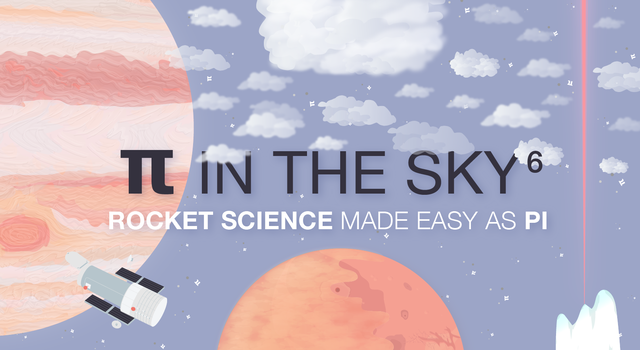
Pi Day Challenge Lessons
Here's everything you need to bring the NASA Pi Day Challenge into the classroom.
Grades 4-12
Time Varies
-

Slideshow: NASA Pi Day Challenge
The entire NASA Pi Day Challenge collection can be found in one, handy slideshow for students.
Grades 4-12
Time Varies
-
Pi Day: What’s Going ’Round
Tell us what you’re up to this Pi Day and share your stories and photos with NASA.
Join the conversation and share your Pi Day Challenge answers with @NASAJPL_Edu on social media using the hashtag #NASAPiDayChallenge
Blogs and Features
-

How Many Decimals of Pi Do We Really Need?
While you may have memorized more than 70,000 digits of pi, world record holders, a JPL engineer explains why you really only need a tiny fraction of that for most calculations.
-

Slideshow: 18 Ways NASA Uses Pi
Whether it's sending spacecraft to other planets, driving rovers on Mars, finding out what planets are made of or how deep alien oceans are, pi takes us far at NASA. Find out how pi helps us explore space.
Related Activities
-
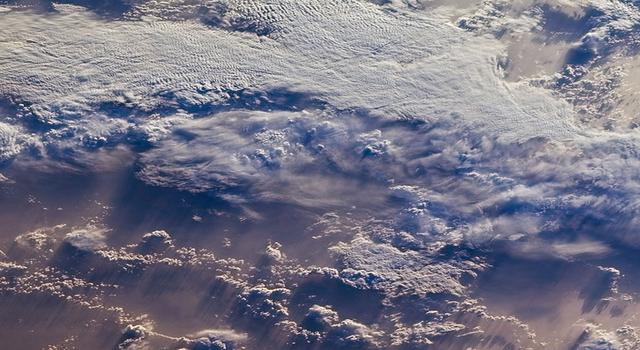
The Sky and Dichotomous Key
Students learn about cloud types to be able to predict inclement weather. They will then identify areas in the school affected by severe weather and develop a solution to ease the impacts of rain, wind, heat or sun.
Grades K-3
Time 30 mins - 1 hr
-

Precipitation Towers: Modeling Weather Data
This lesson uses stacking cubes as a way to graph precipitation data, comparing the precipitation averages and seasonal patterns for several locations.
Grades K-5
Time 30 mins - 1 hr
-
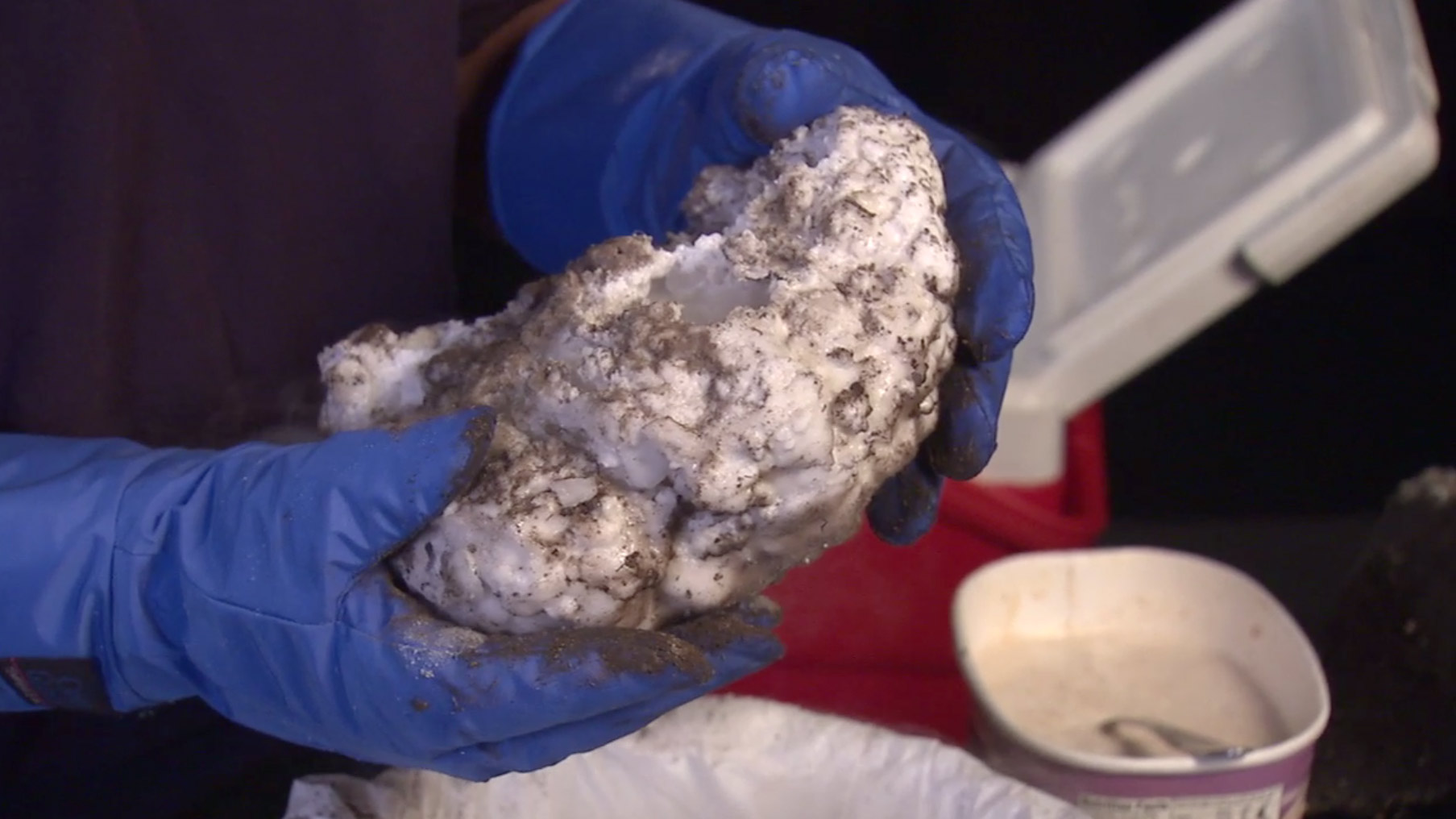
Create a Comet with Dry Ice
Build an icy model of a comet out of dry ice -- complete with shooting jets! -- as a demonstration for students.
Grades 2-5
Time < 30 mins
-
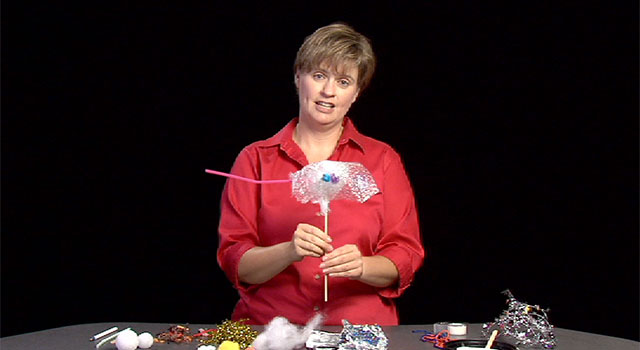
Comet on a Stick
Students build their own comet models using craft materials.
Grades 2-8
Time 30 mins - 1 hr
-

Modeling the Water Budget
Students use a spreadsheet model to understand droughts and the movement of water in the water cycle.
Grades 5-8
Time 30 min - 1 hr
-
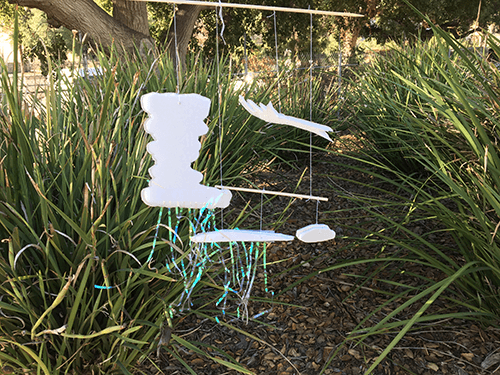
Make a Cloud Mobile - NASA SpacePlace
This mobile of feathery clouds will twist and turn in a gentle breeze. It even includes rain clouds with sparkling showers!
Grades 3-6
Multimedia
-

Infographic: Planet Pi
This poster shows some of the ways NASA scientists and engineers use the mathematical constant pi (3.14) and includes common pi formulas.
-

Game: Comet Quest - NASA SpacePlace
Control a spacecraft and use it to explore an icy comet!
Facts and Figures
- Mars
- Jupiter
- Earth
- Comets
- Comet 67P/ Churyumov-Gerasimenko
- What is a Laser? – NASA SpacePlace
- What Is the Water Cycle? – Climate Kids
Missions and Instruments
- Hubble Space Telescope
- Voyager
- Juno
- Opportunity Rover
- Rosetta
- MISR instrument
- Ice Spectroscopy Laboratory
Websites
TAGS: Pi Day, K-12, STEM, Science, Engineering, Technology, Math, Pi, Educators, Teachers, Informal Education, Museums, Earth Science, Earth, Climate Change
Teachable Moments | March 16, 2016
Pi Day the NASA Way
UPDATE: March 16, 2016 – The answers the the NASA Pi Day Challenge are now available as an illustrated answer key. Download a poster version of the answer key on the "Pi in the Sky 3" activity page.
This post was originally published on March 9, 2016
In the News
Pi Day, the informal holiday beloved by math enthusiasts – and even by the math averse – is almost here! March 14 marks the yearly celebration of the mathematical constant (pi), which represents the ratio of a circle’s circumference to its diameter. More than just a number for mathematicians, pi has all sorts of applications in the real world, including on missions developed by NASA’s Jet Propulsion Laboratory. And as a holiday that encourages more than a little creativity – whether it’s making pi-themed pies or reciting from memory as many of the never-ending decimals of pi as possible (the record is 70,030 digits) – it’s a great way to have fun and celebrate the M in STEM.
Why March 14?
Pi is what’s known as an irrational number, meaning its decimal representation never ends and it never repeats. It has been calculated to more than one trillion digits, but 3.14 is often a precise enough approximation, hence the celebration occurring on March 14, or 3/14 (when written in US month/day format). The first known celebration occurred in 1988, and in 2009, the US House of Representatives passed a resolution designating March 14 as Pi Day and encouraging teachers and students to celebrate the day with activities that teach students about pi.
Why It’s Important
Pi Day is lots of fun, but its importance lies in the role that pi plays in the everyday work of scientists and engineers at JPL.
Fred Calef, a geospatial information scientist at JPL, uses pi to make measurements – like perimeter, area and volume – of features on Mars. “I use pi to measure the circularity of features, or how round or compact they are," said Calef. "Craters become more elliptical if the projectile hits the surface at a lower angle, so I use pi to measure how round a crater is to see if it impacted at a low angle.”
"We use pi every day commanding rovers on Mars," said Hallie Gengl, a rover planner for the Mars Exploration Rover Opportunity, "Everything from taking images, turning the wheels, driving around, operating the robotic arm, and even talking to Earth.”
Bryana Henderson, who specializes in planetary ices, uses lasers to explode ice samples and study their composition. "I use pi to calculate the width of my laser beam, which in turn can be used to calculate the amount of energy, or fluence, that hits my ice sample," said Henderson. "A larger fluence equals a bigger explosion in the ice, so this is a very important parameter for us."
The Pi Day Challenge
JPL has released the third installment of its popular Pi Day challenge, which gives students and the public a chance to put their pi skills to the test to solve some of the same problems NASA scientists and engineers do. The set of four illustrated math problems are compiled into a graphic (as well as classroom handouts) designed for students in grade 4 through high school – but fun for all!

› Check out this year's Pi Day challenge!
This year’s problem set shows how pi can be used to map the surface of Saturn’s hazy moon Titan, track the Mars Reconnaissance Orbiter as it explores the Red Planet, keep Earth’s satellites powered as Mercury transits the sun, and put the Juno spacecraft into orbit around Jupiter.
“For Pi Day, we like to give students and the public a glimpse into how math is used at JPL through questions that feature current events involving our space missions,” said Ota Lutz, an education specialist at JPL who helped create the problem set. “For instance, to put the Juno spacecraft into orbit around Jupiter on July 4, engineers will have to slow the spacecraft just the right amount. In the Pi Day challenge, students use pi to calculate that change in velocity.”
In the challenge, students will also use pi to calculate how much sunlight is blocked by our solar system’s innermost planet as it passes between Earth and the sun. This year, Pi Day comes just a few months before the May 9 transit of Mercury, making this a timely problem.
On March 16, the answers to all four problems and the steps needed to find those answers will be released in a companion infographic on the Pi Day challenge activity page.
In addition to the Pi Day challenge, JPL is inviting the public to share their Pi Day pictures and stories online. On March 14, JPL will join in on the fun with Pi Day photos and stories from the lab.
› Share Your Pi Day photos and storiesTo see a compilation of all 12 Pi Day challenge questions optimized for mobile devices and screen readers, visit: http://www.jpl.nasa.gov/edu/nasapidaychallenge
Explore More
Pi Day Challenges
Multimedia
Facts and Figures
Missions
Websites
TAGS: pi, pi day, math, mathematics




